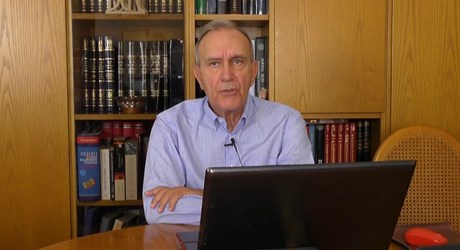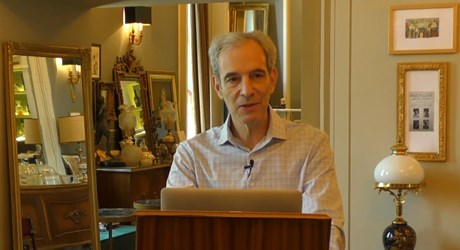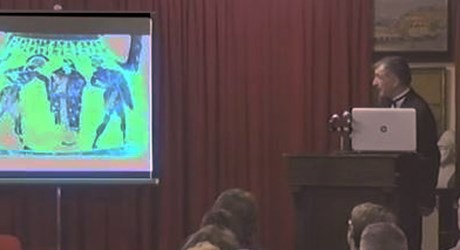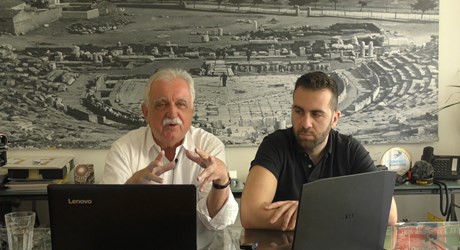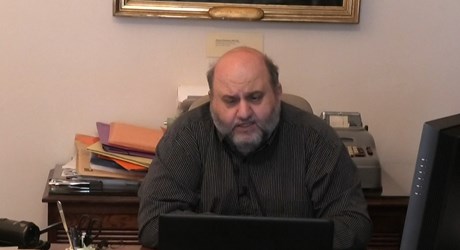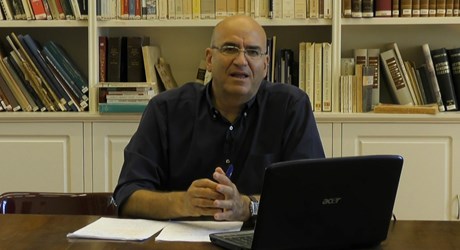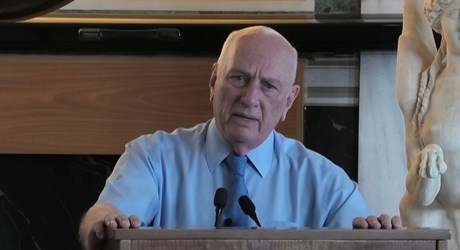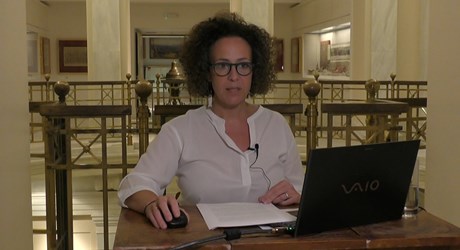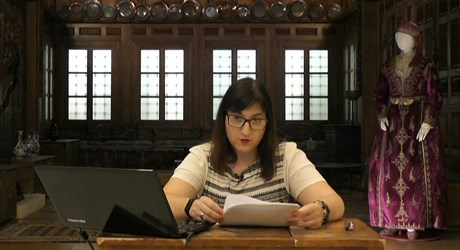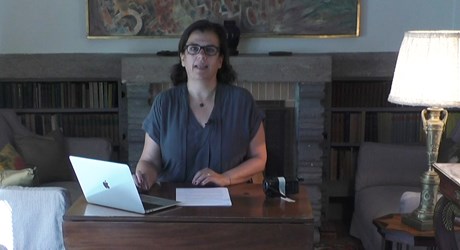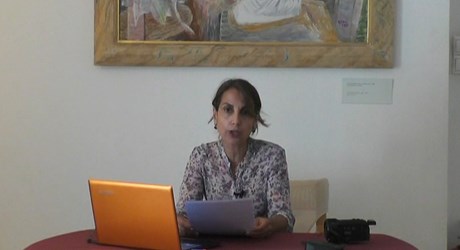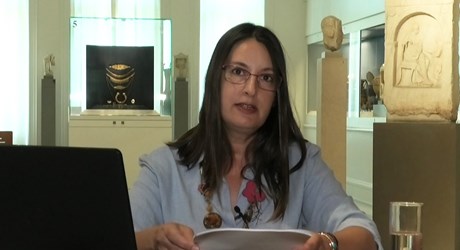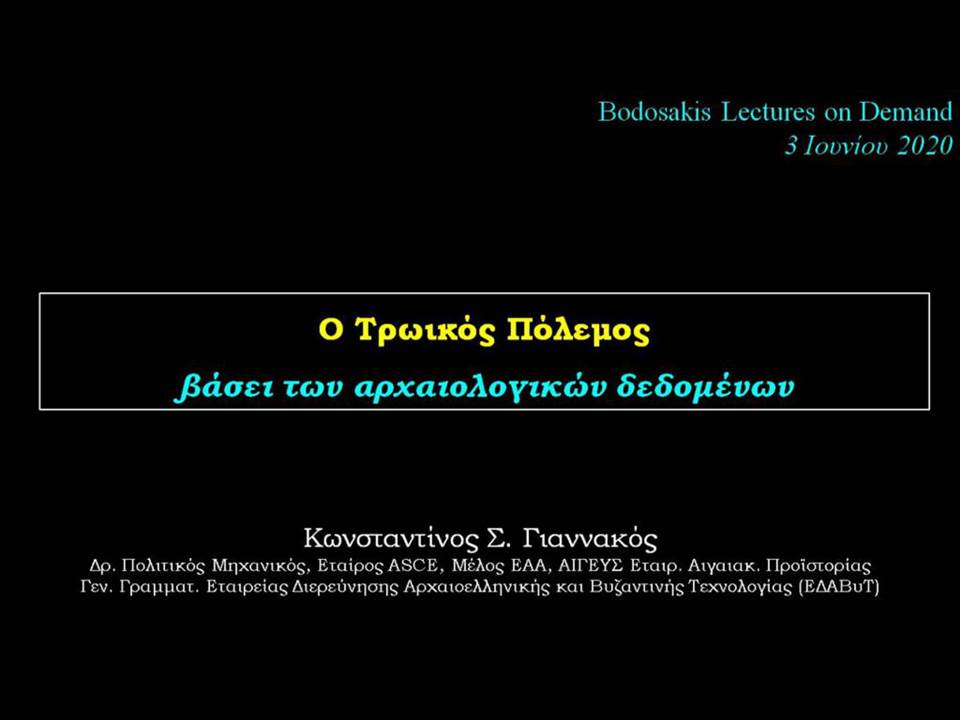
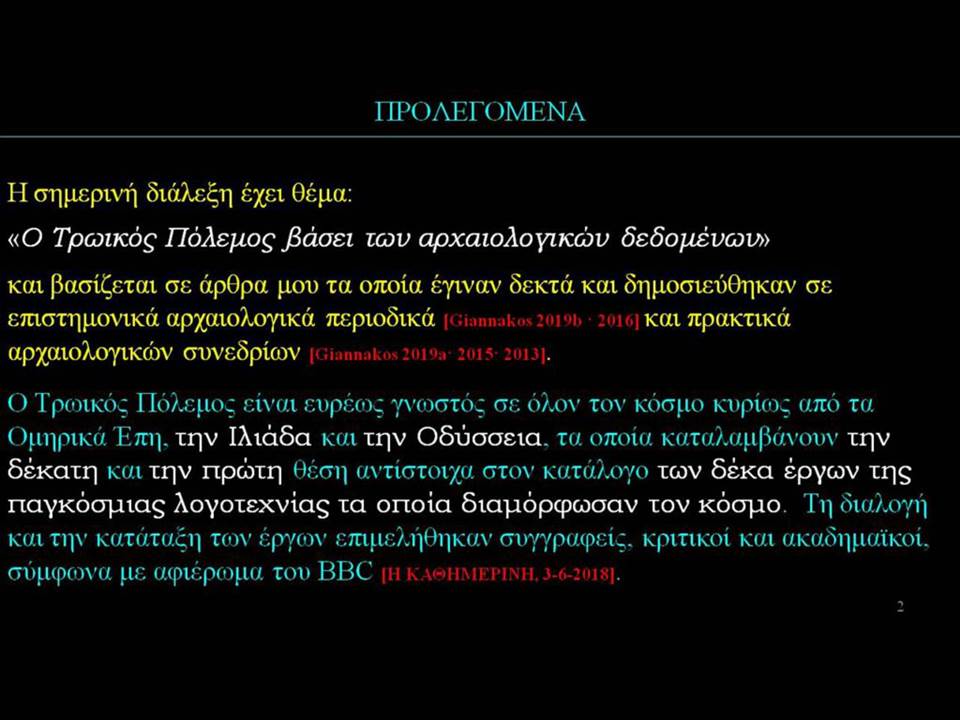
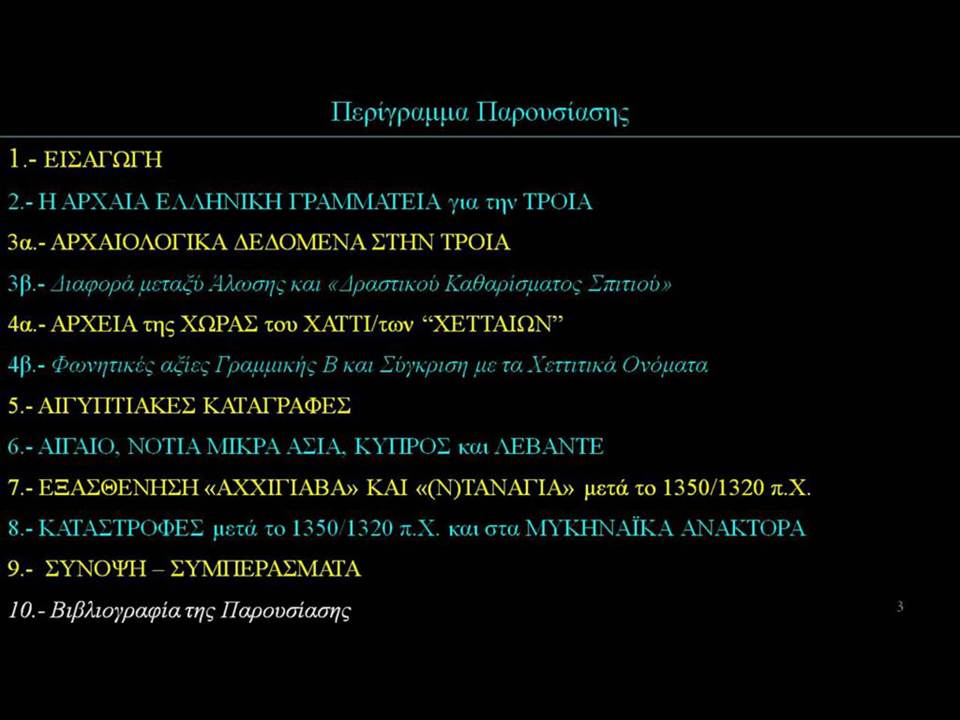
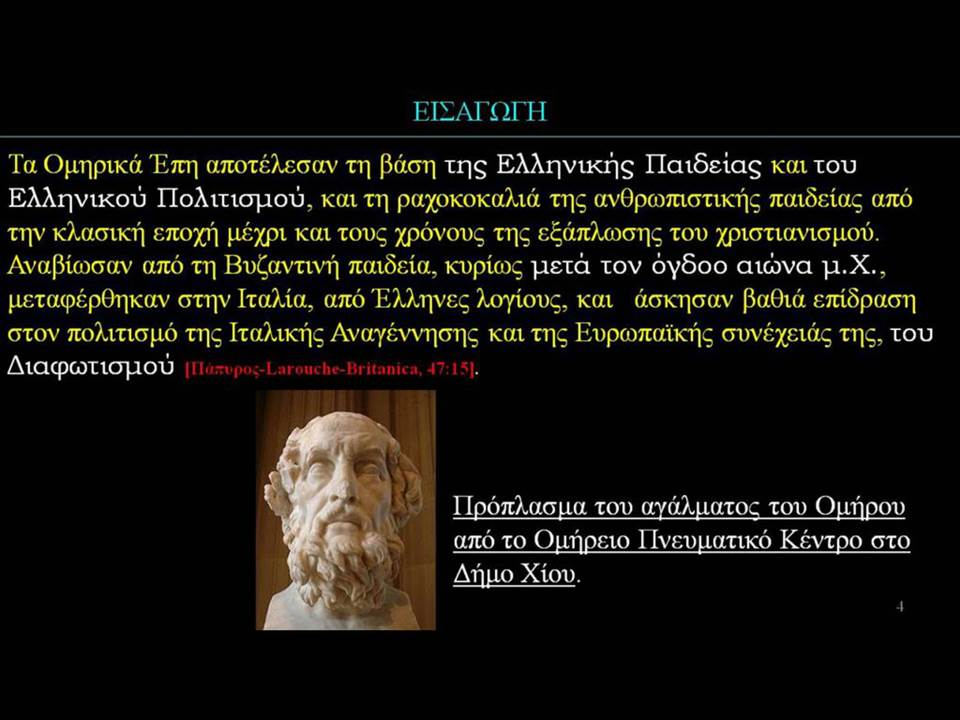
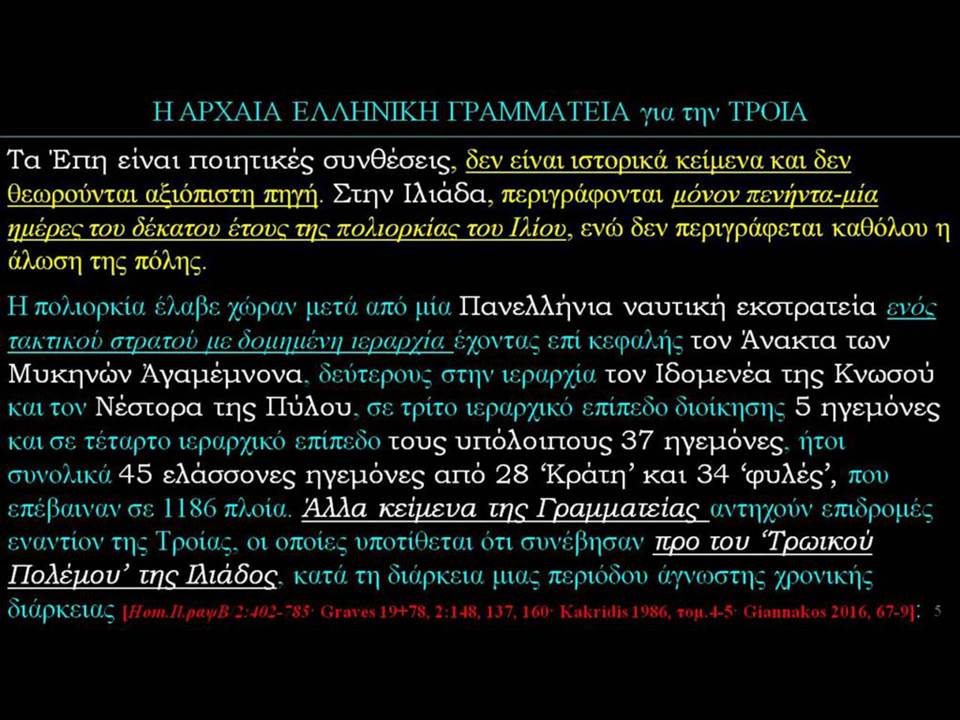
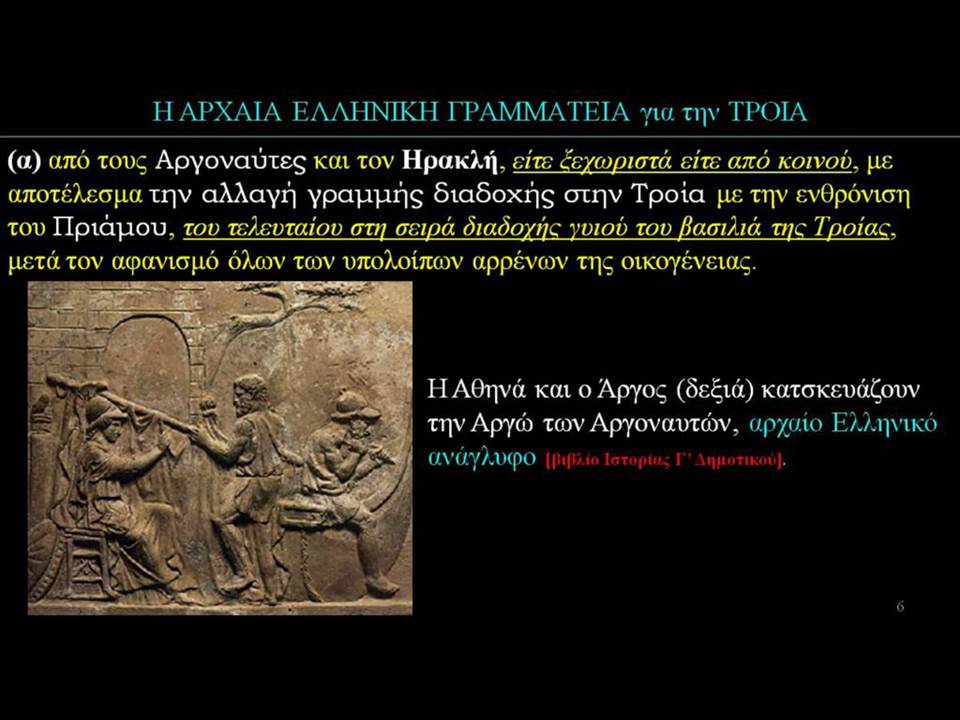
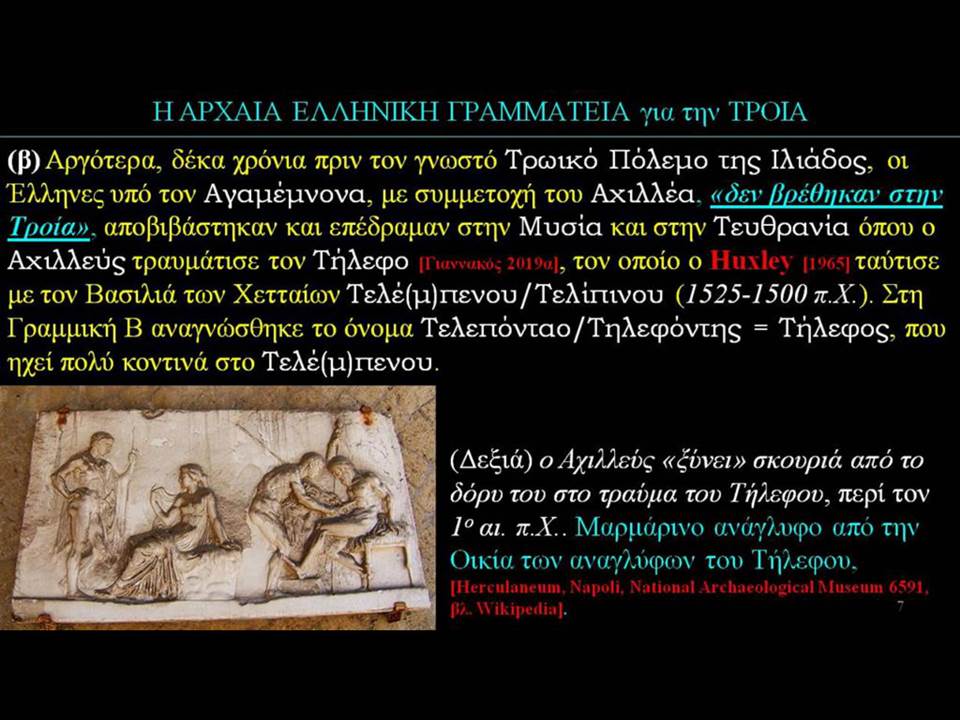
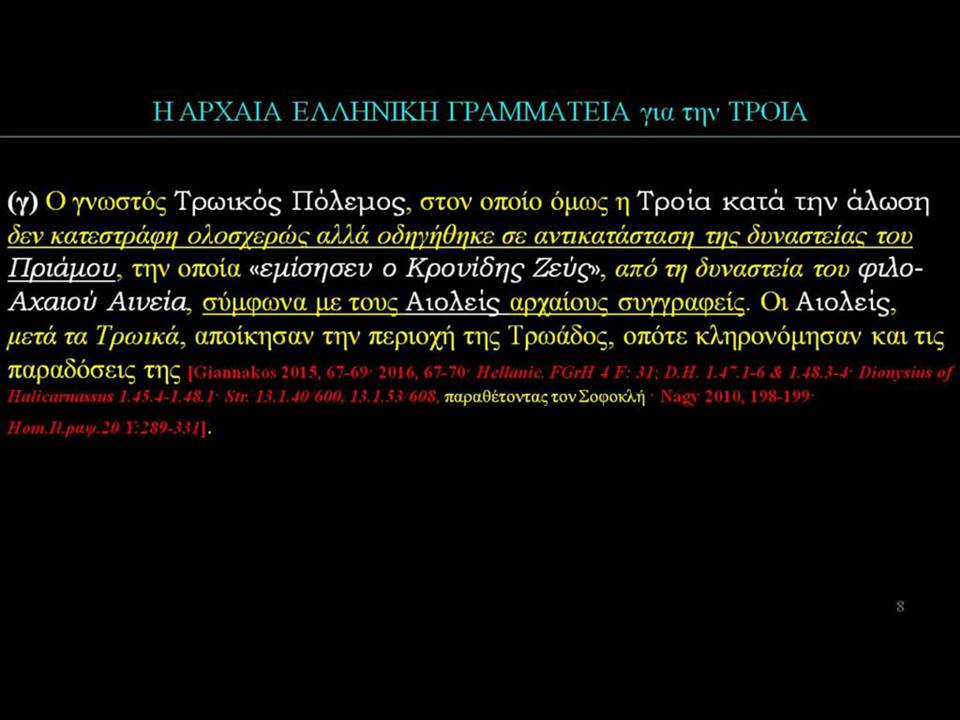
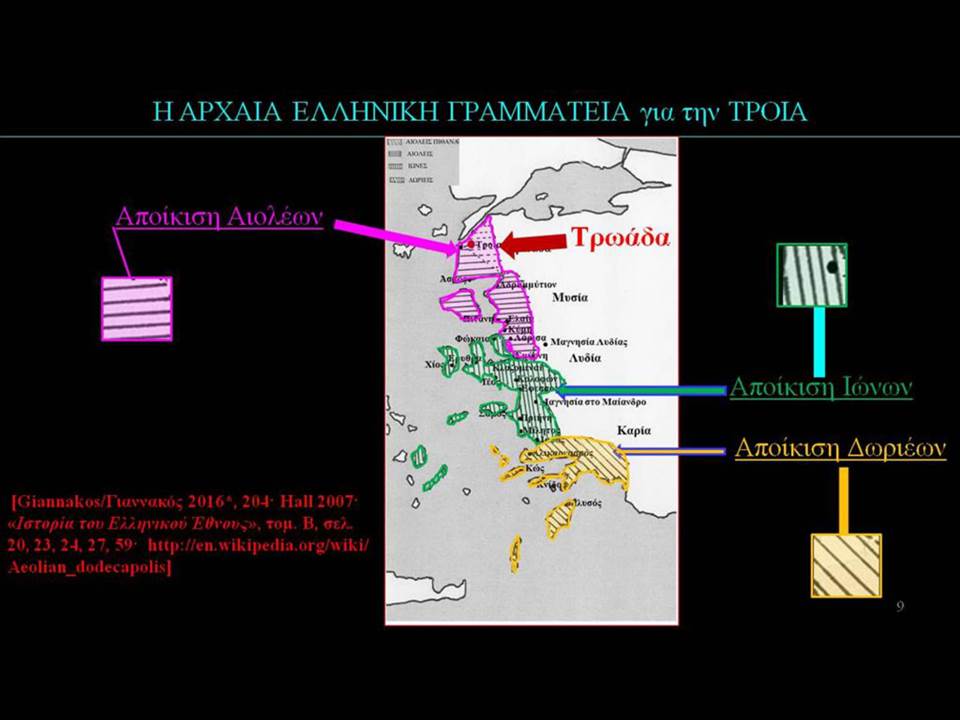
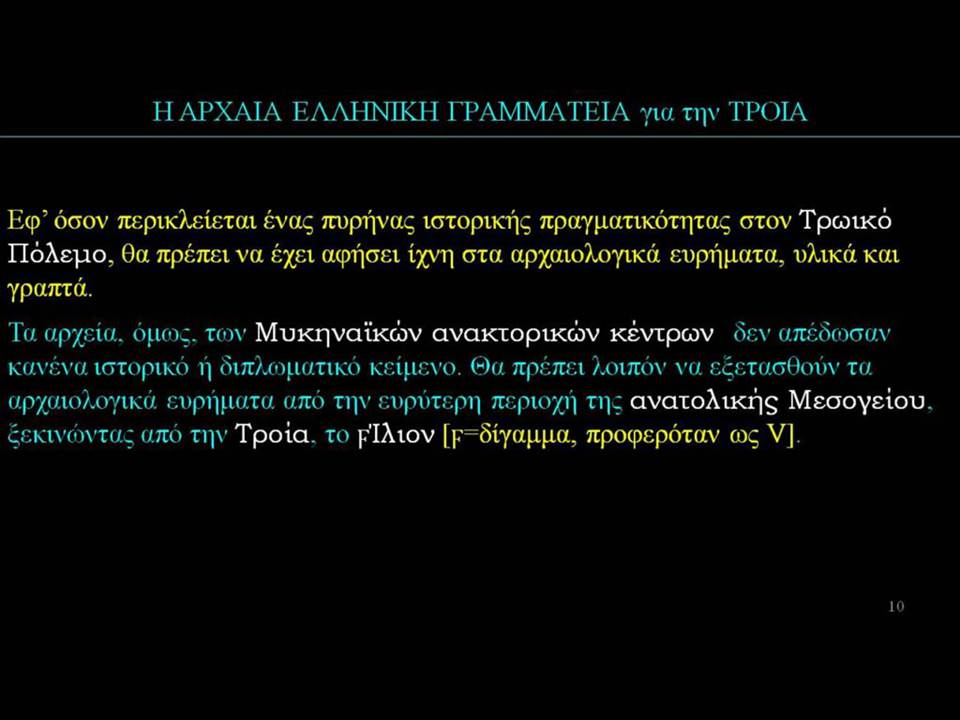
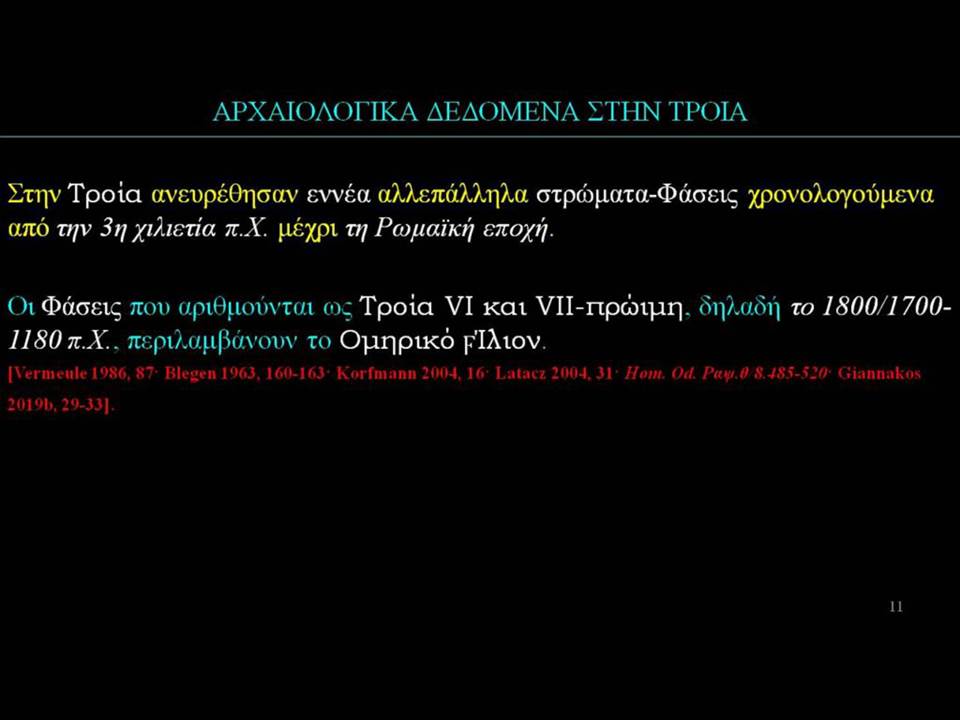
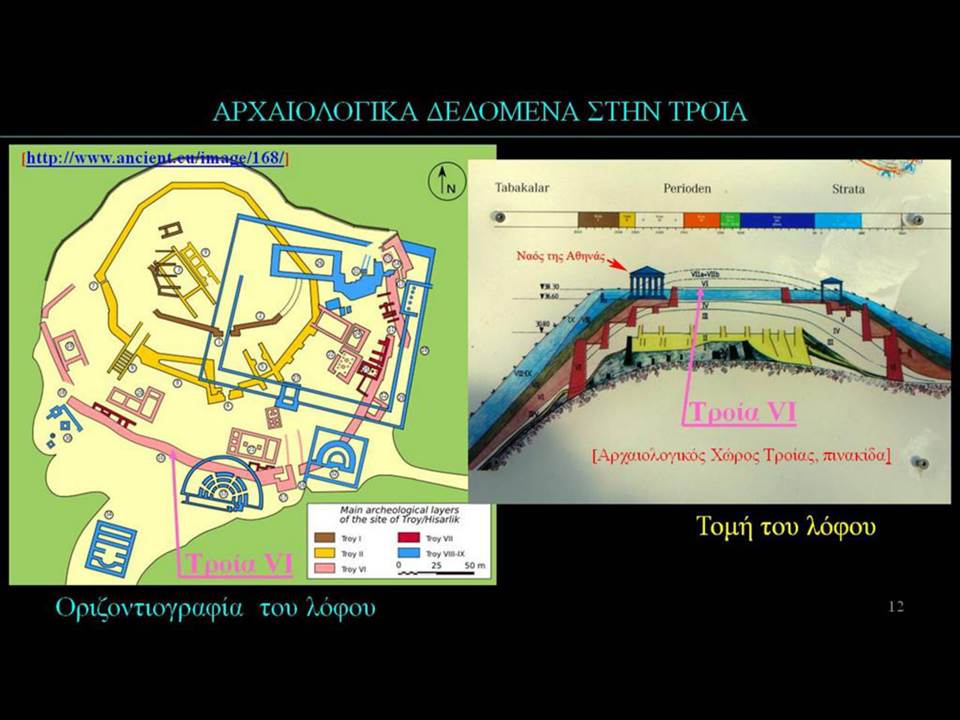
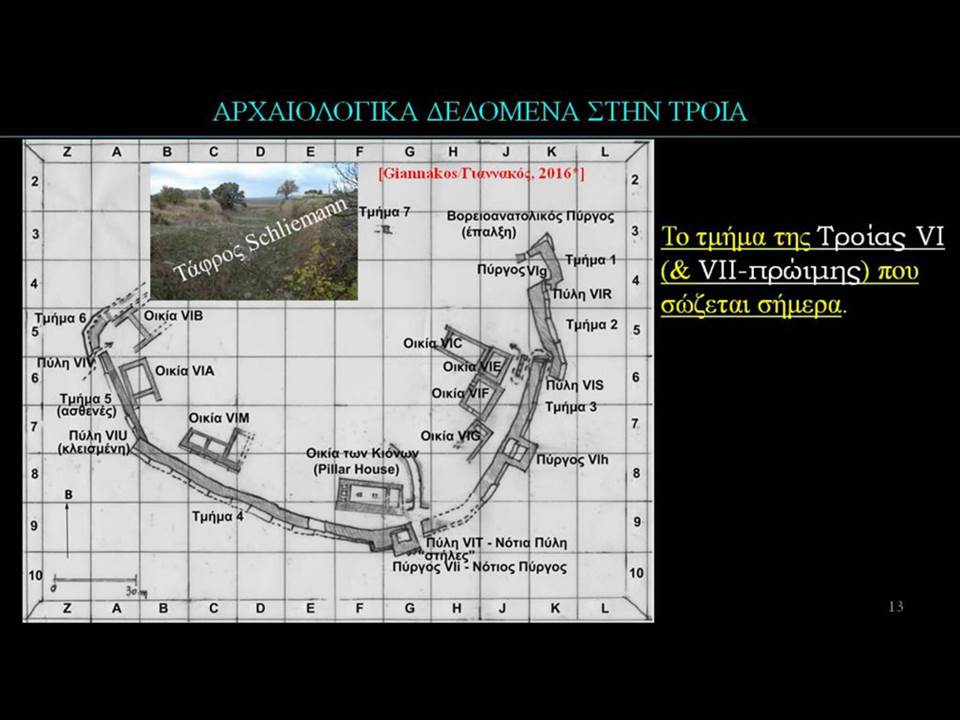
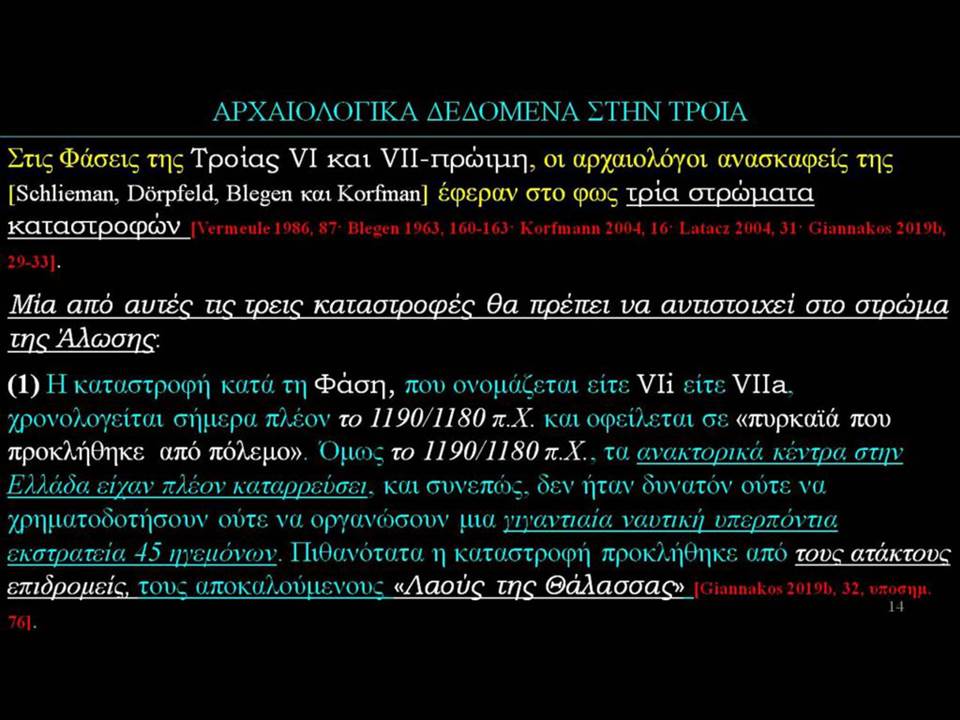
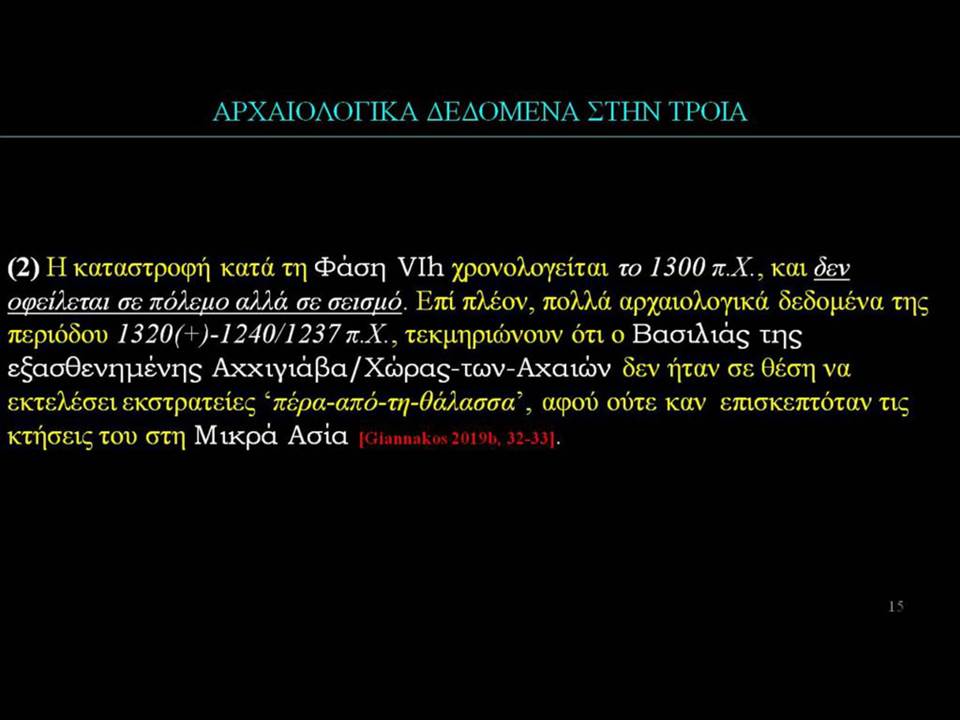
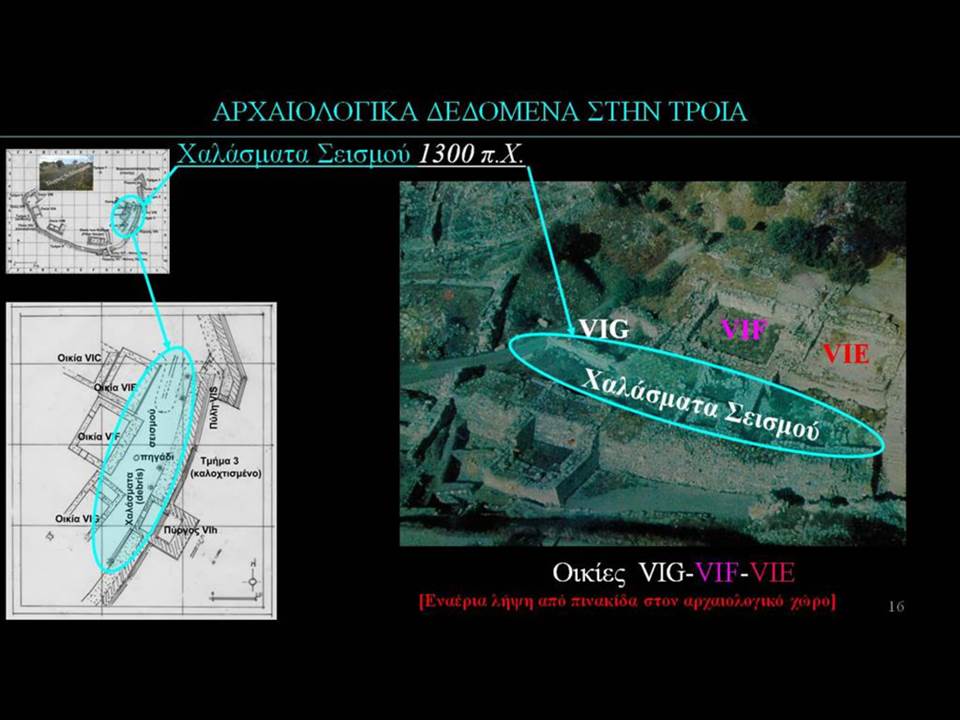
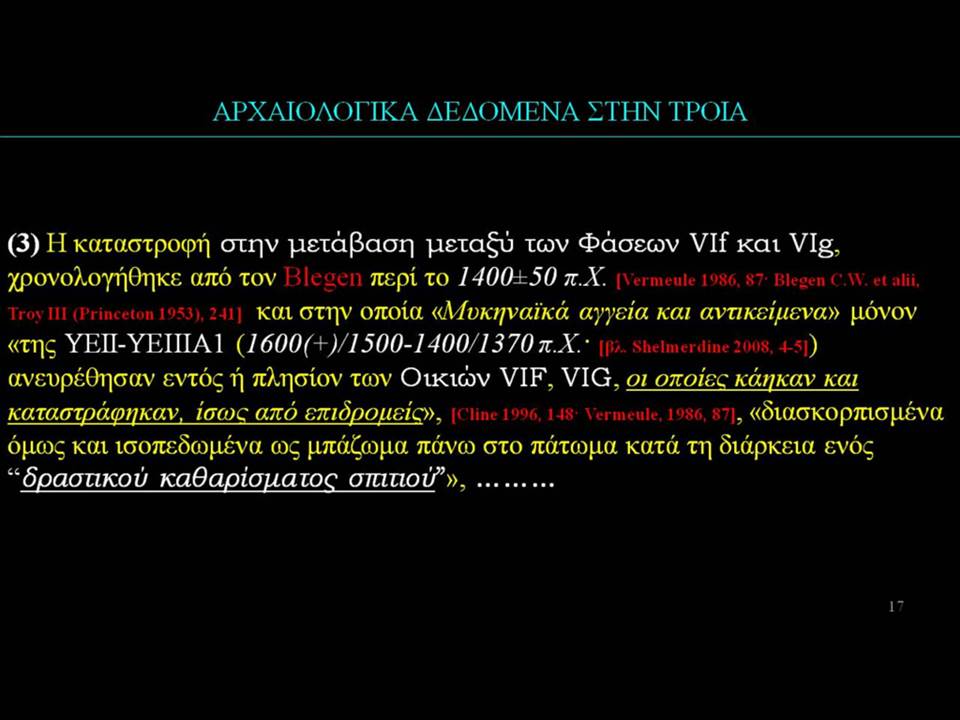
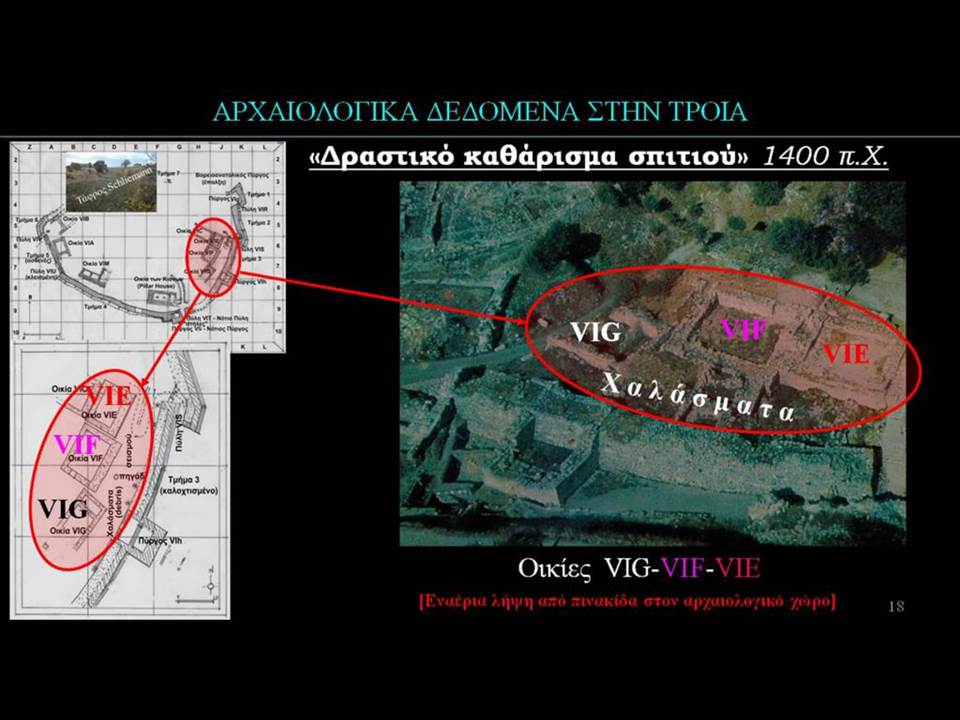
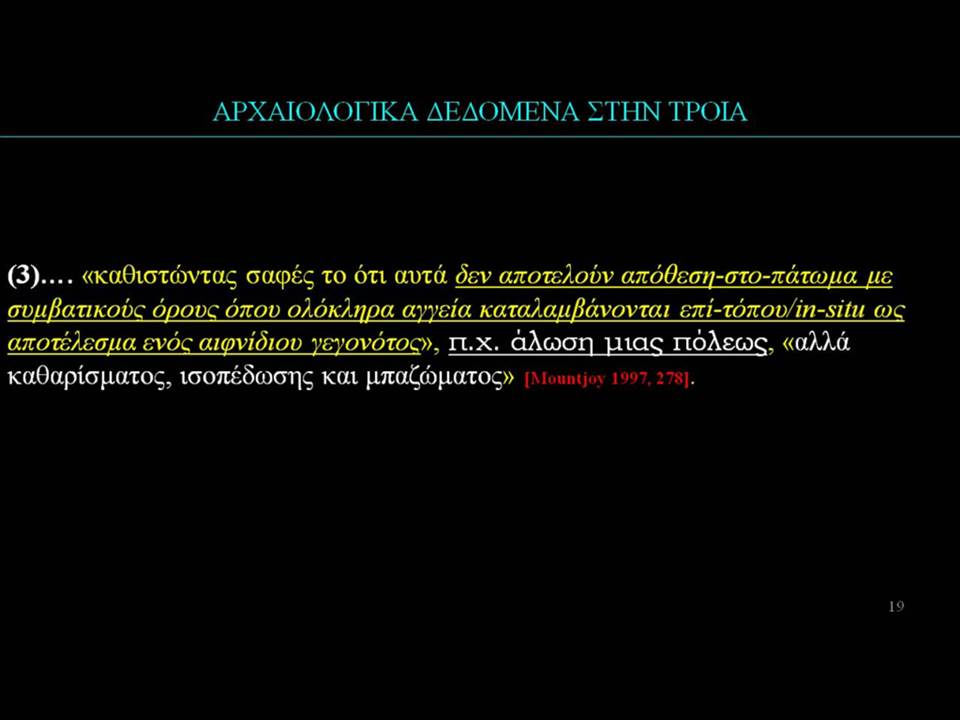

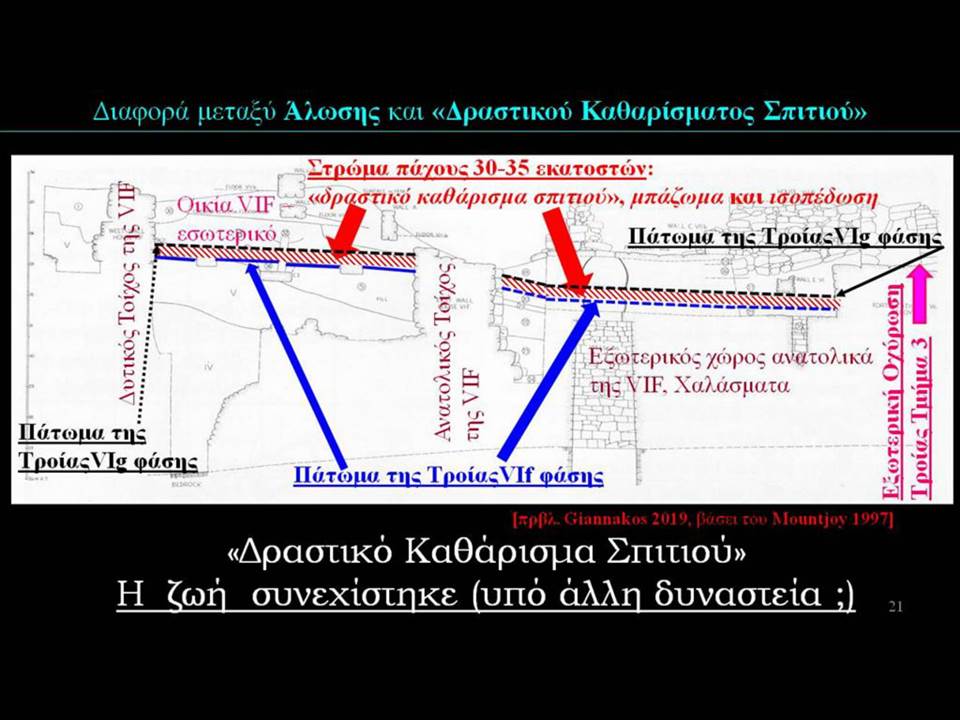
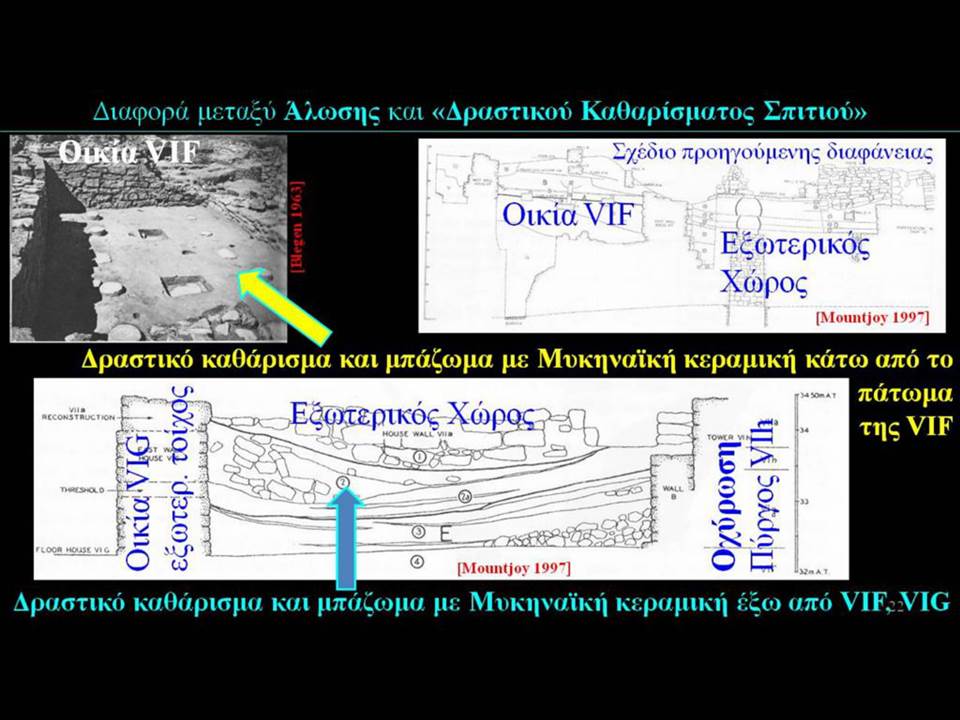
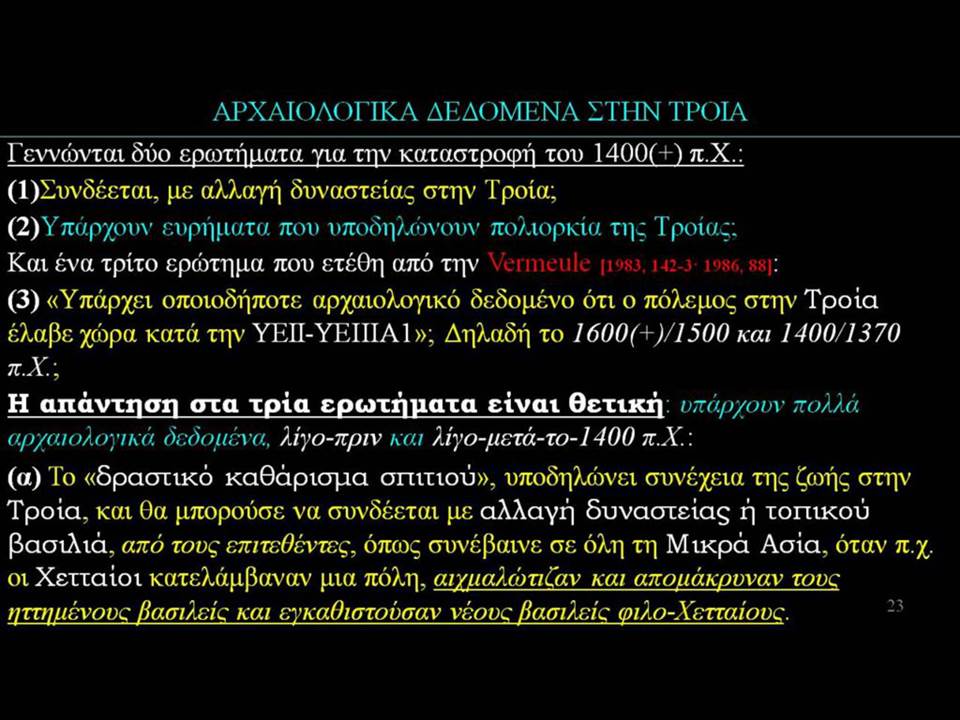
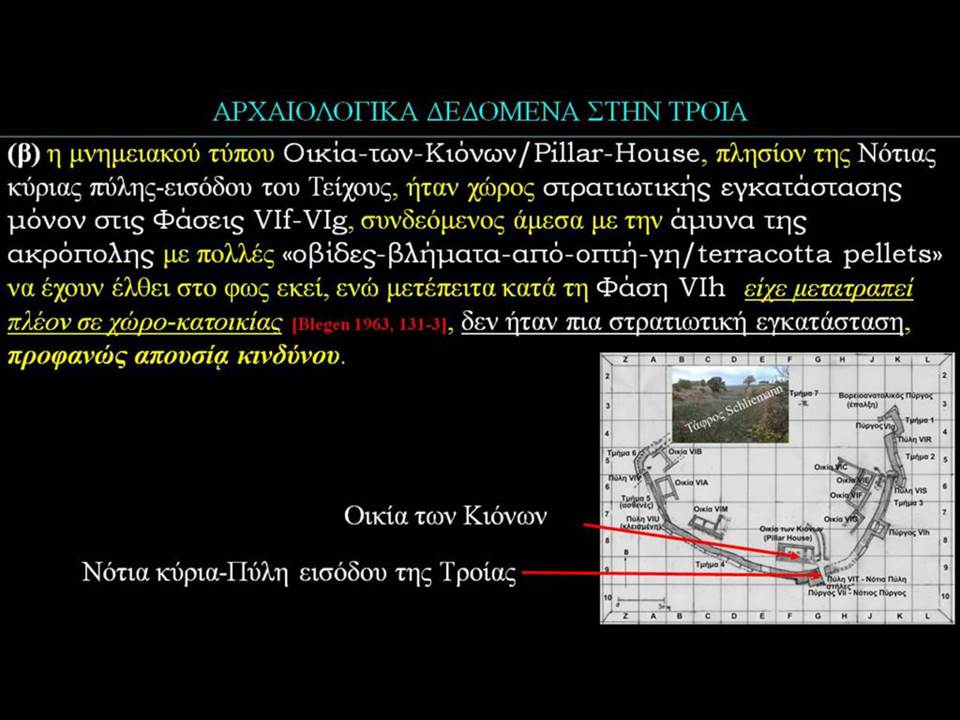
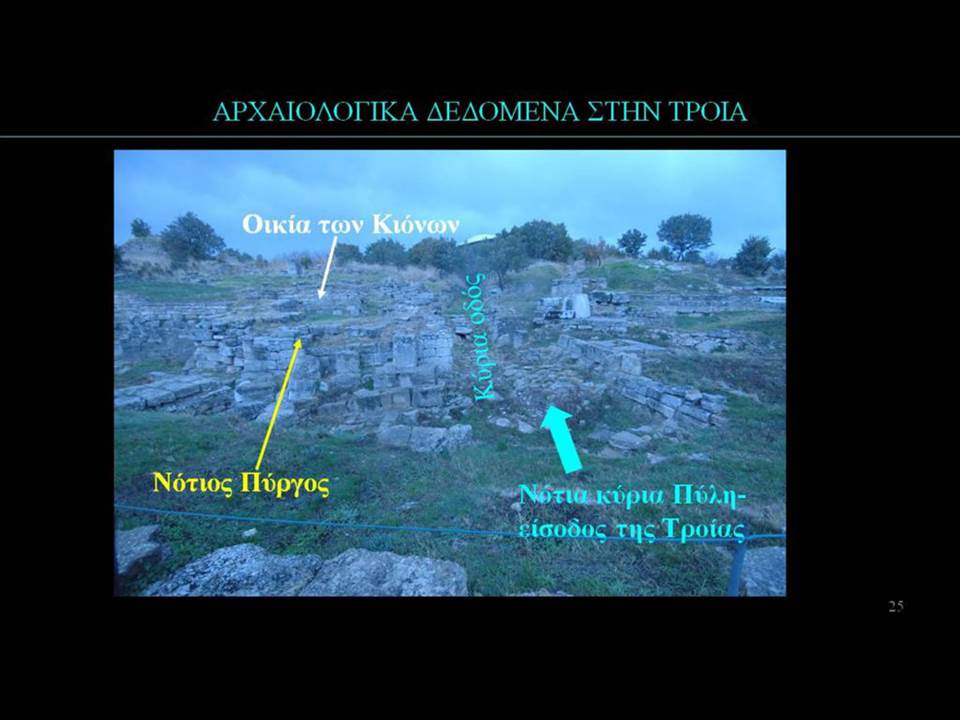
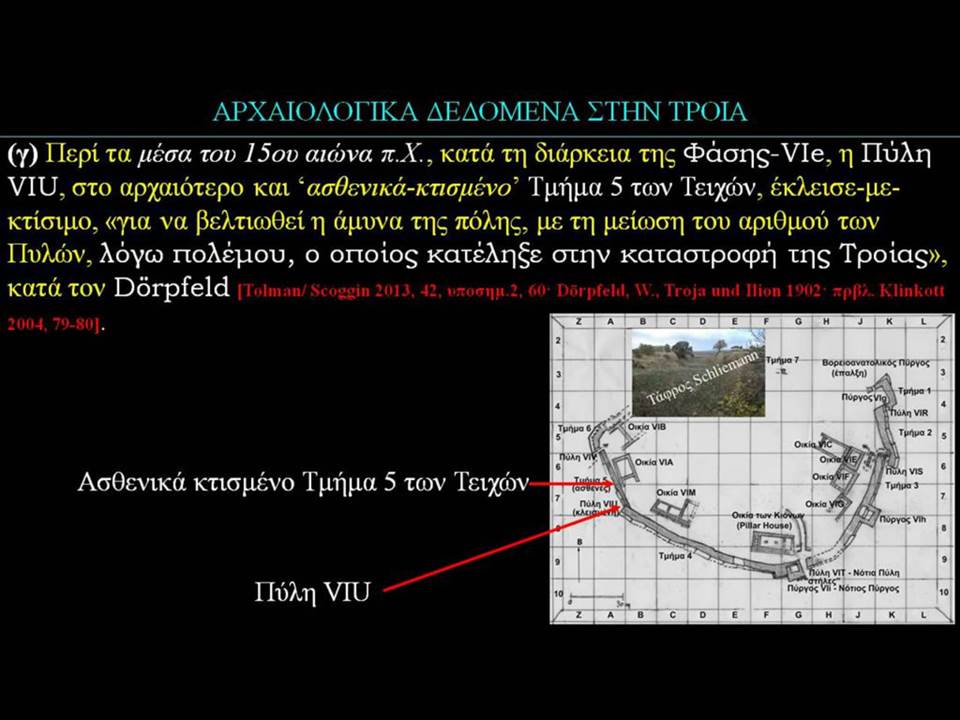
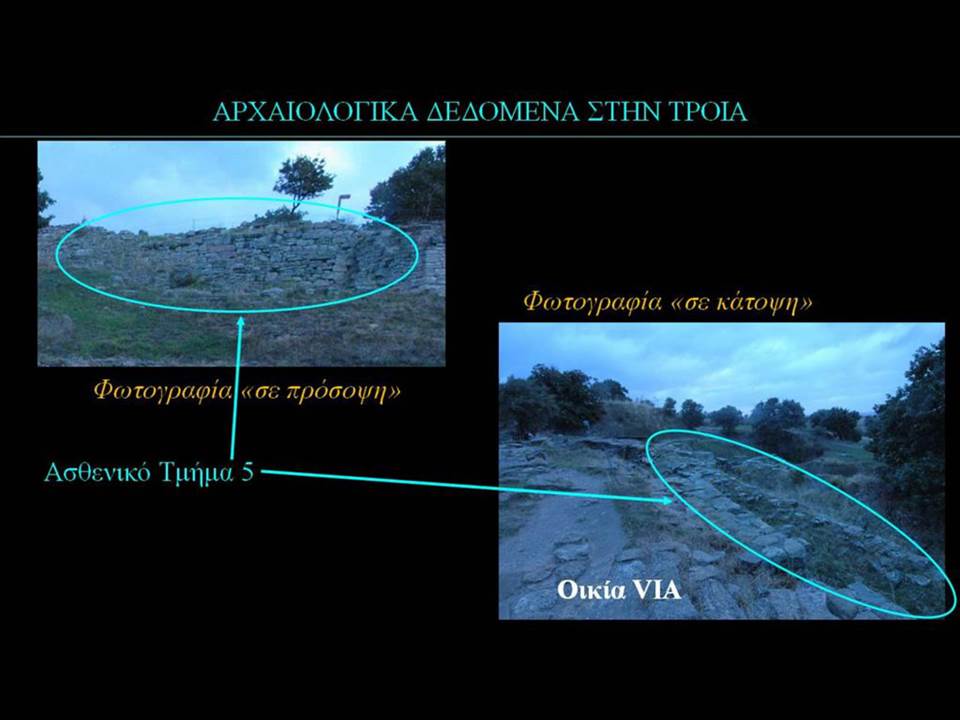
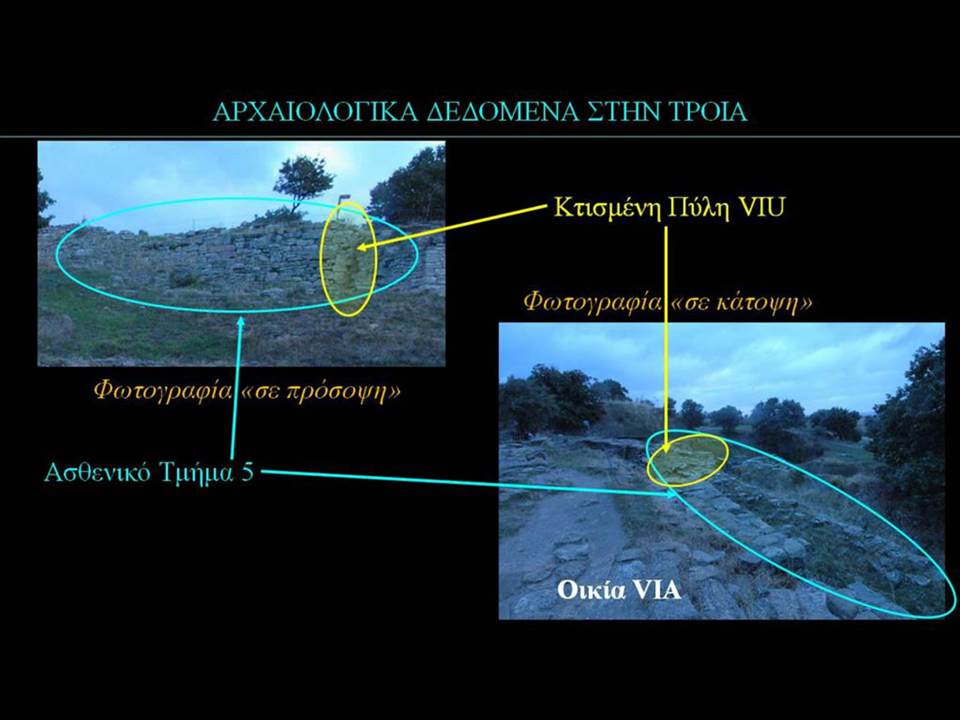
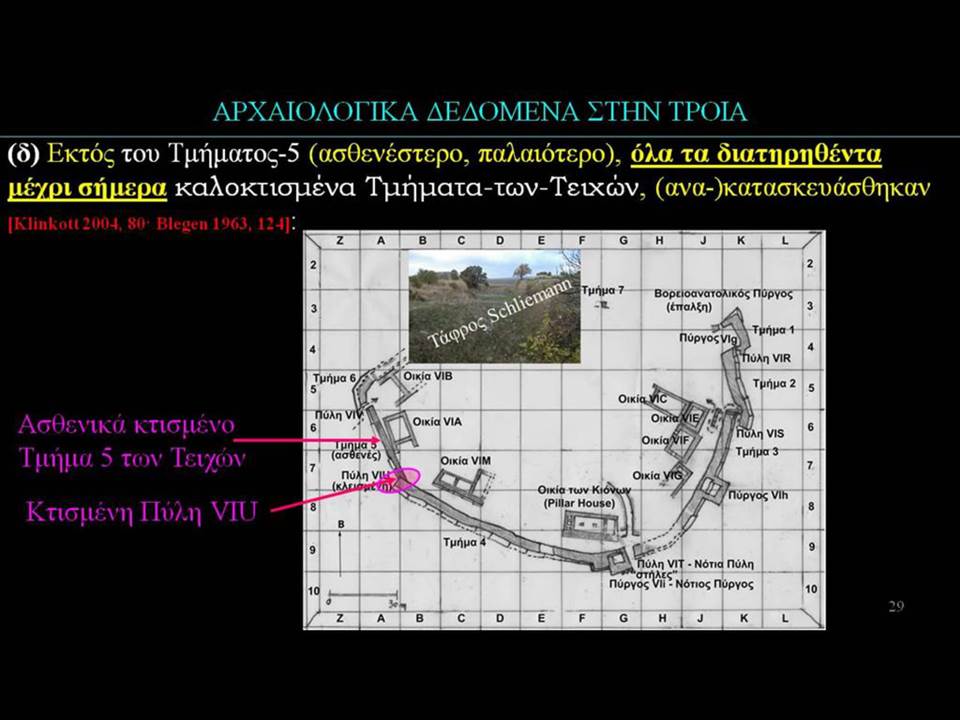
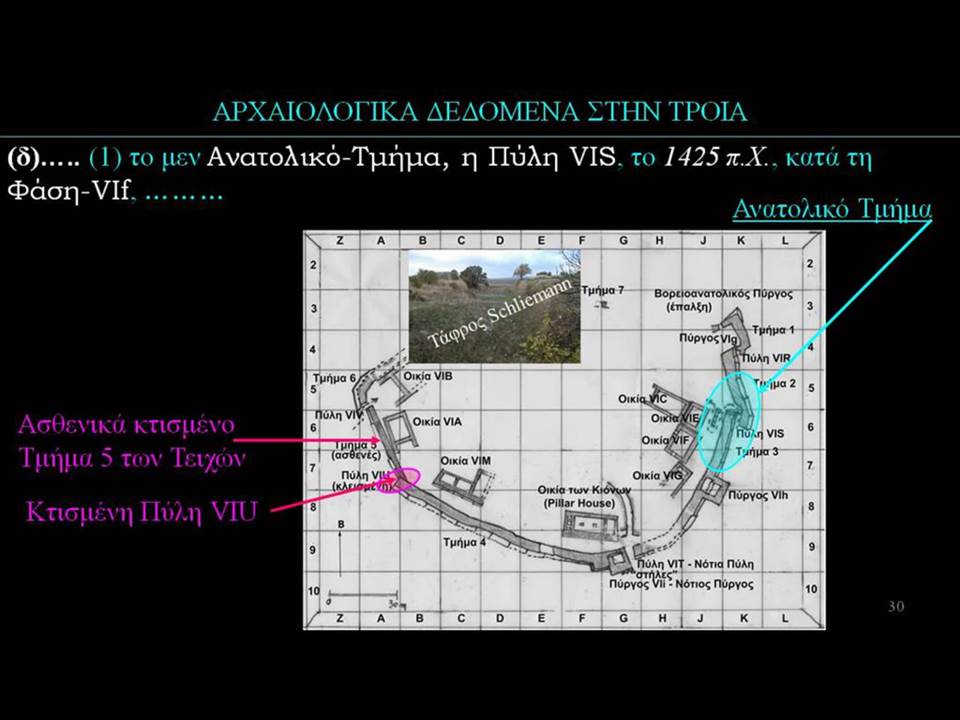
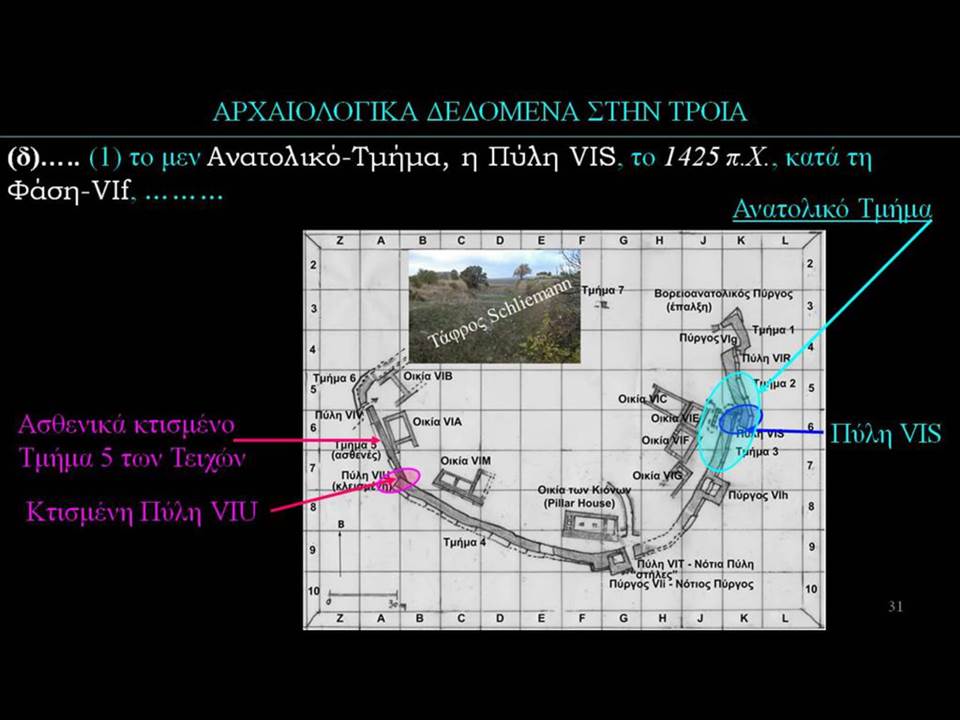
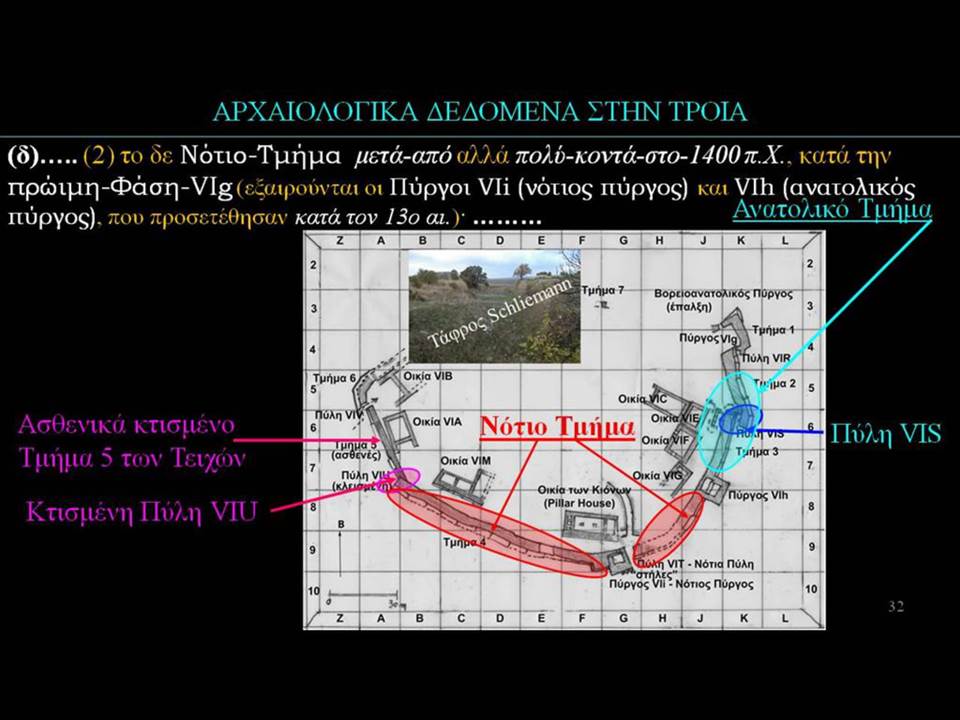
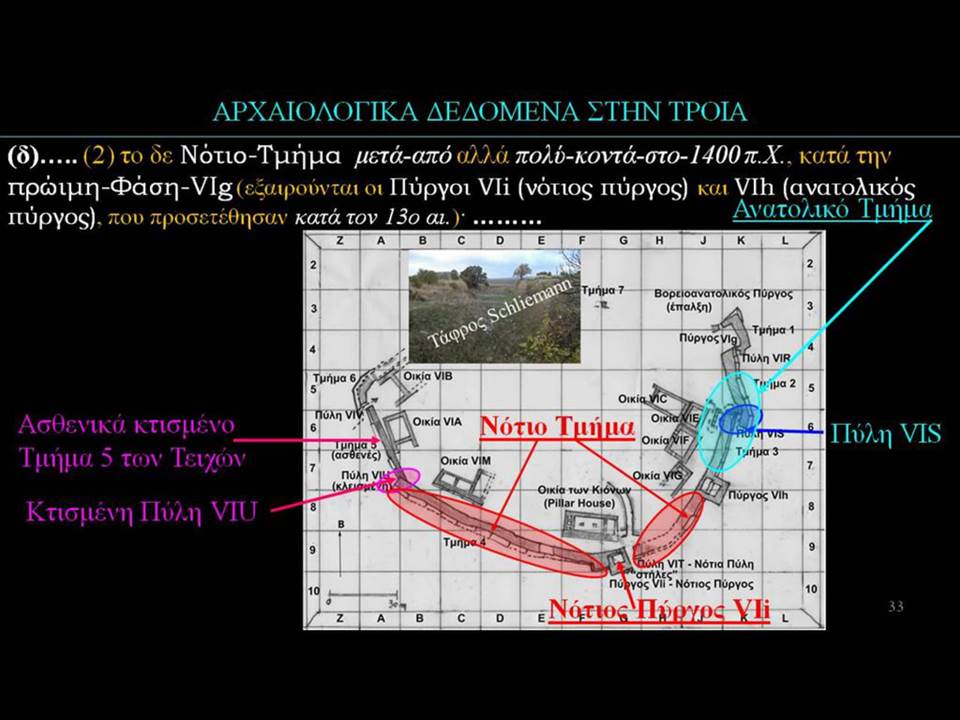
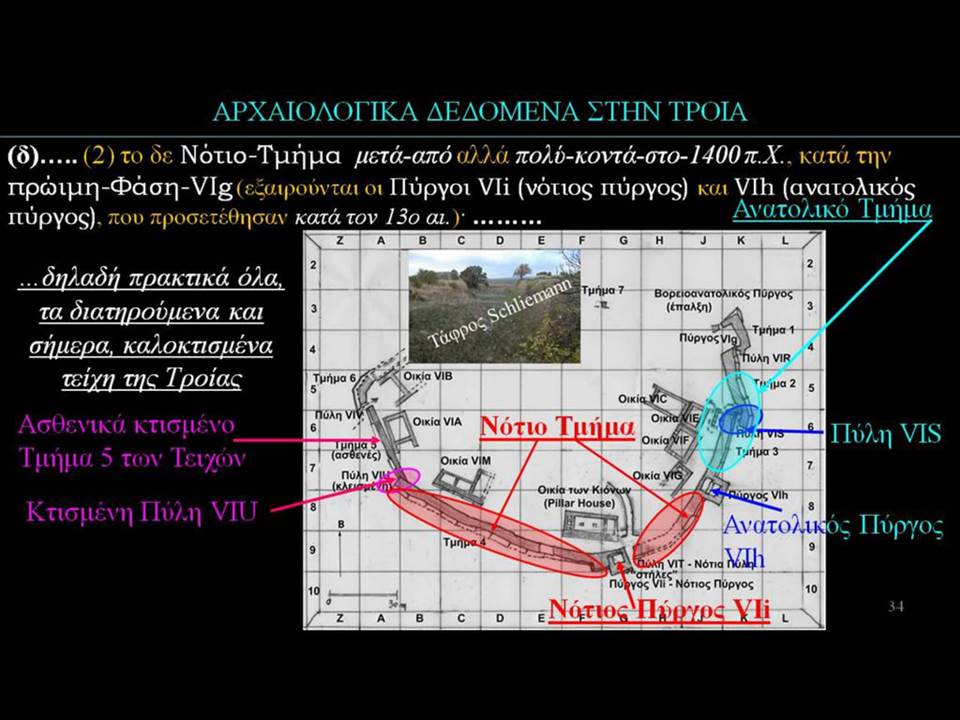

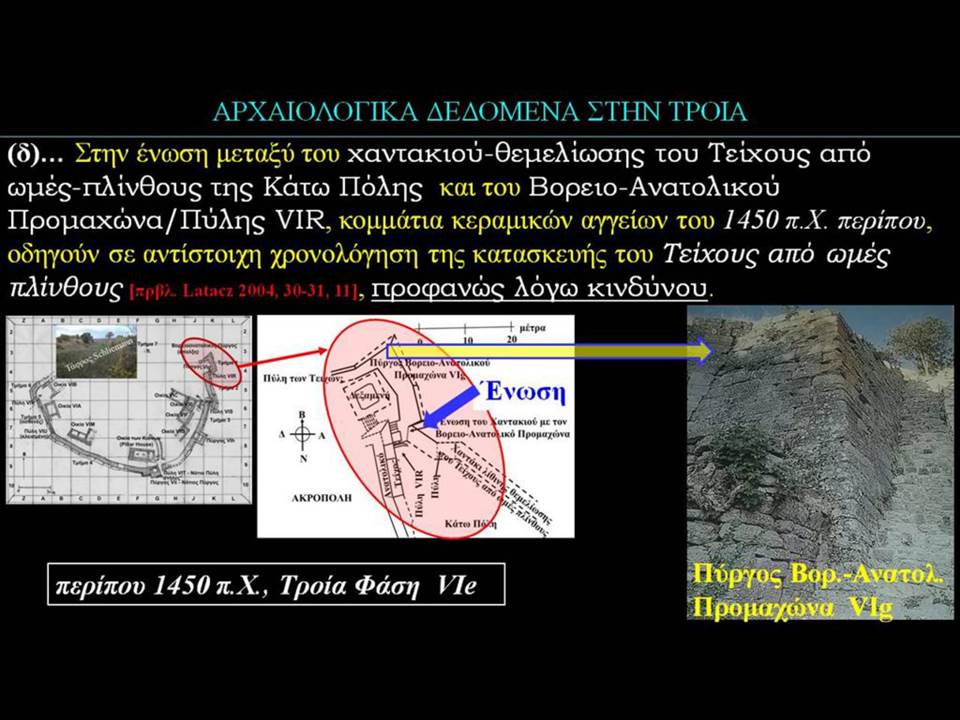
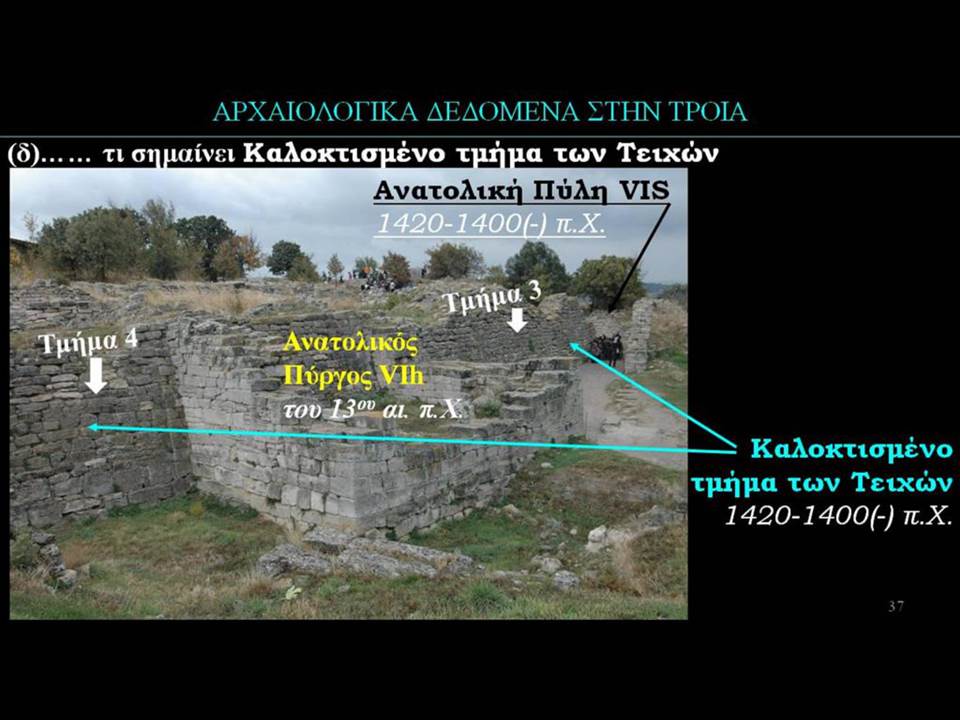
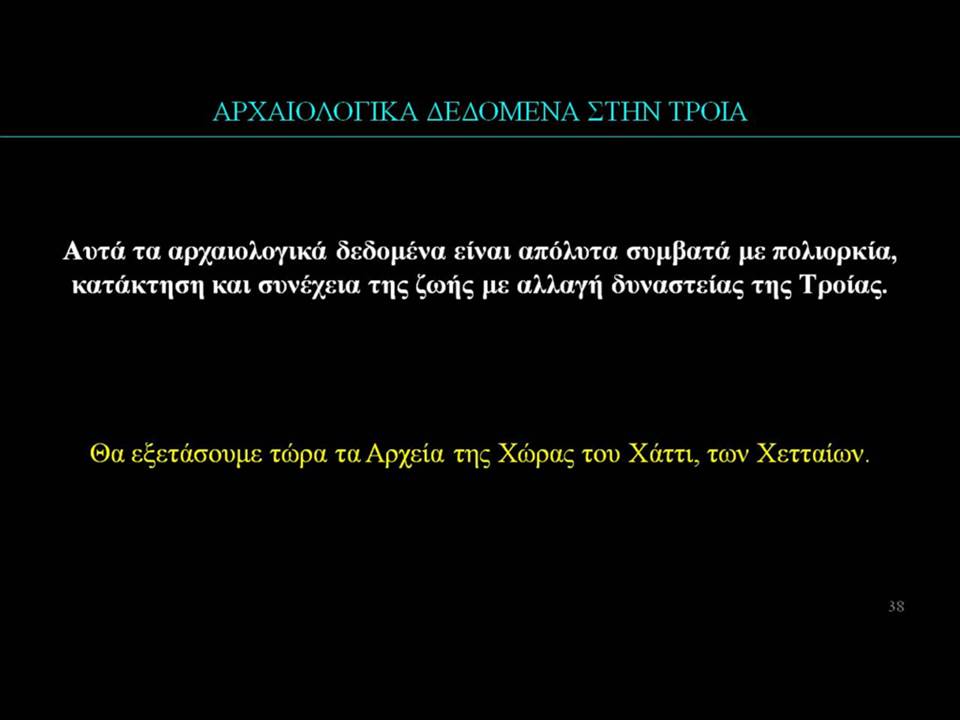
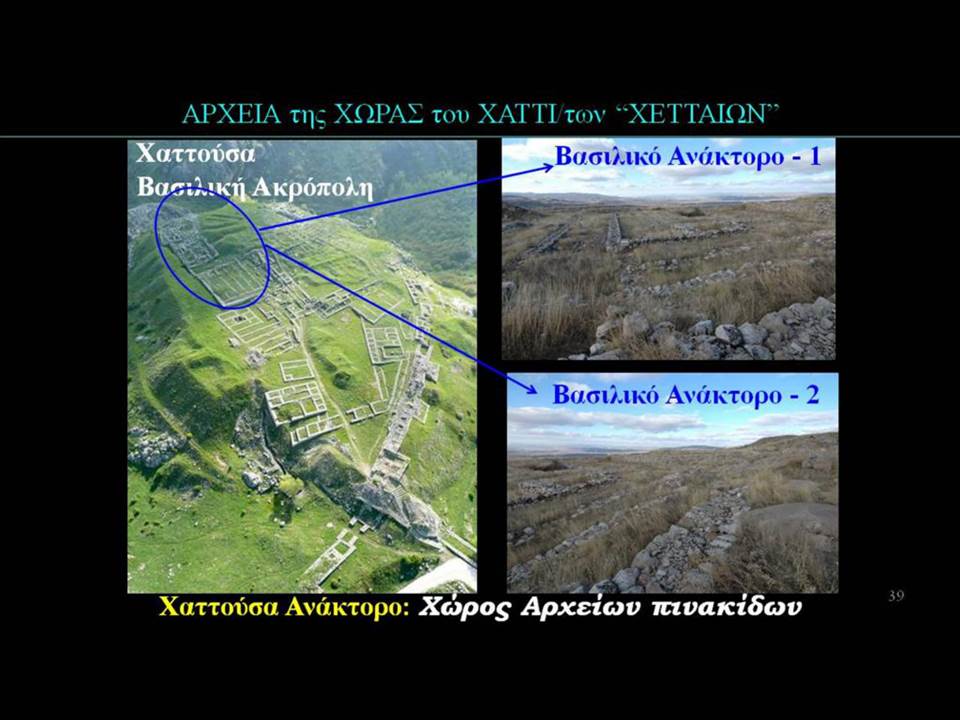
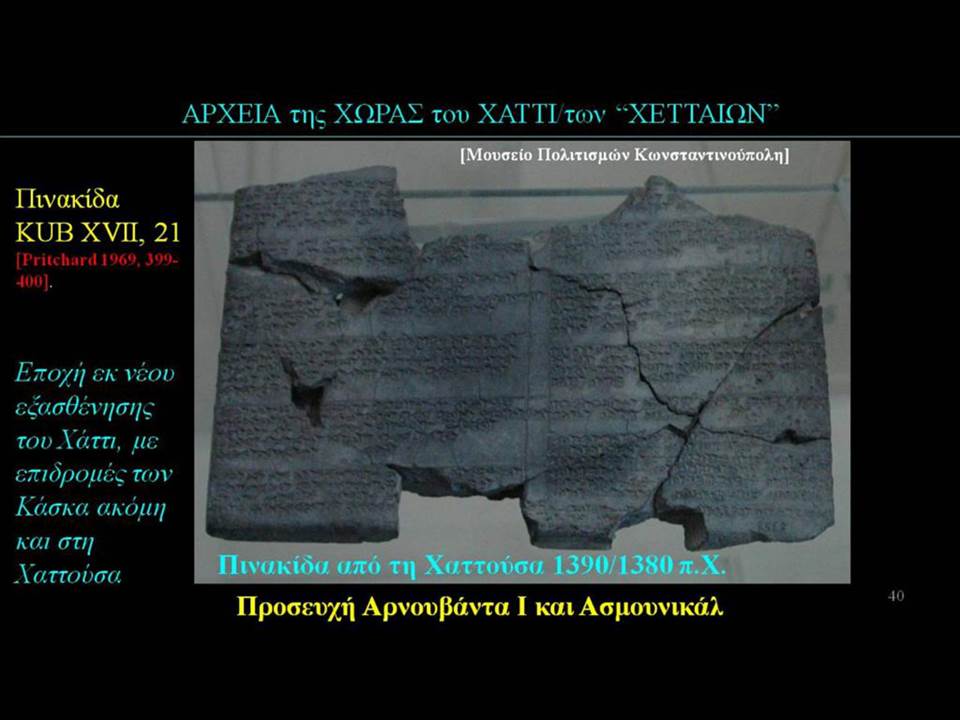
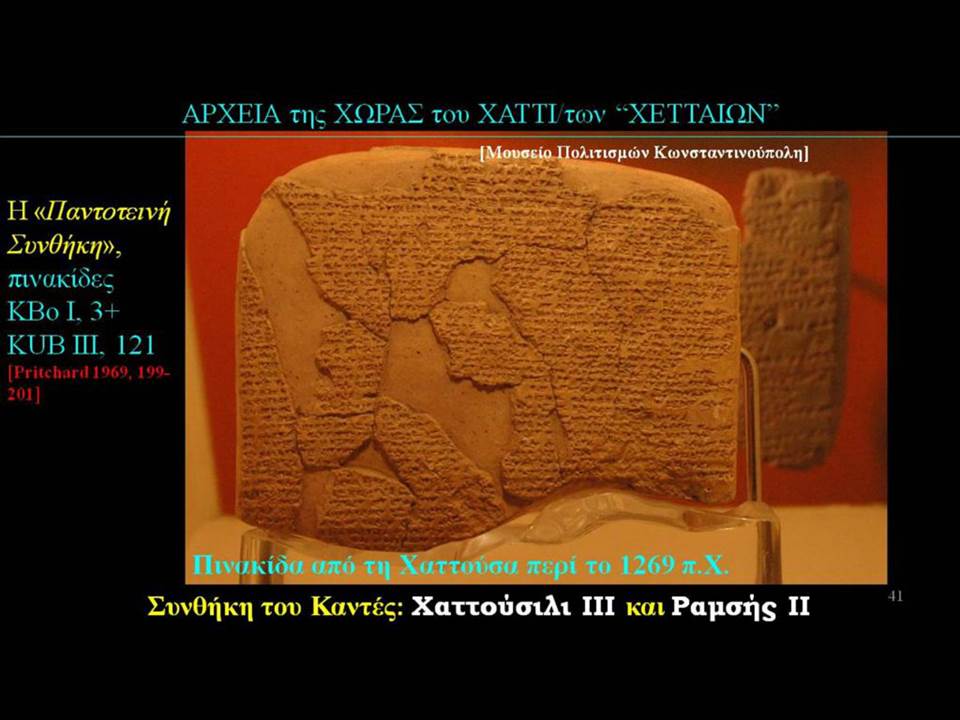
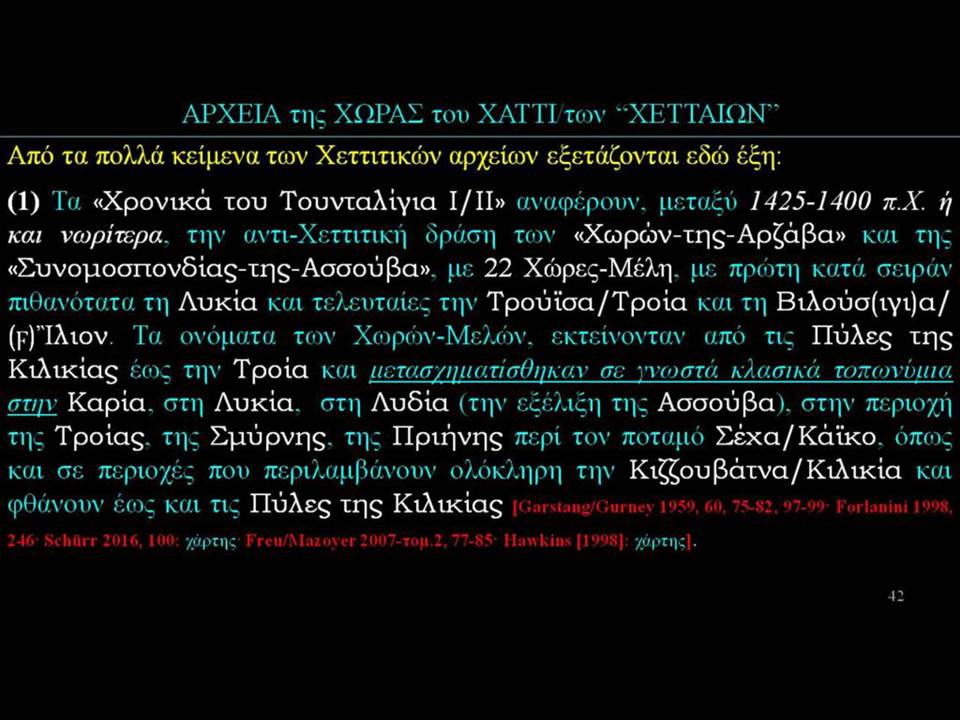
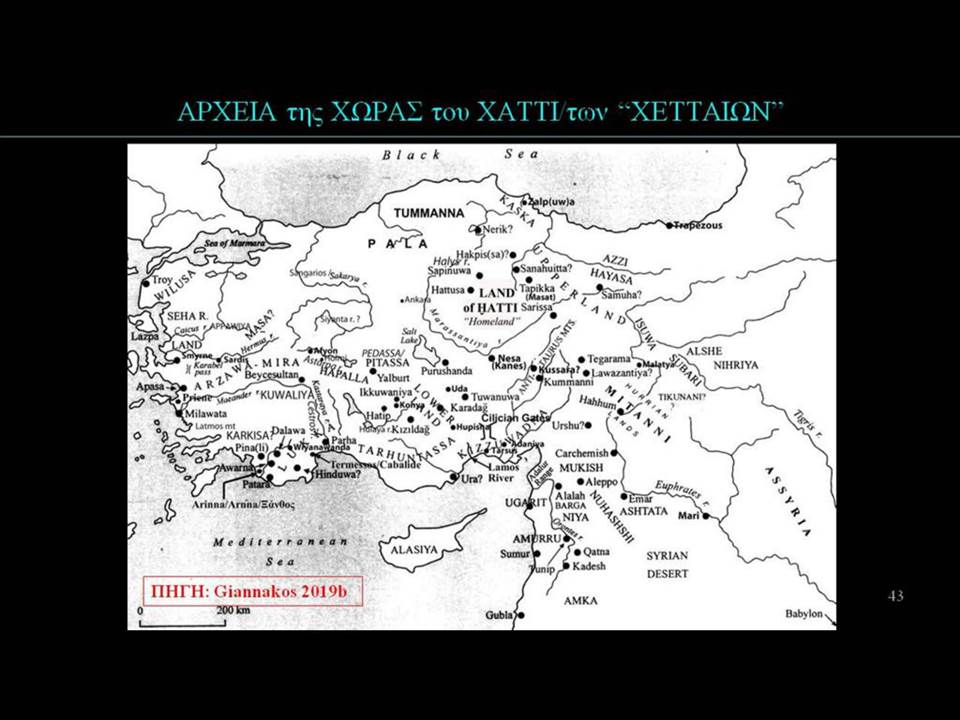
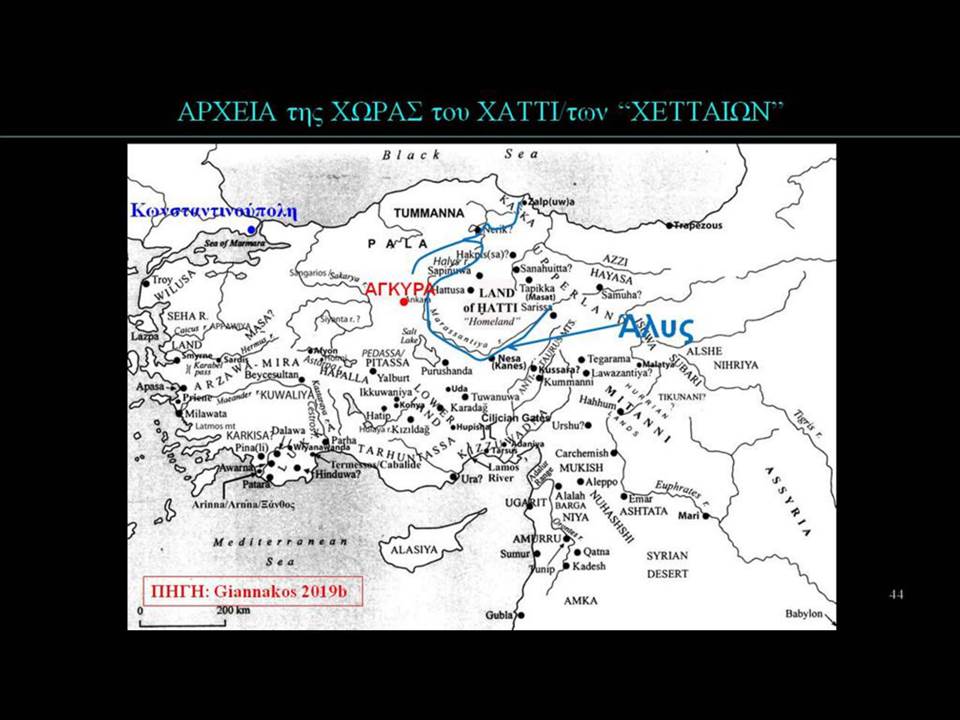
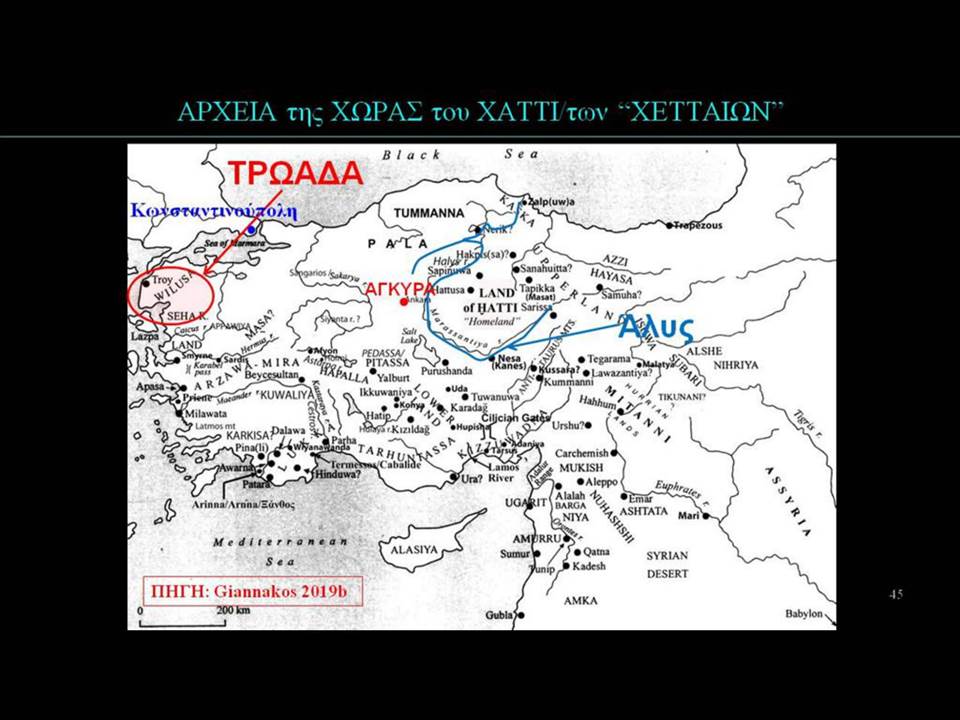
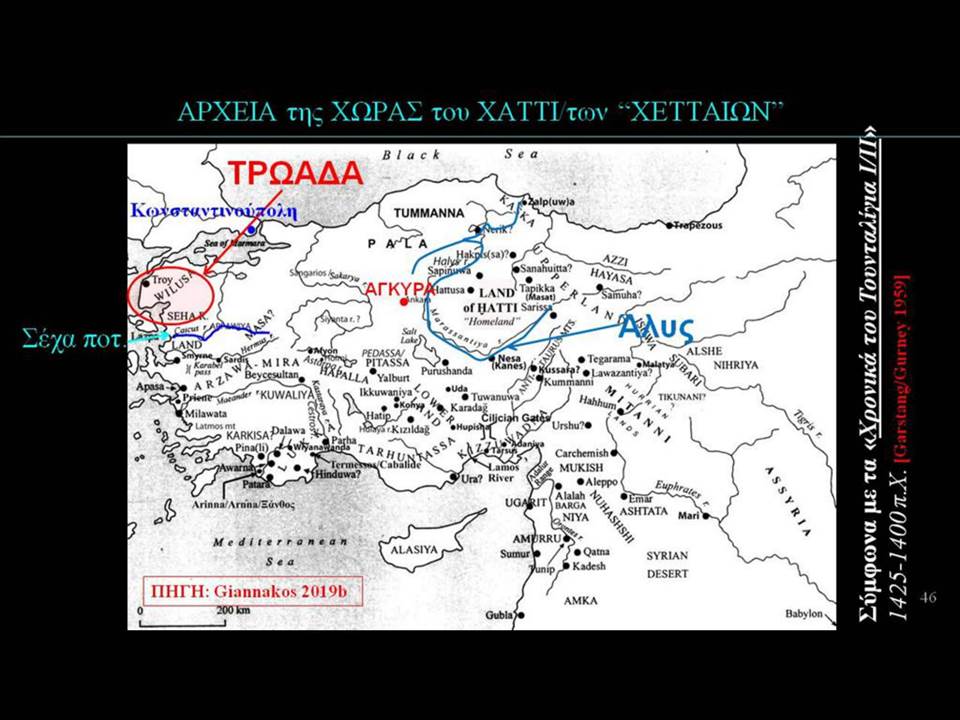
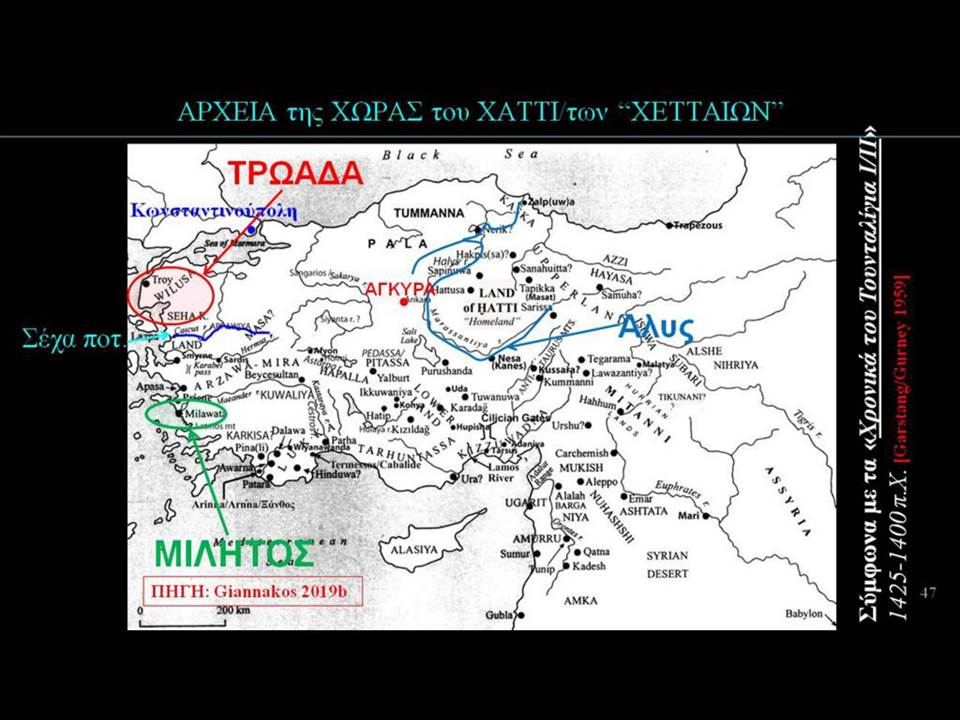
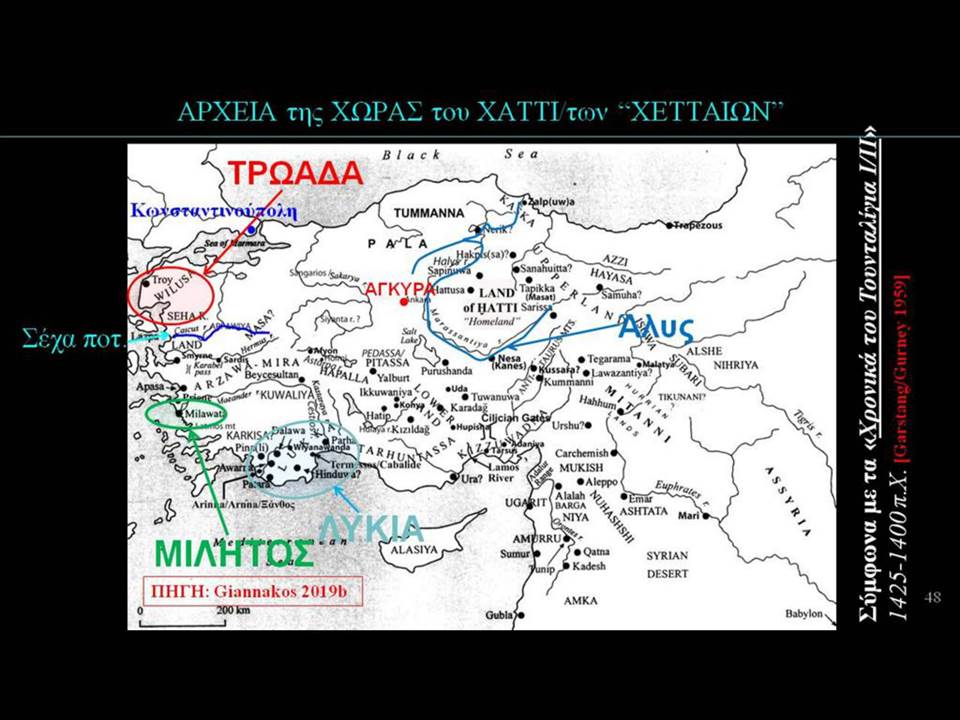
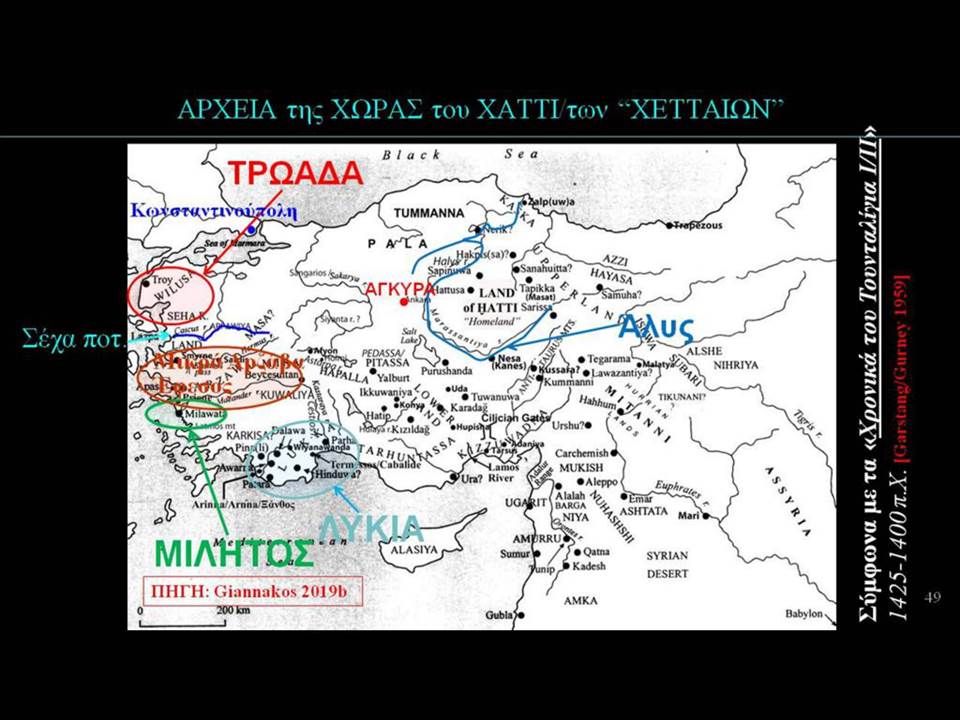
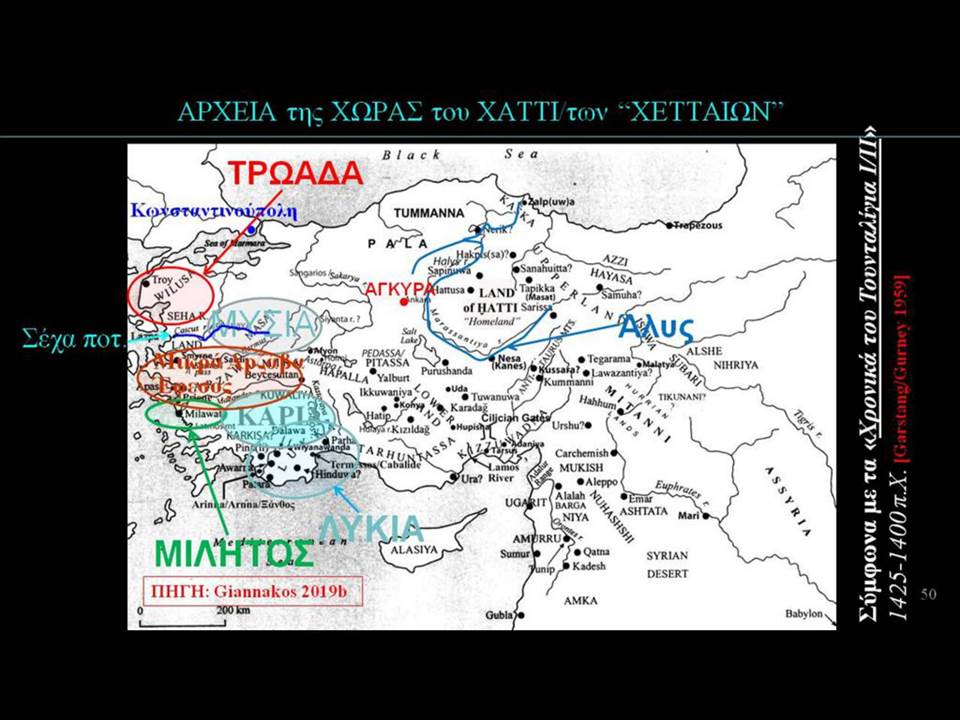
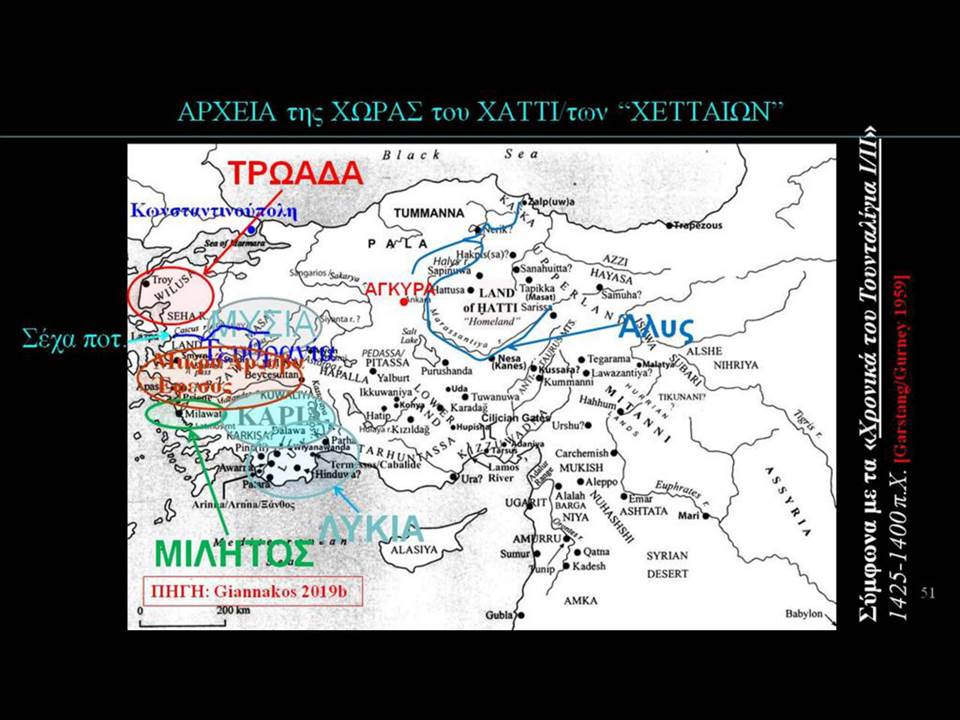
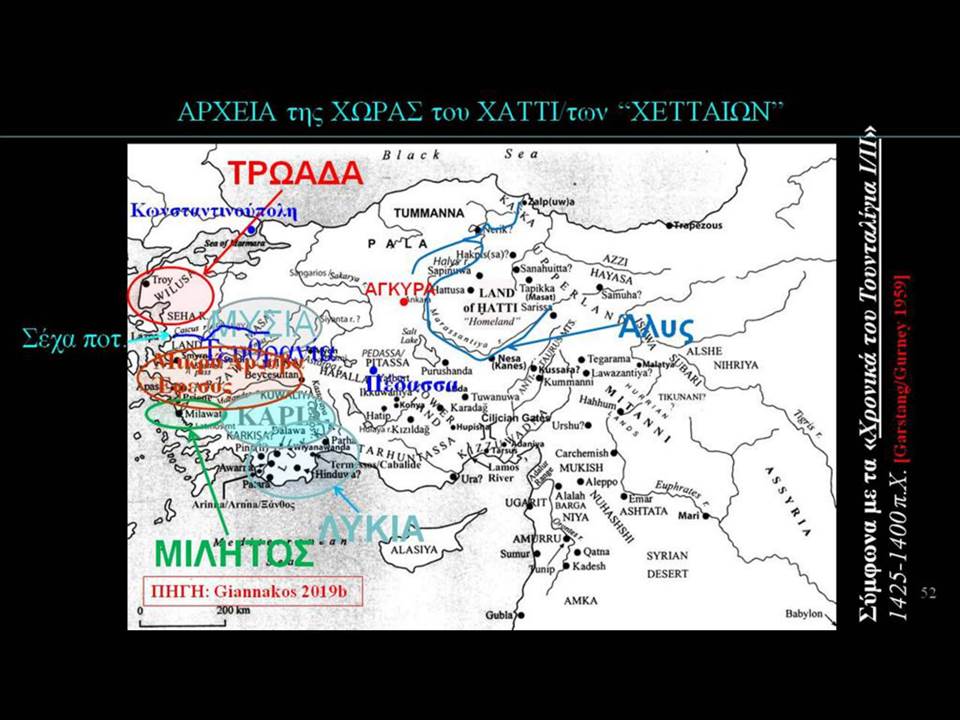
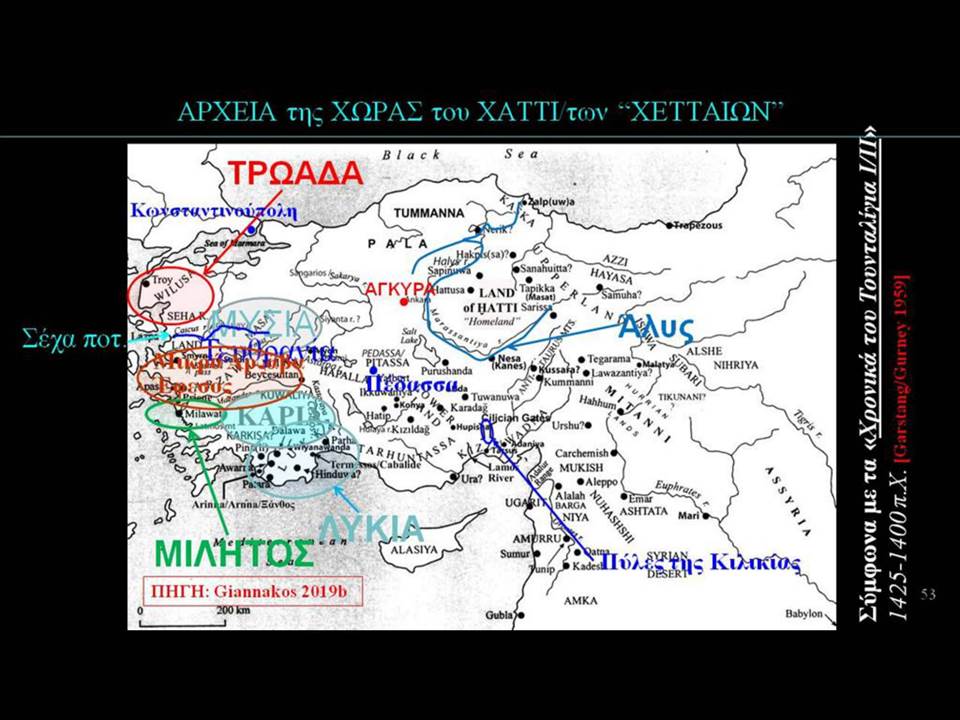
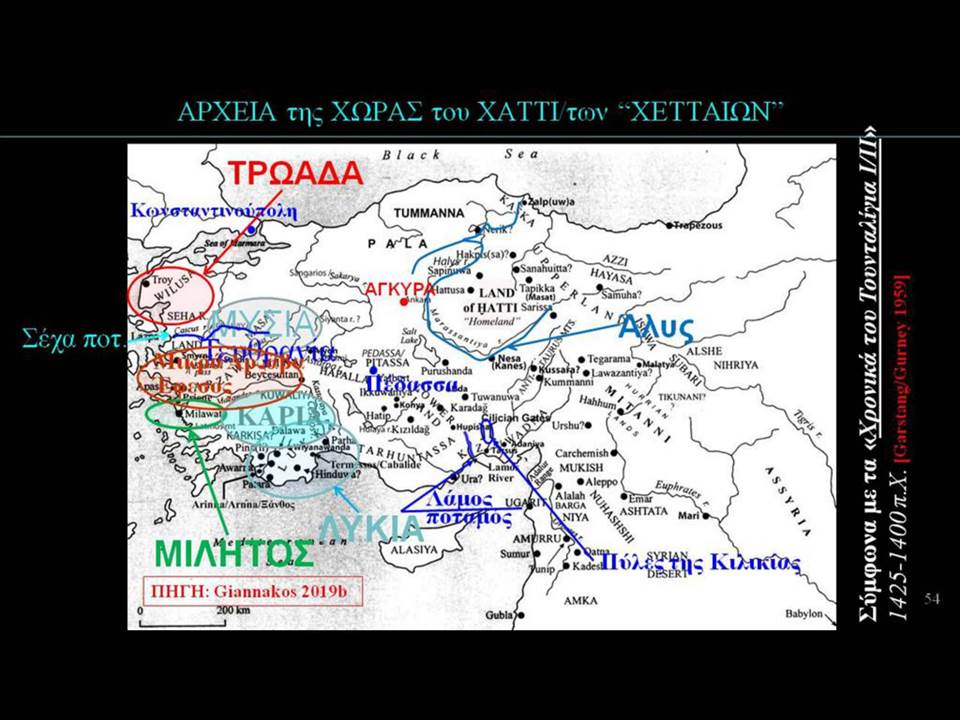
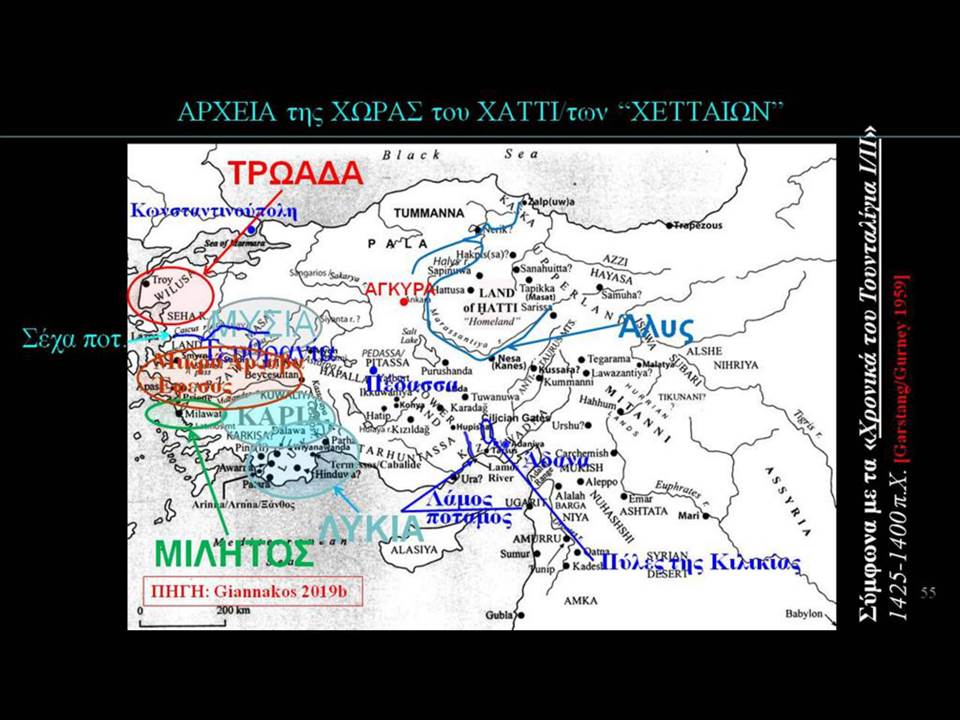
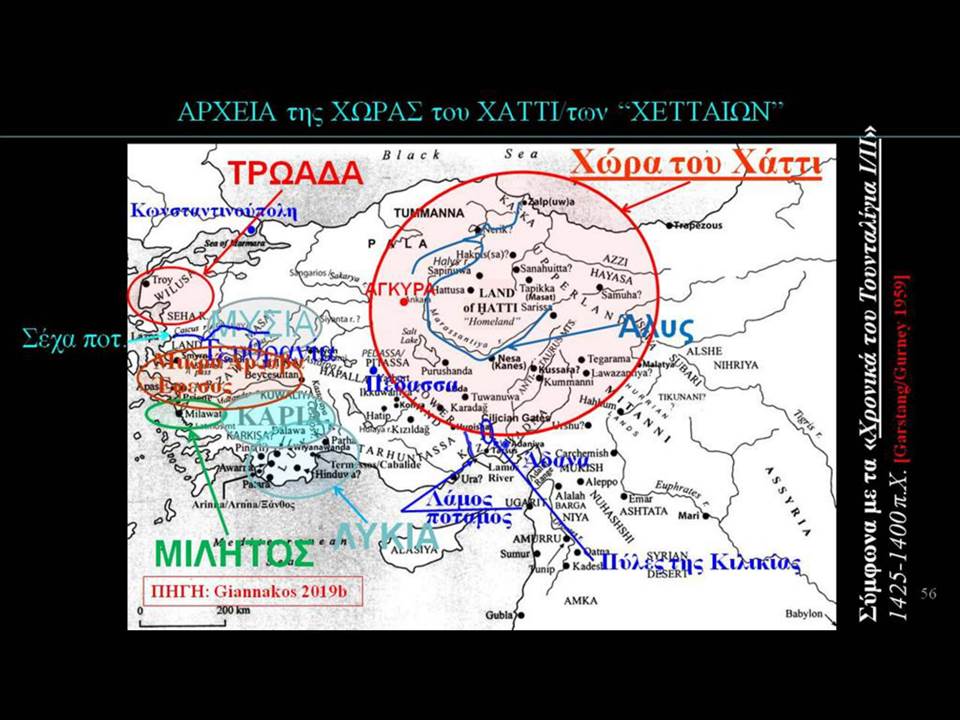
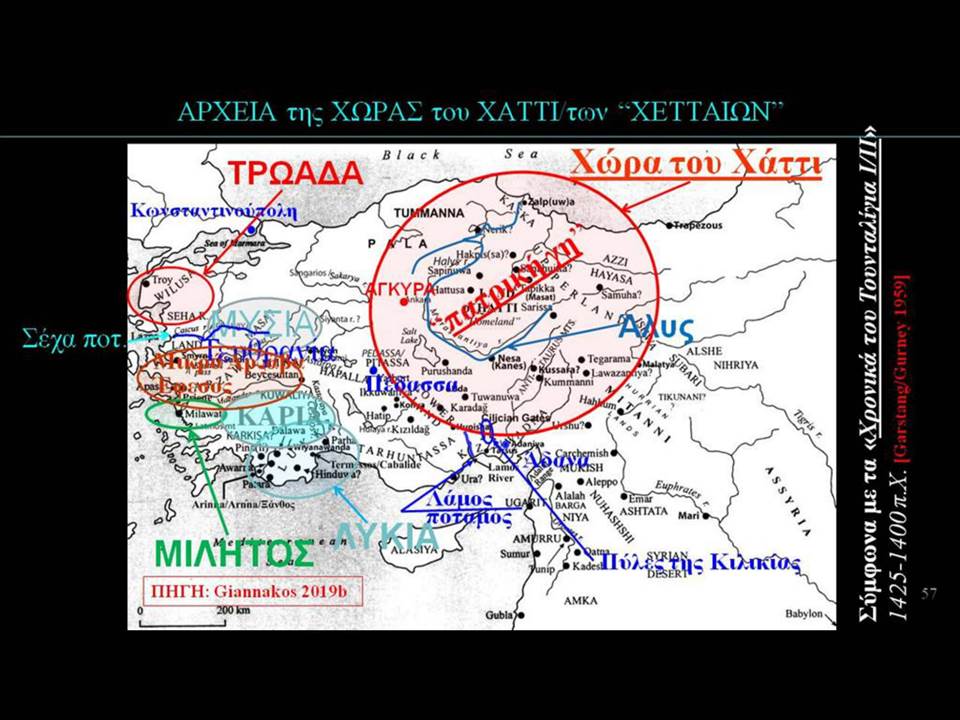
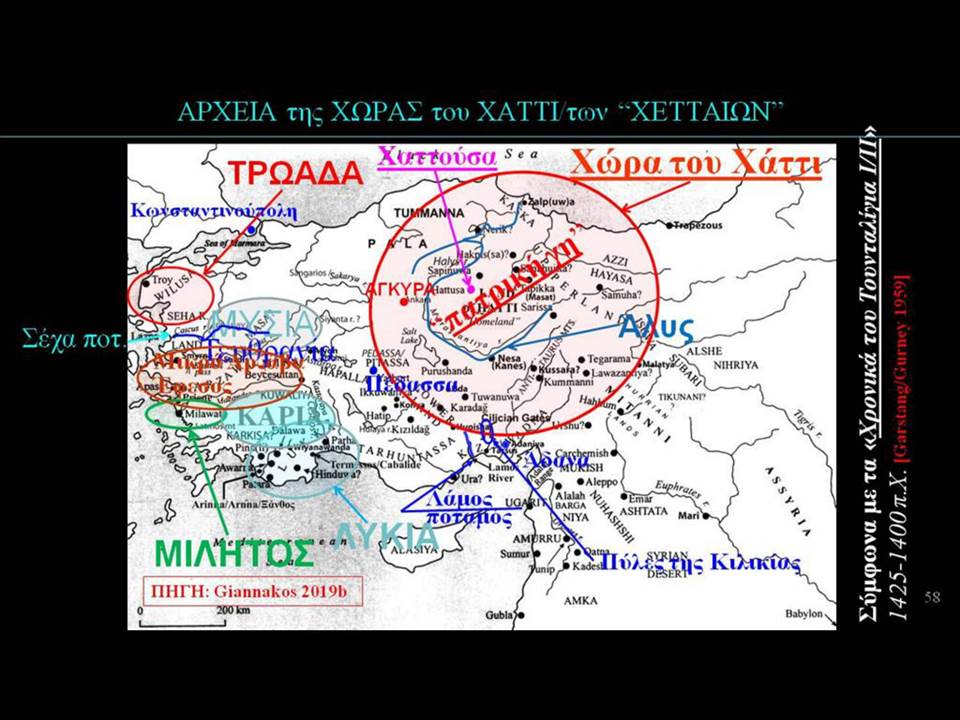

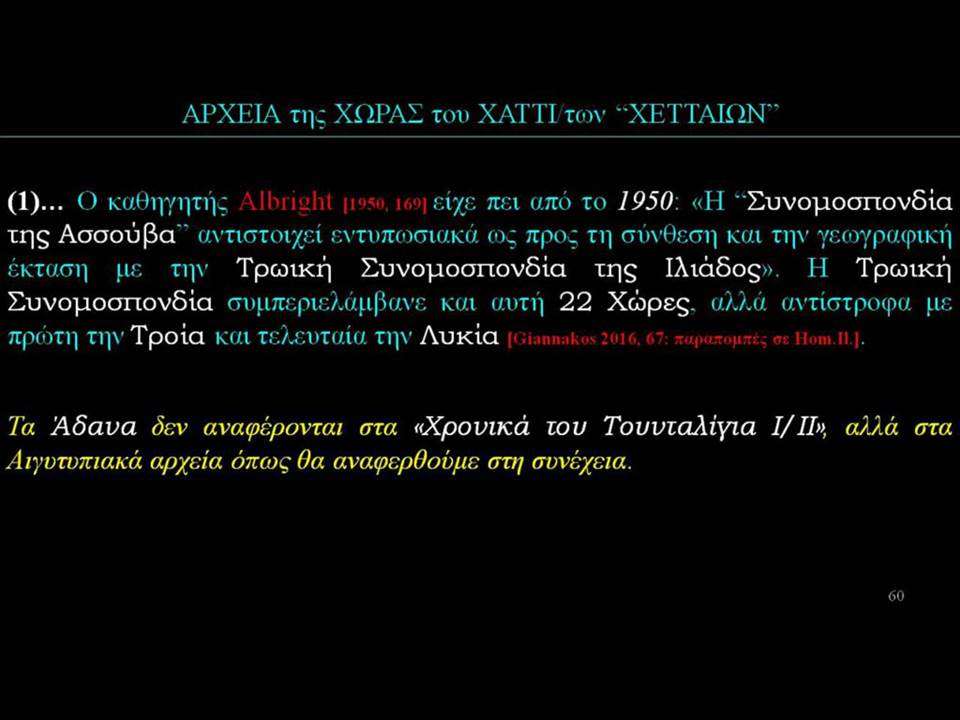
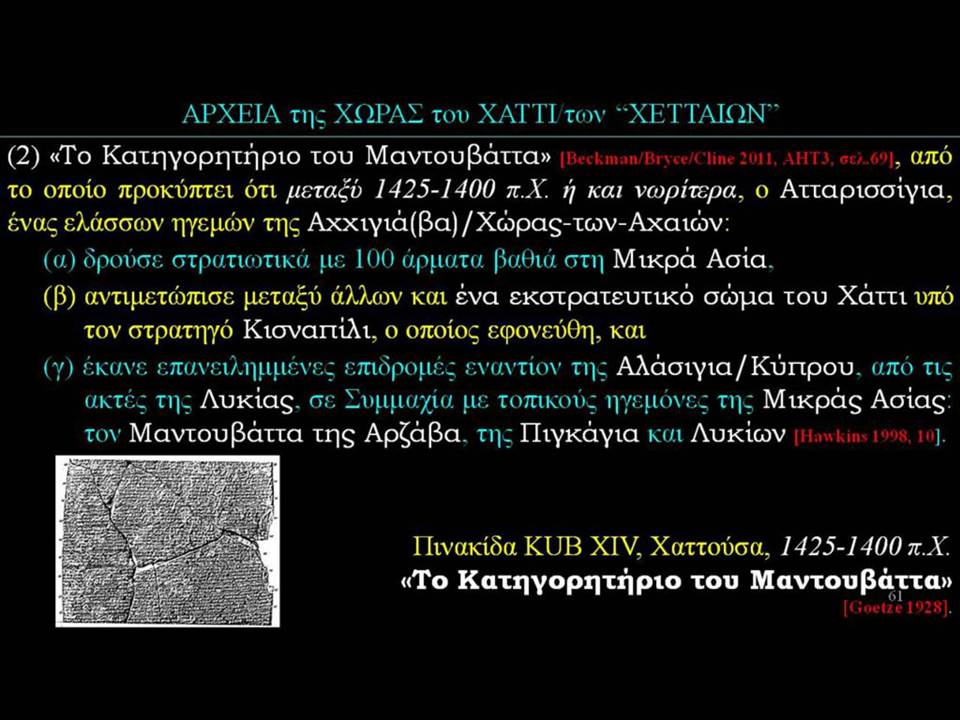
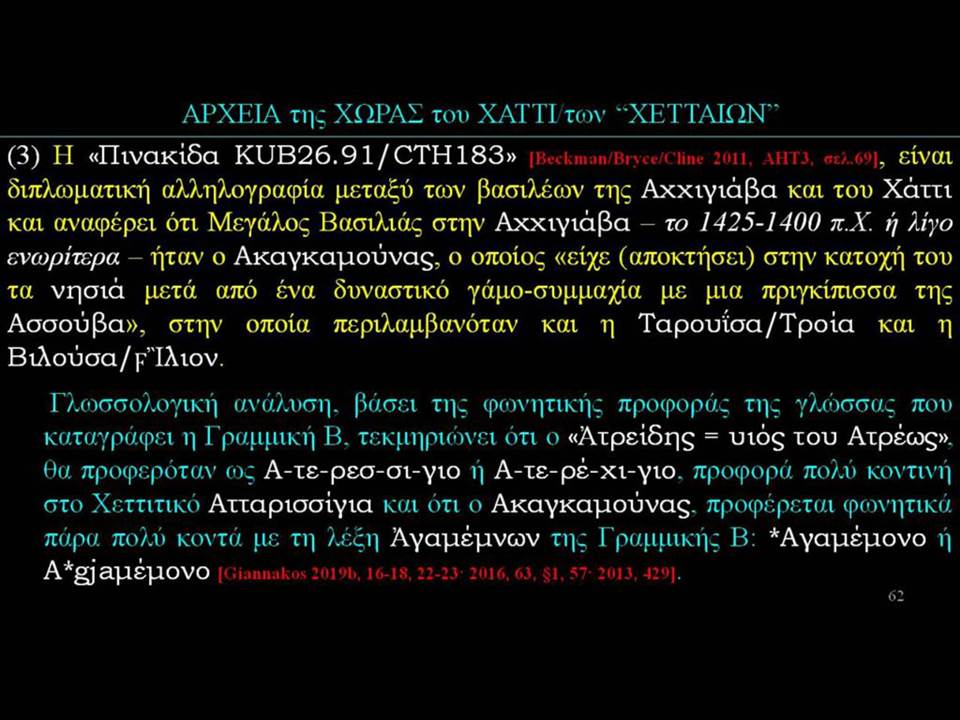
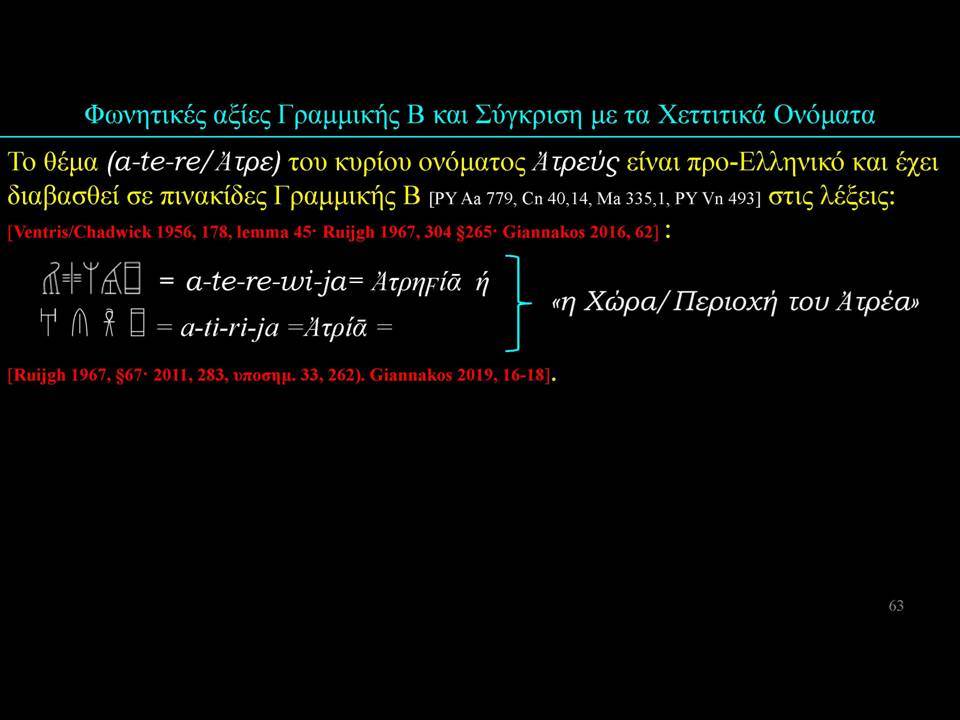
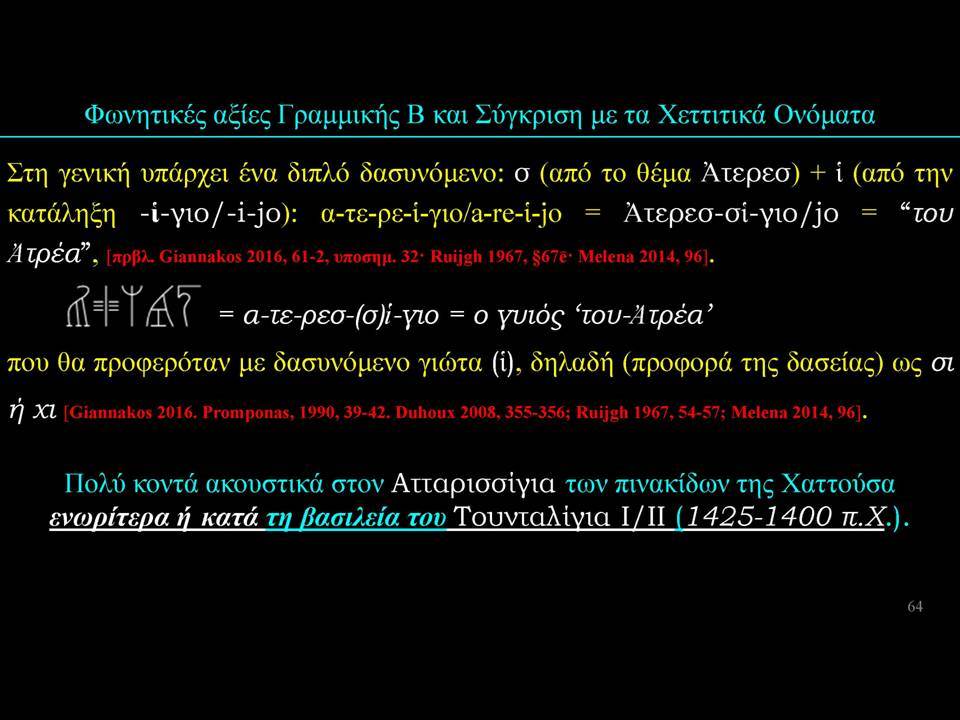
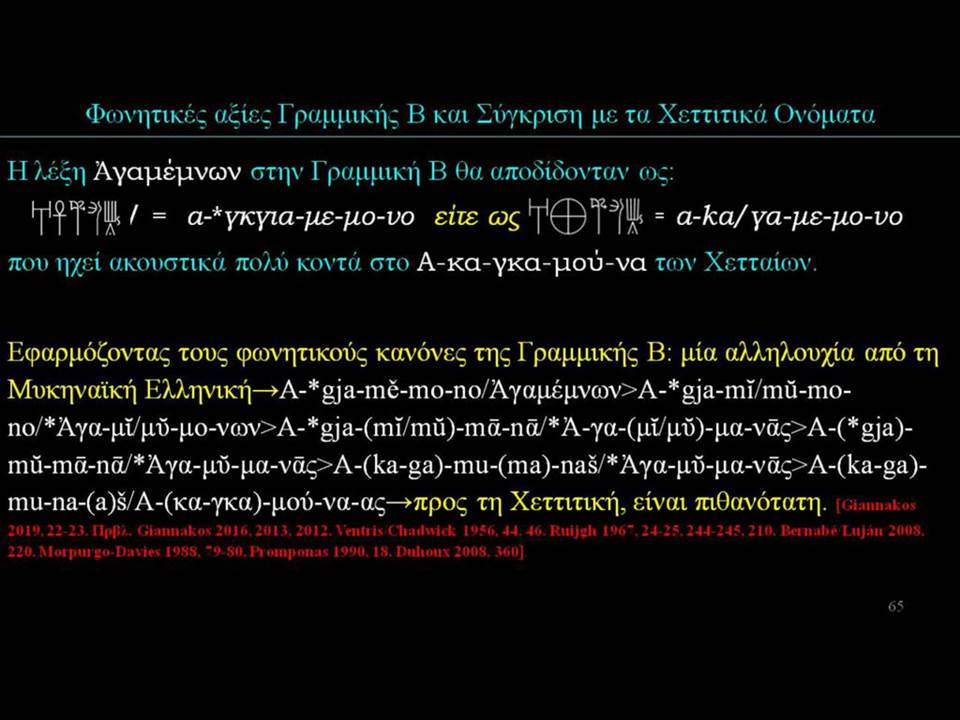
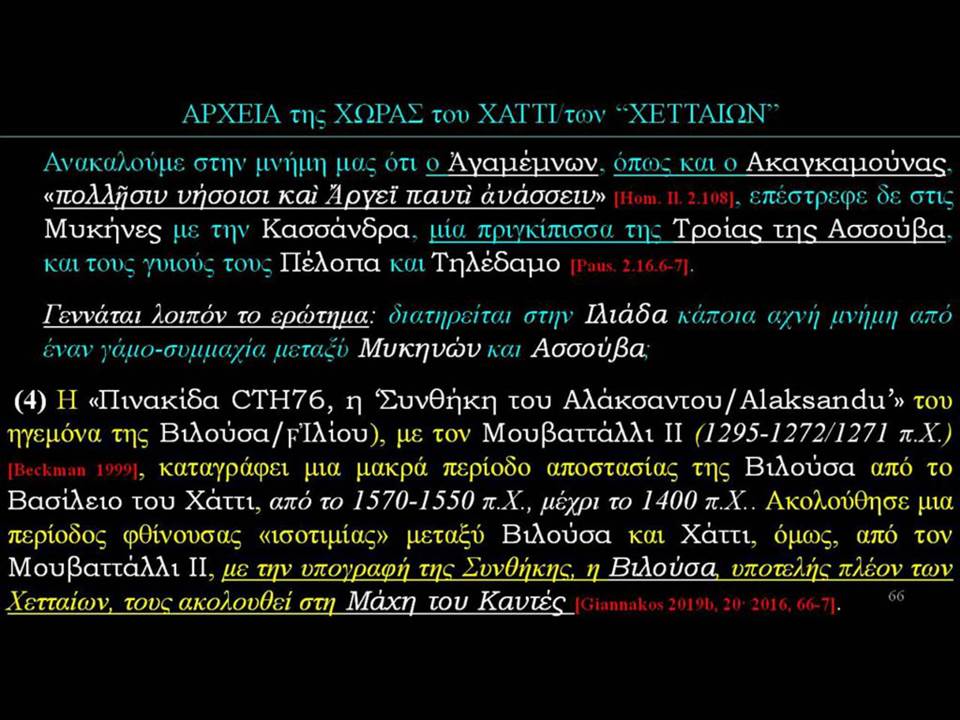
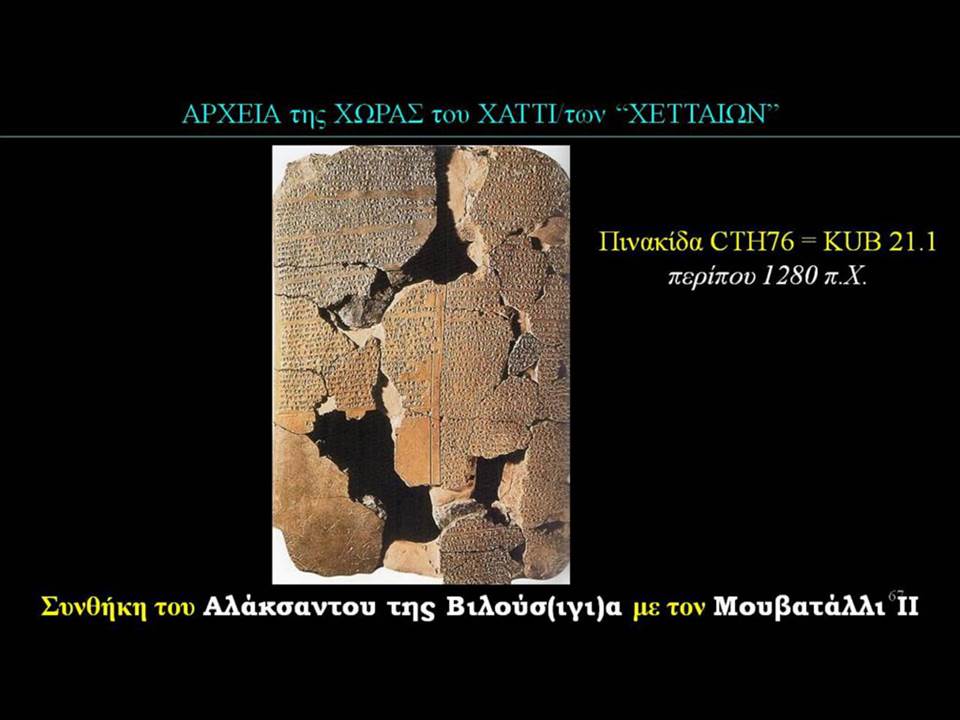
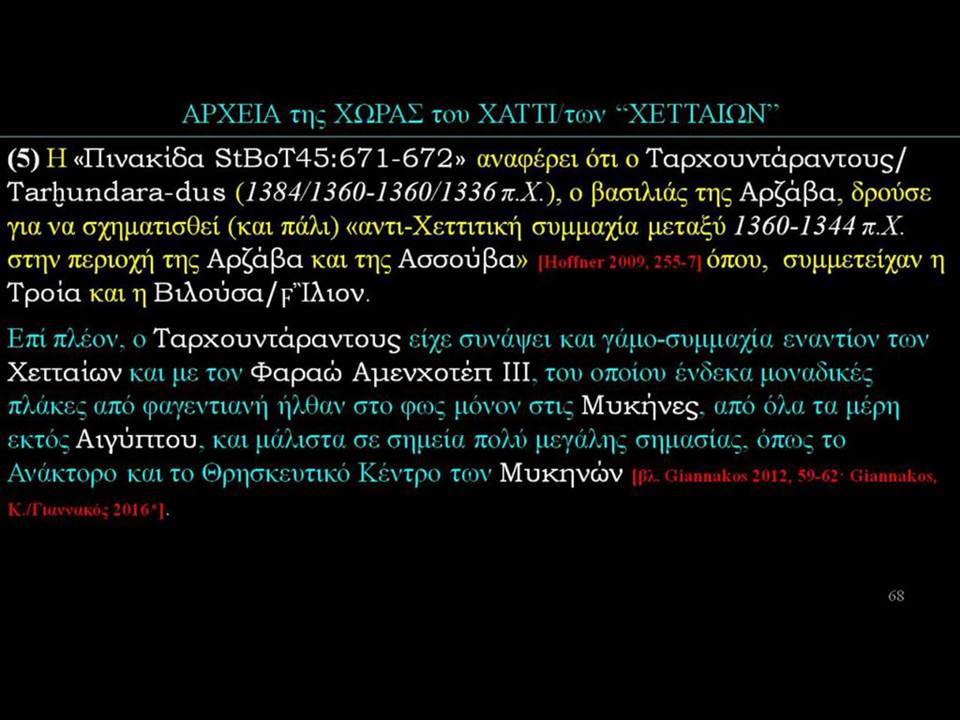
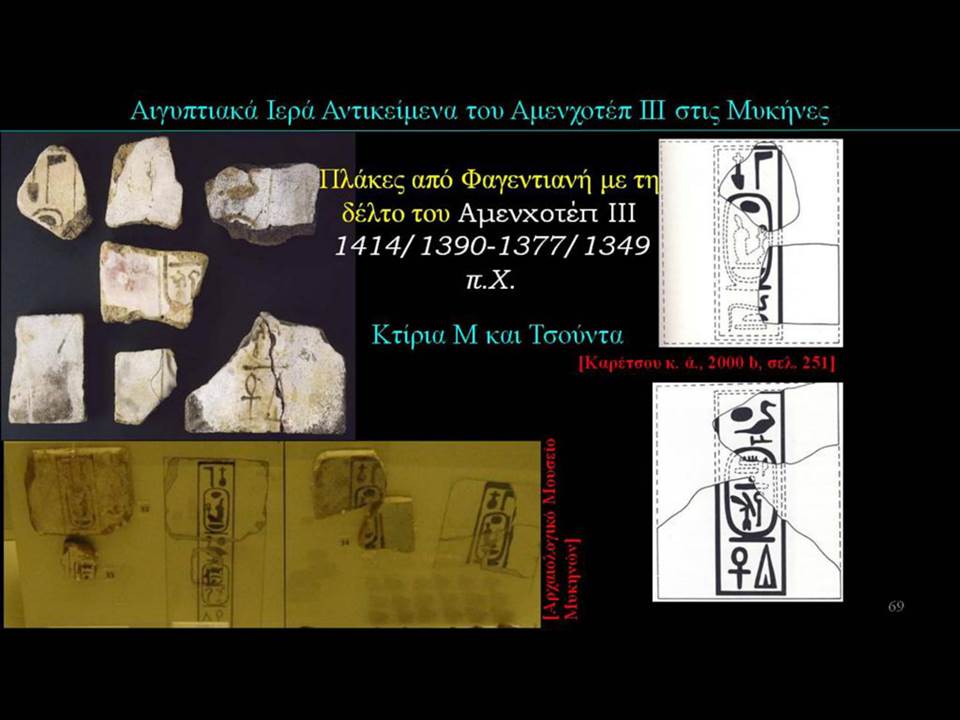
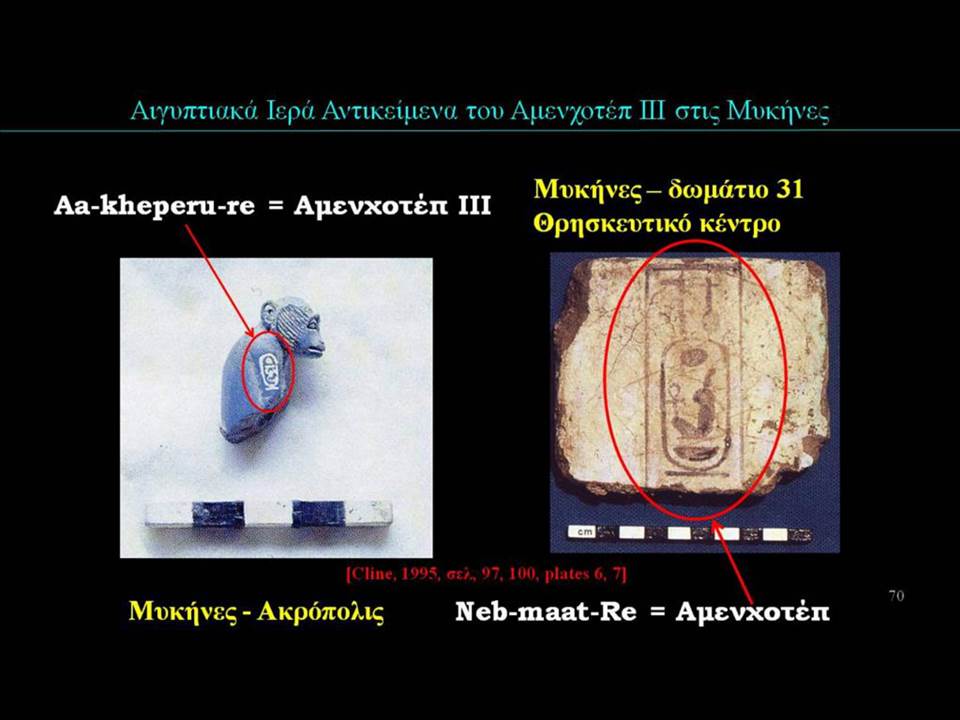
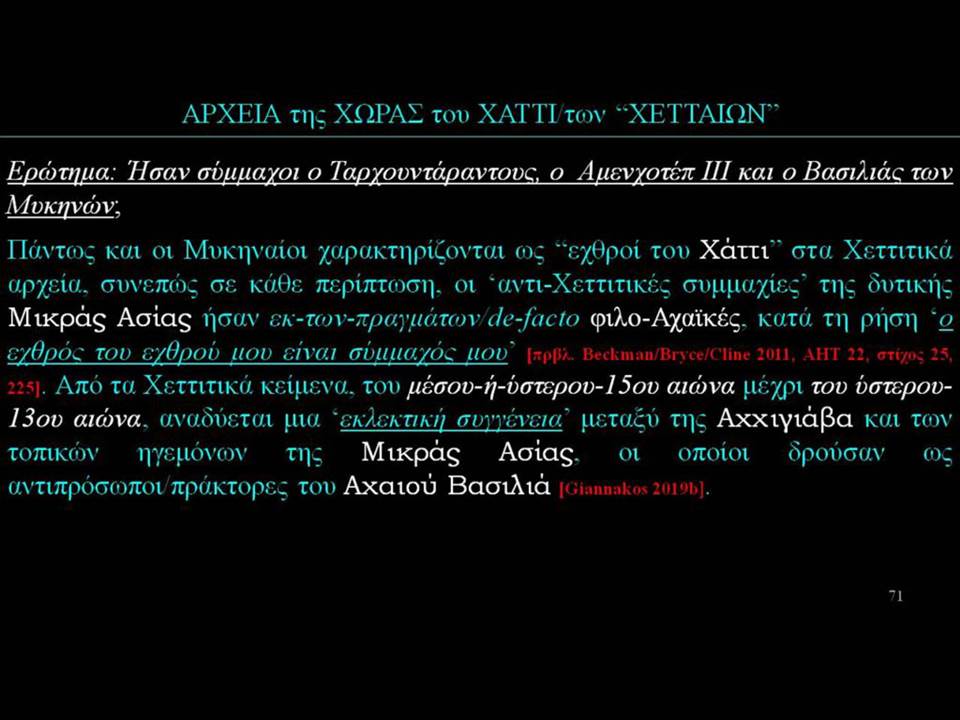
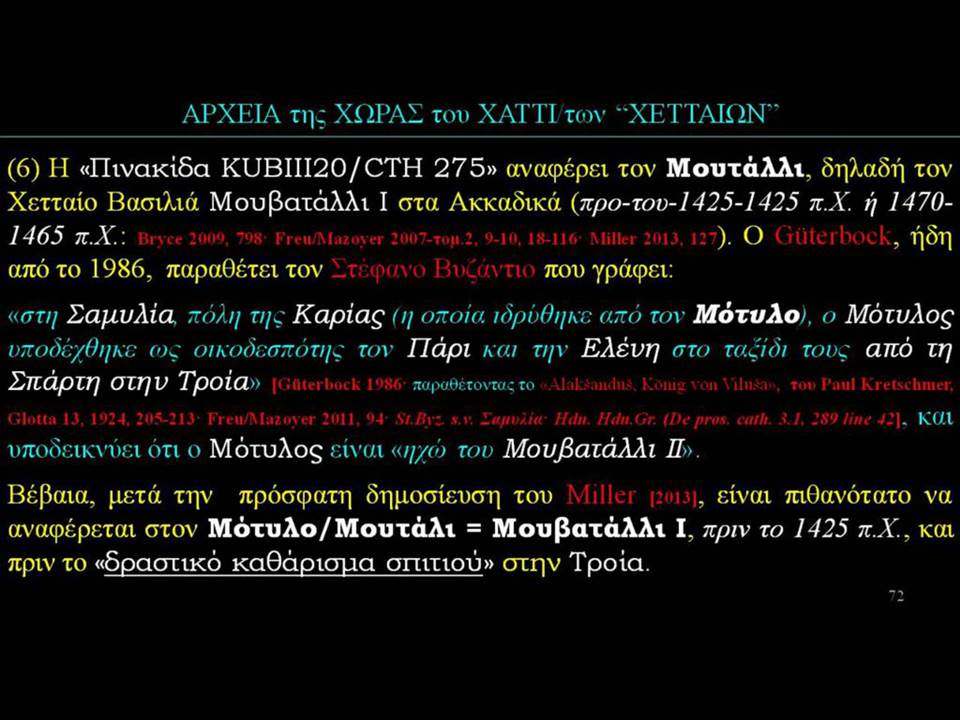
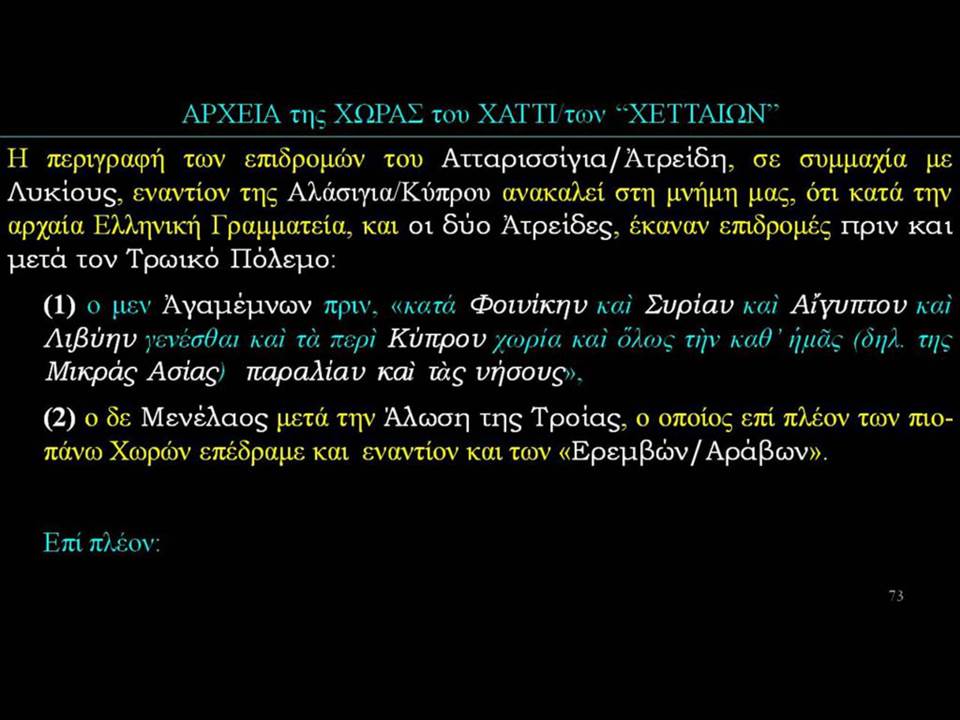
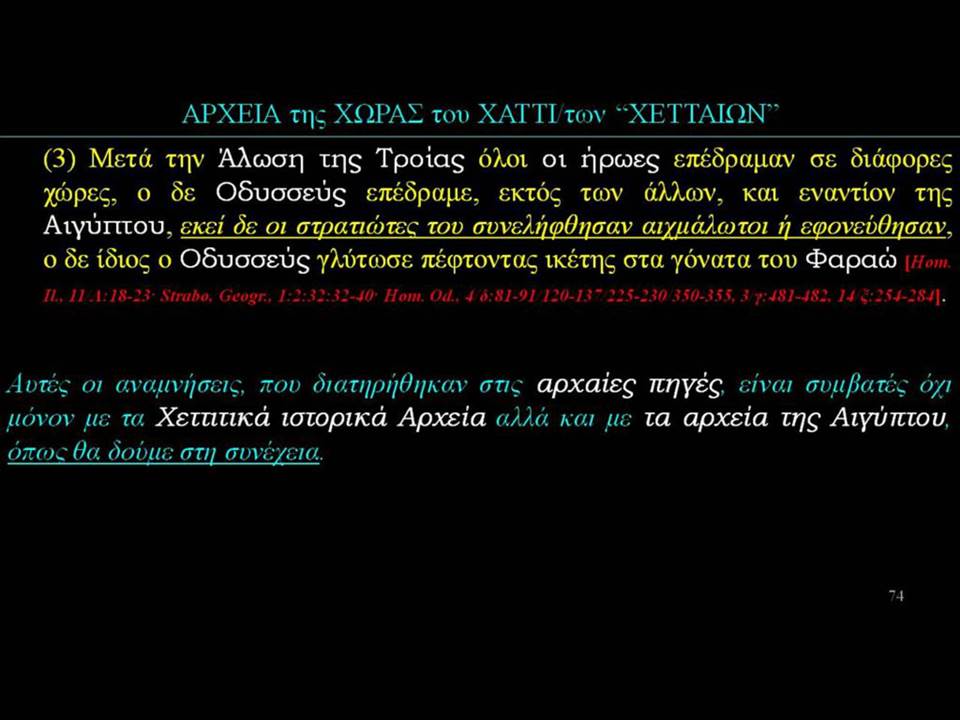
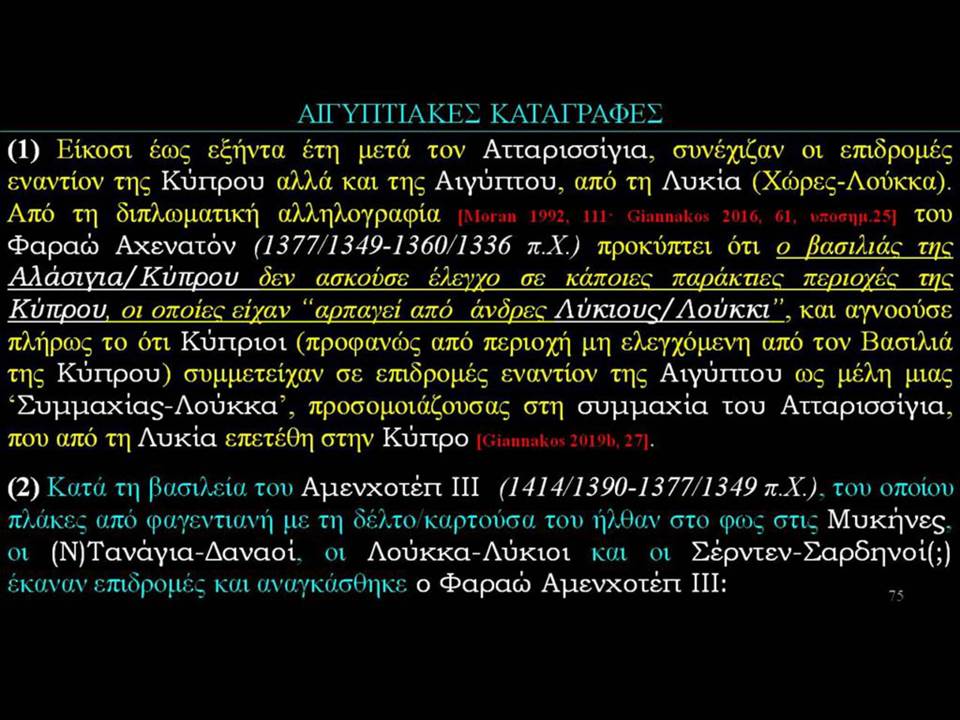
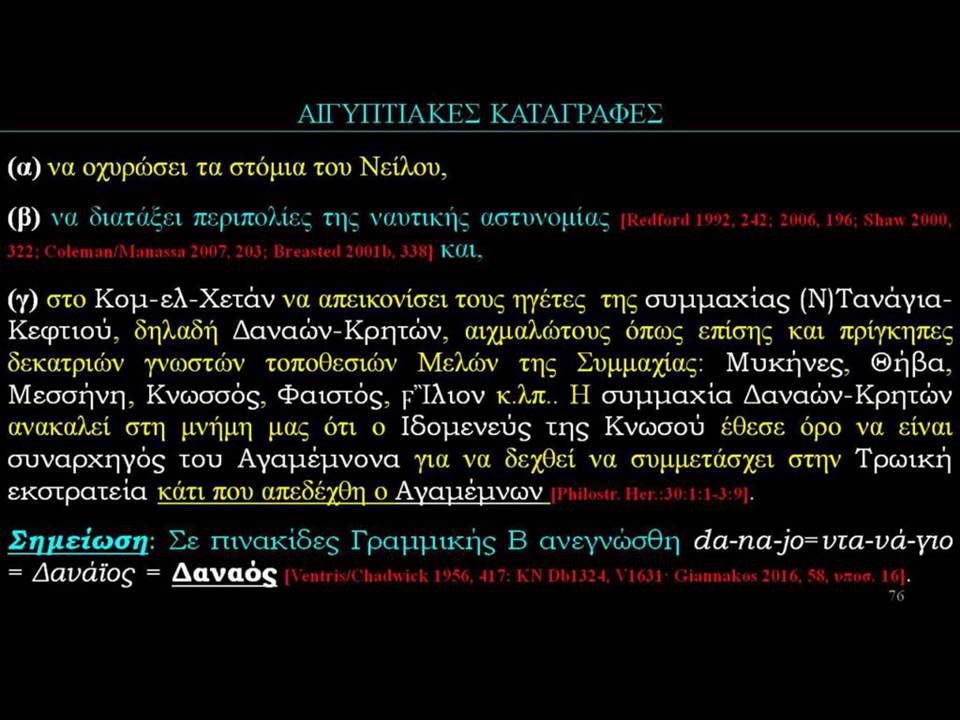
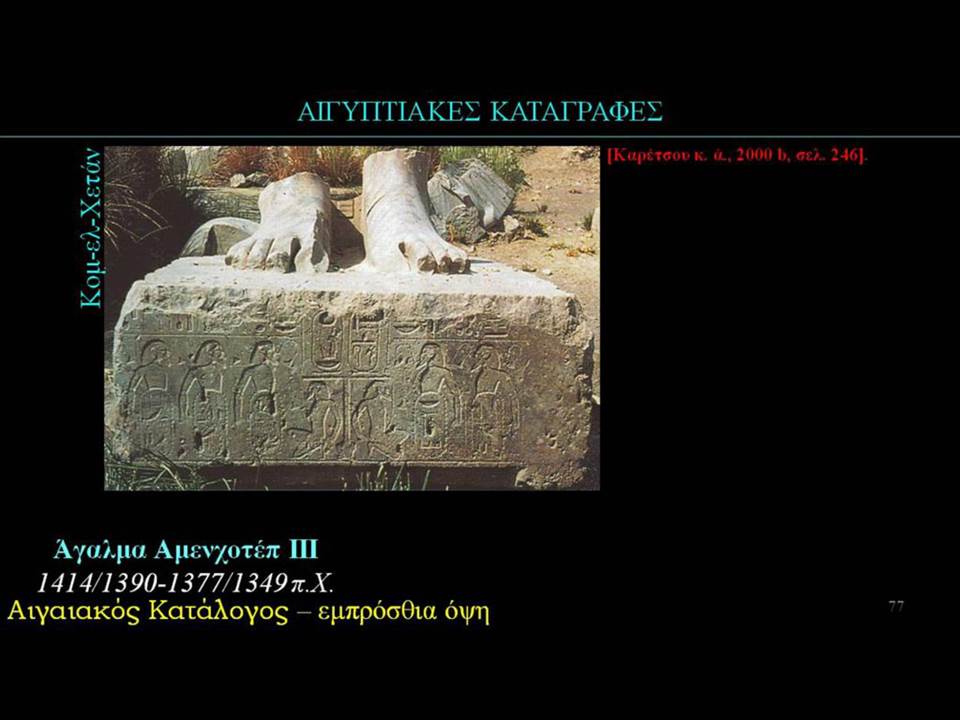
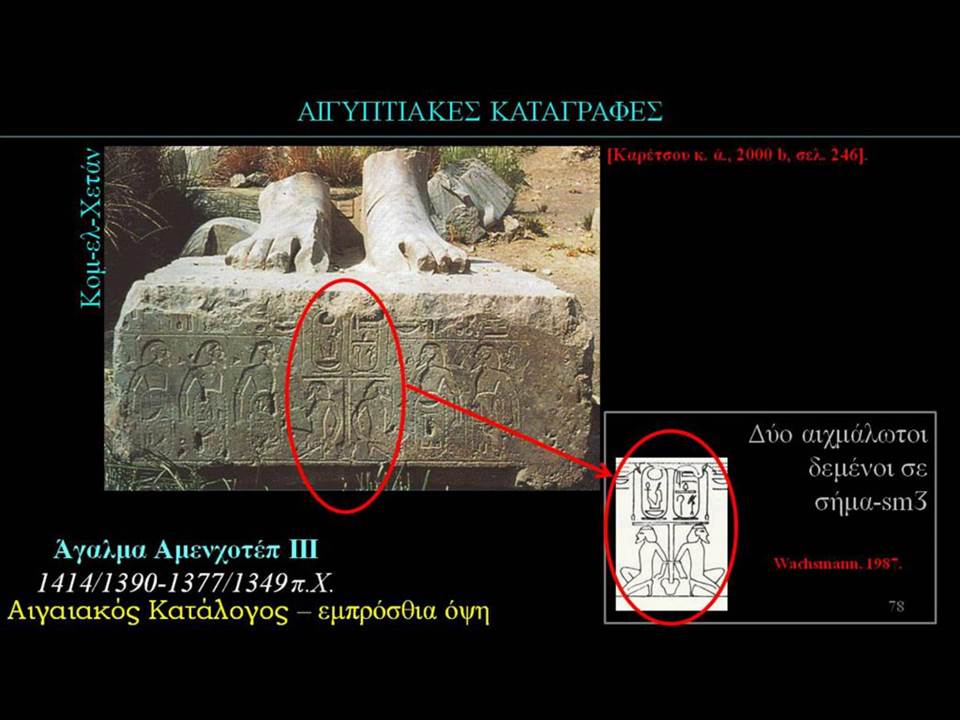
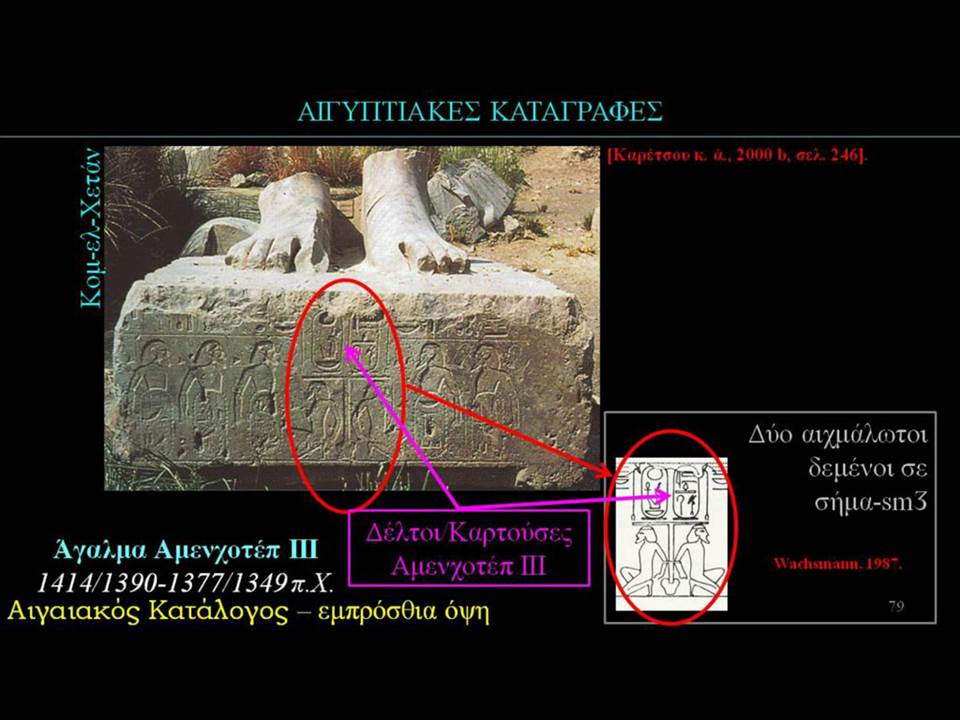
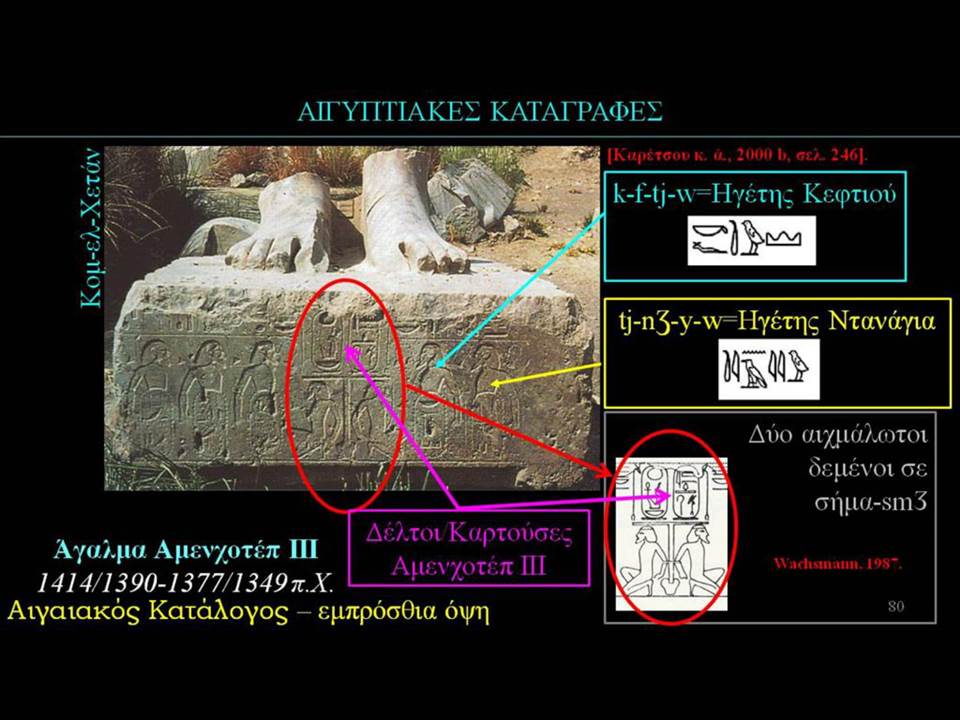
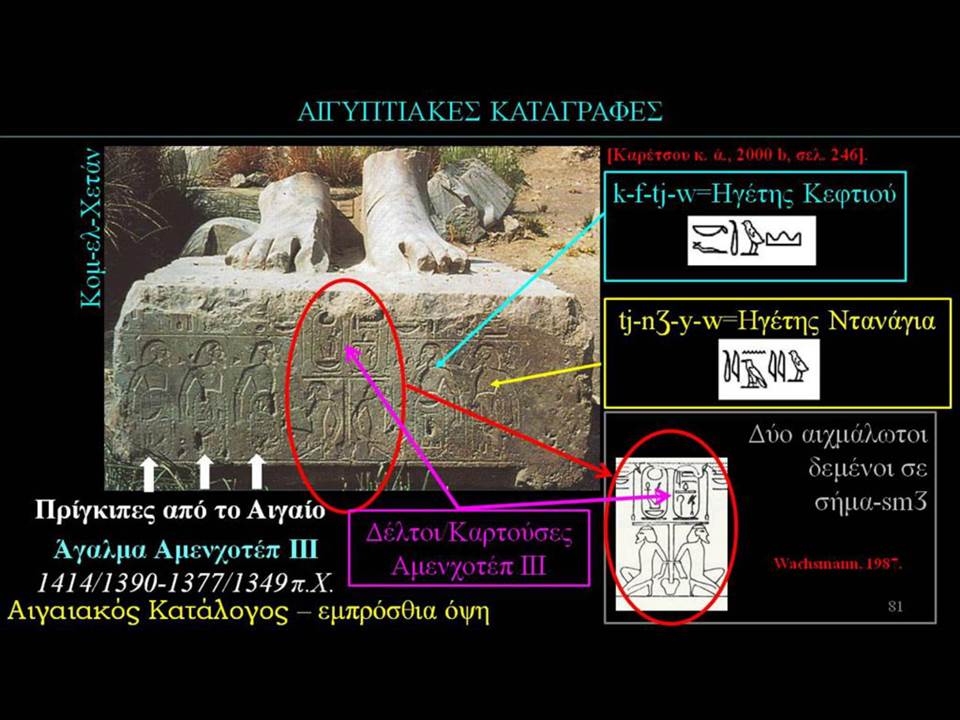
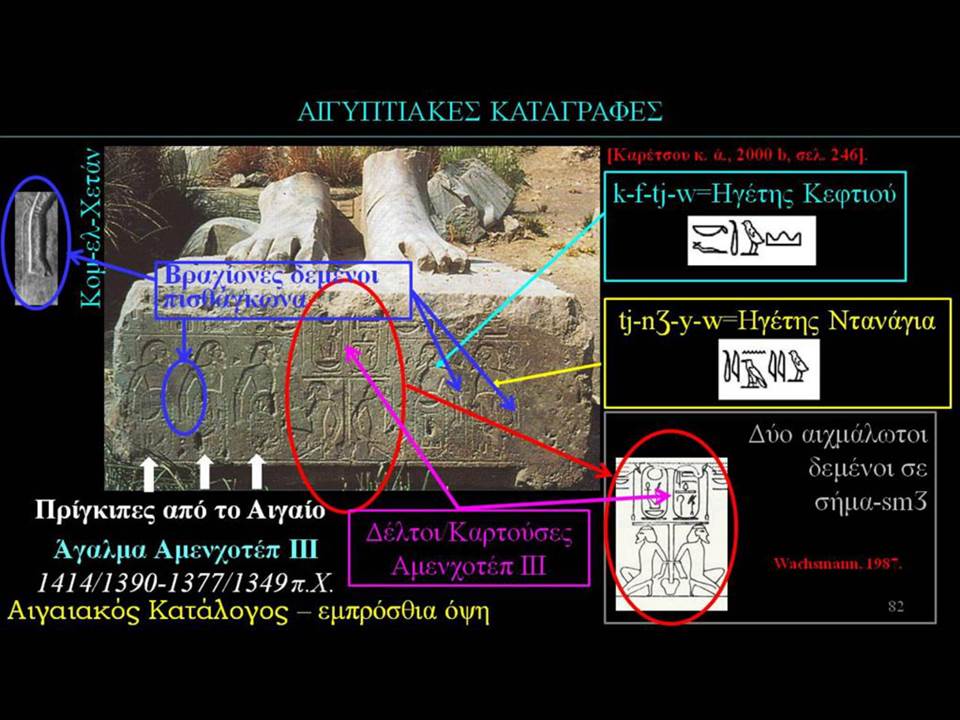
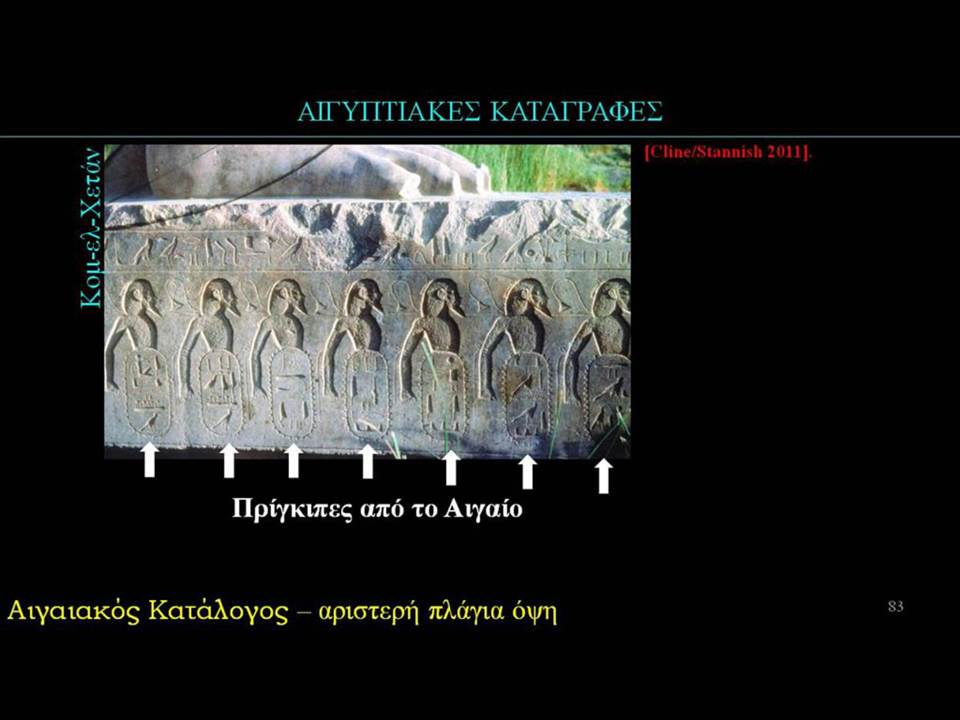
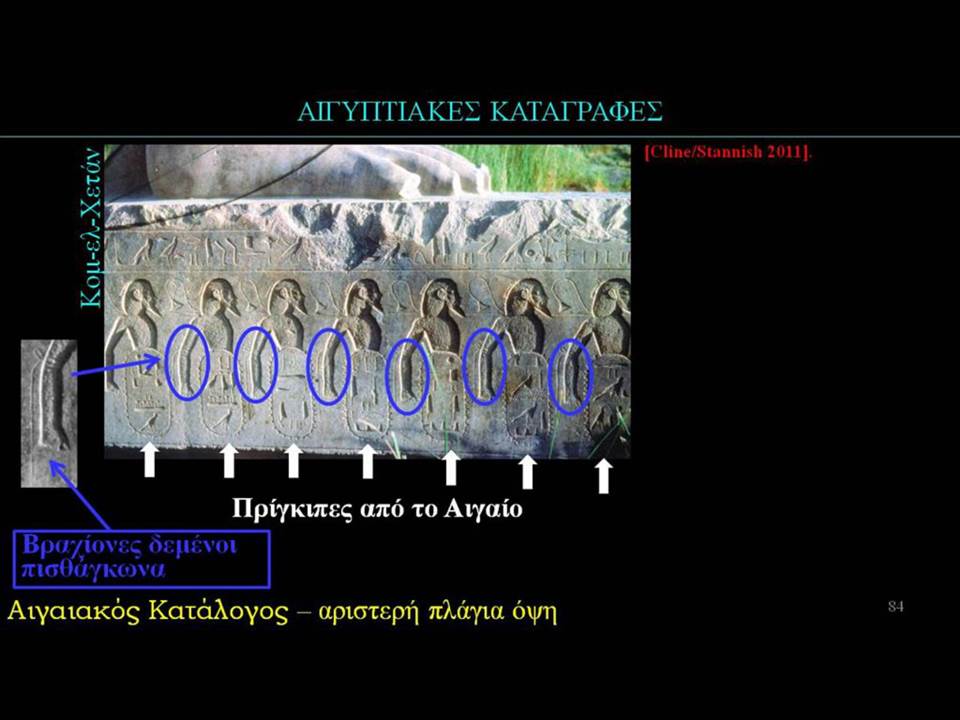
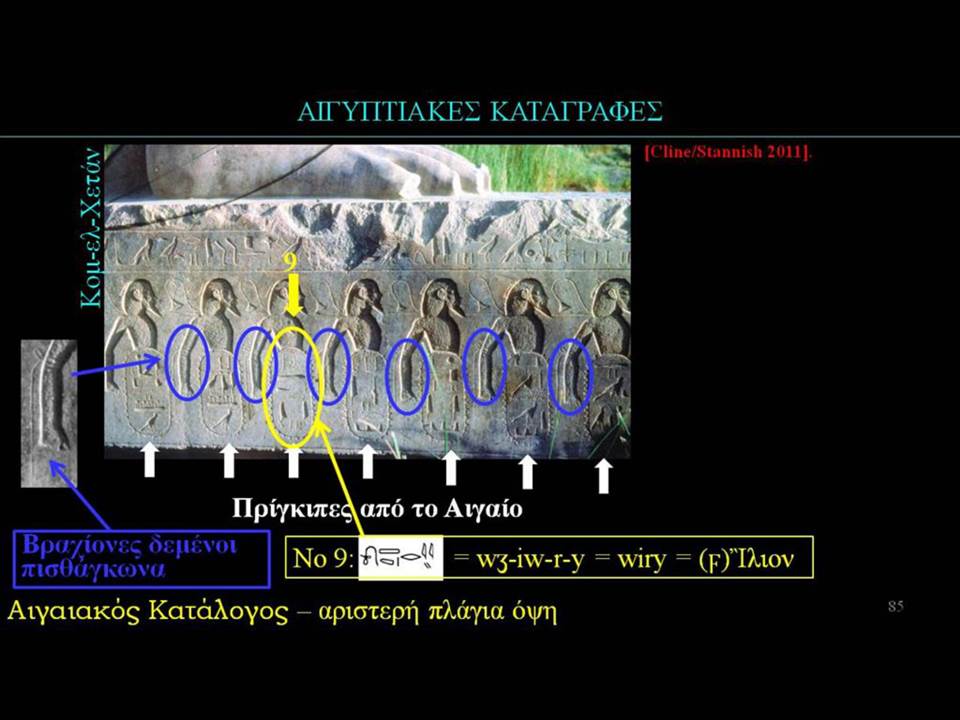
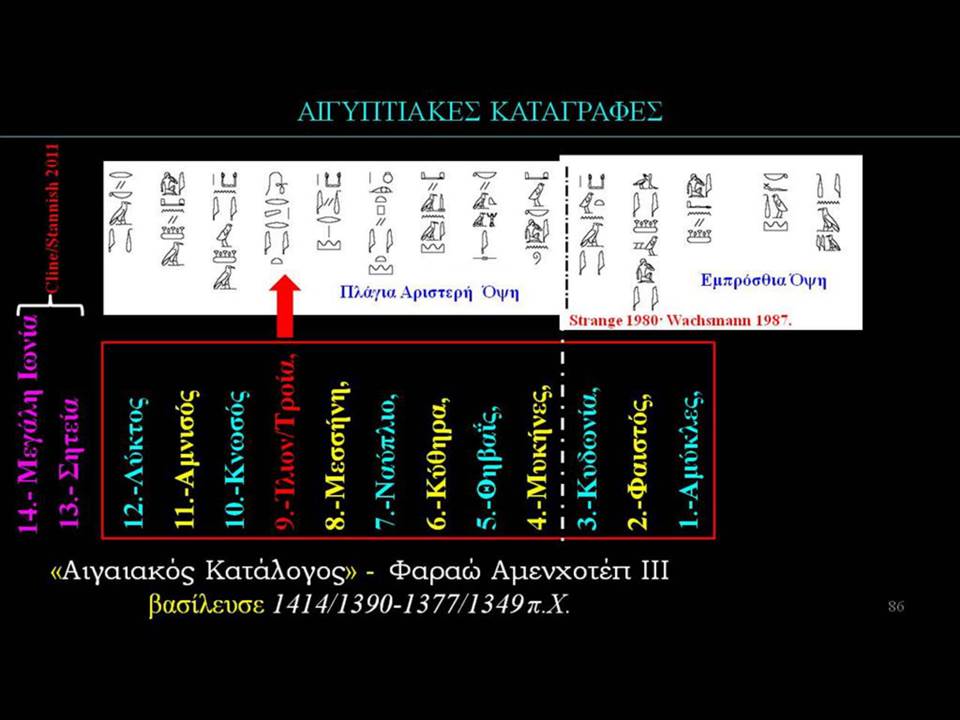
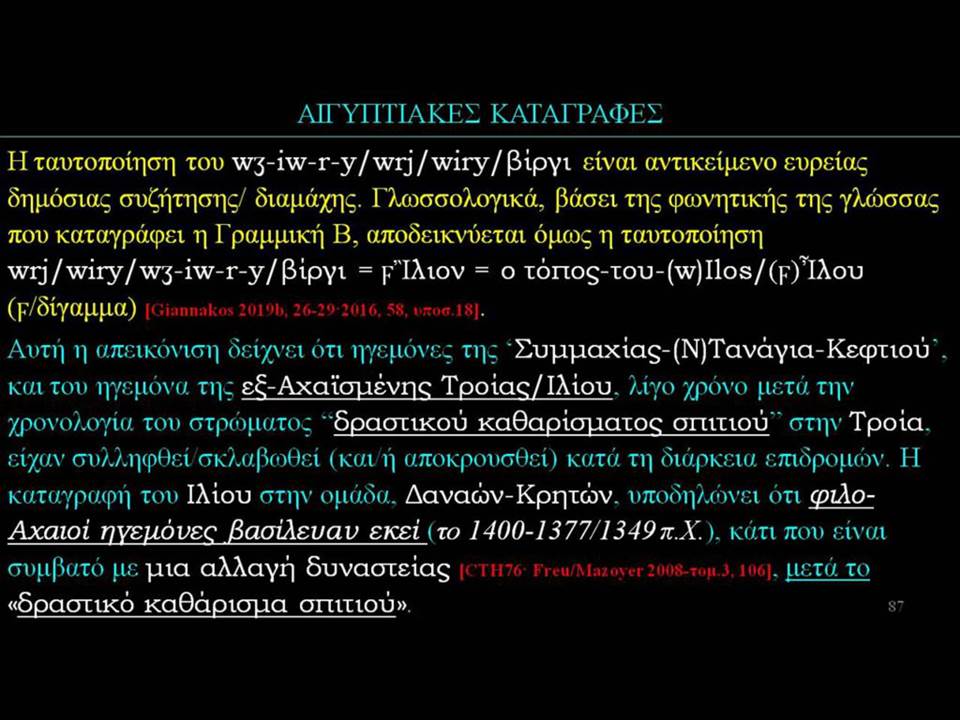
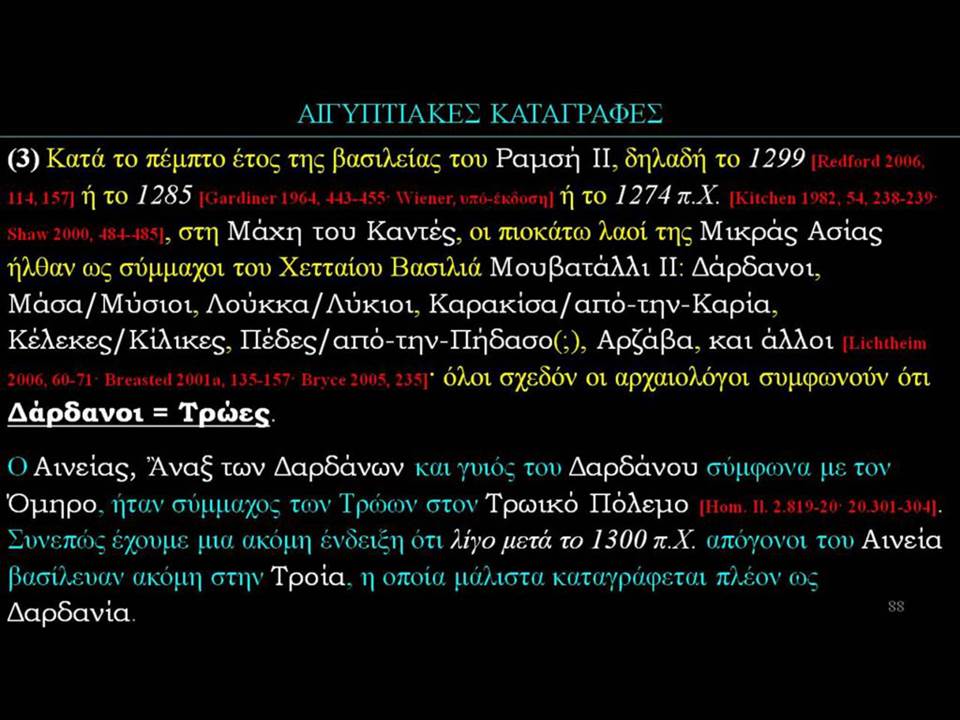
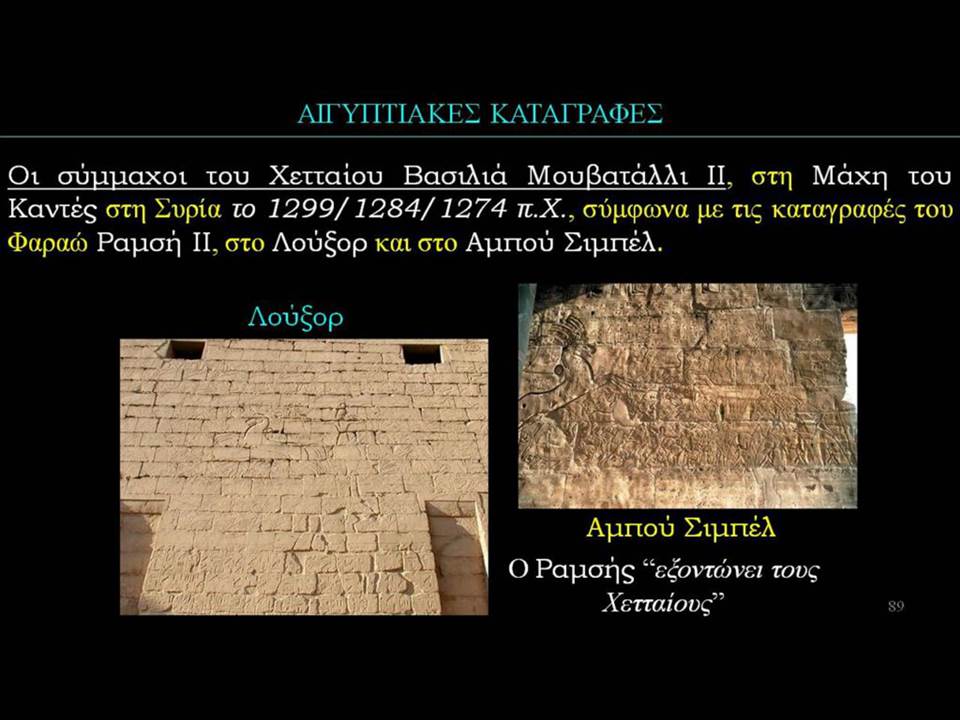

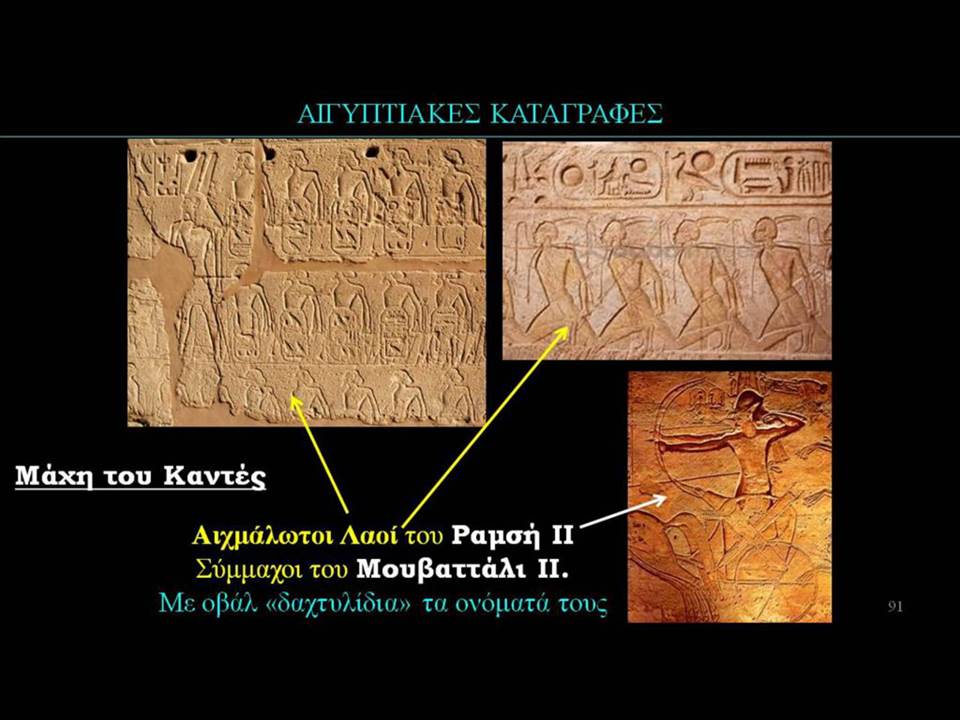
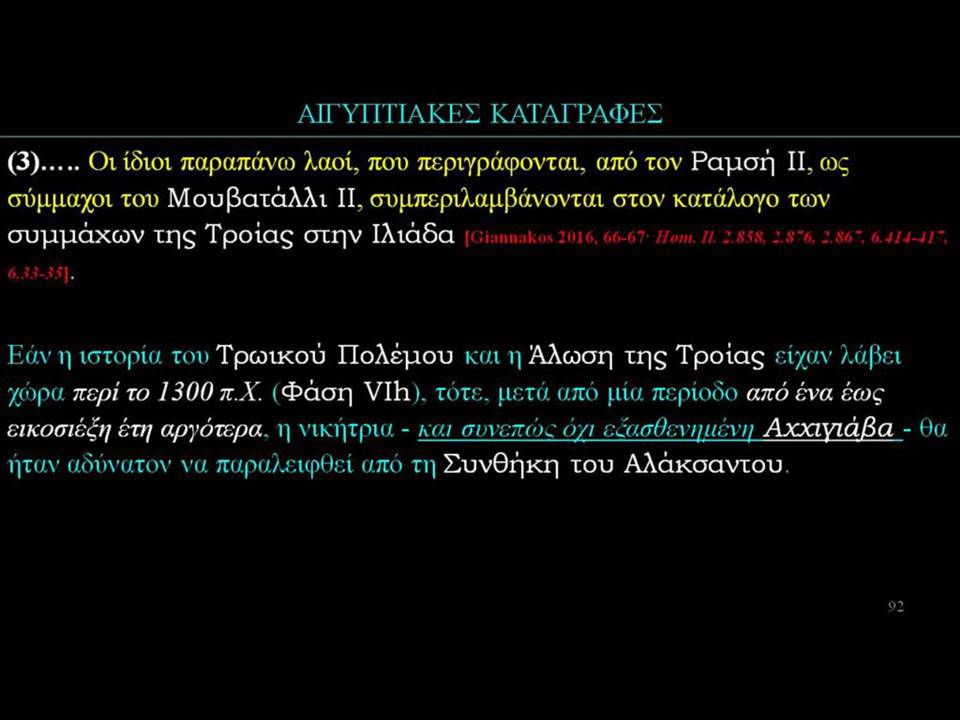
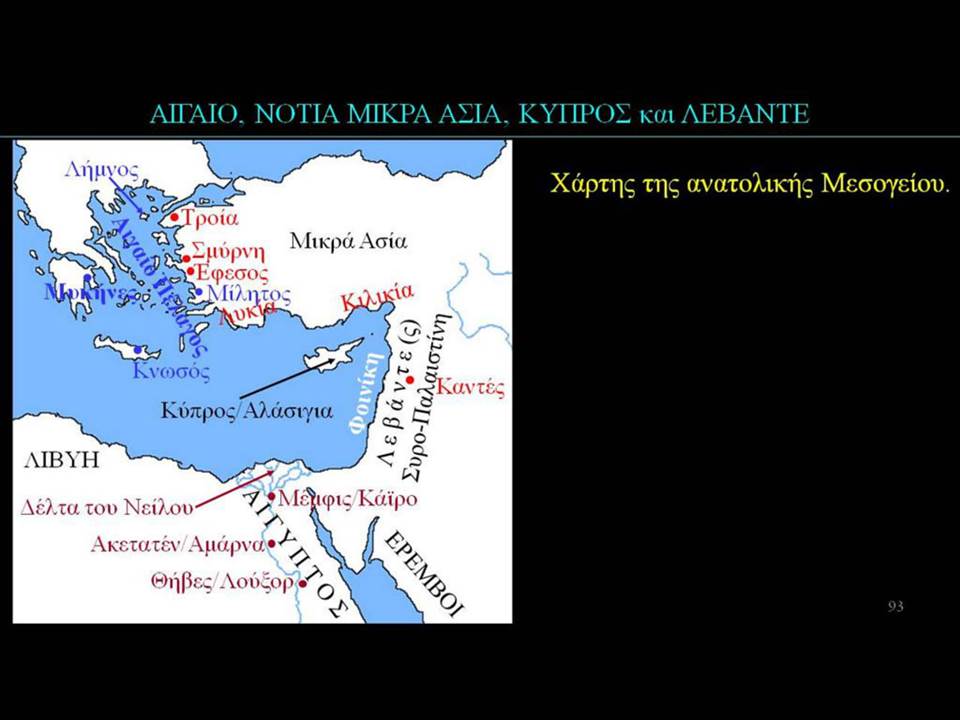
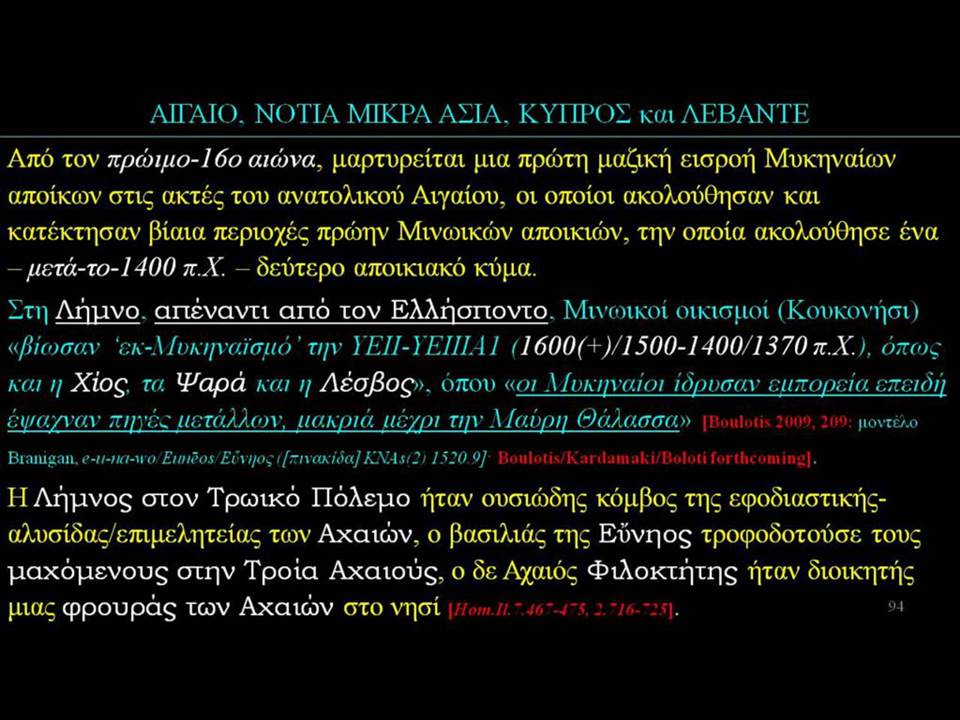
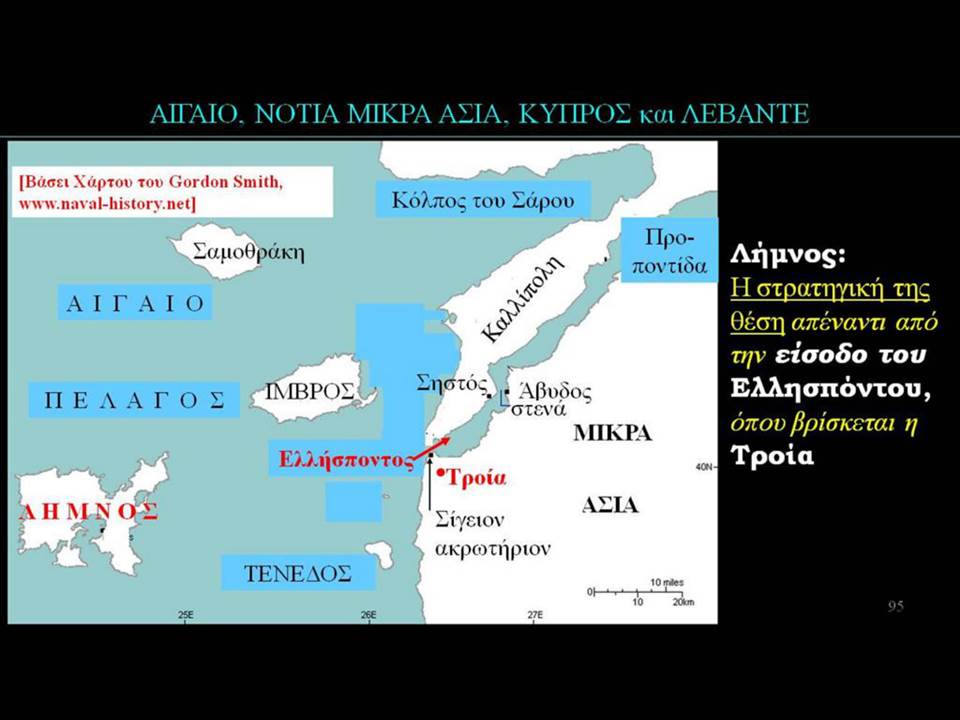
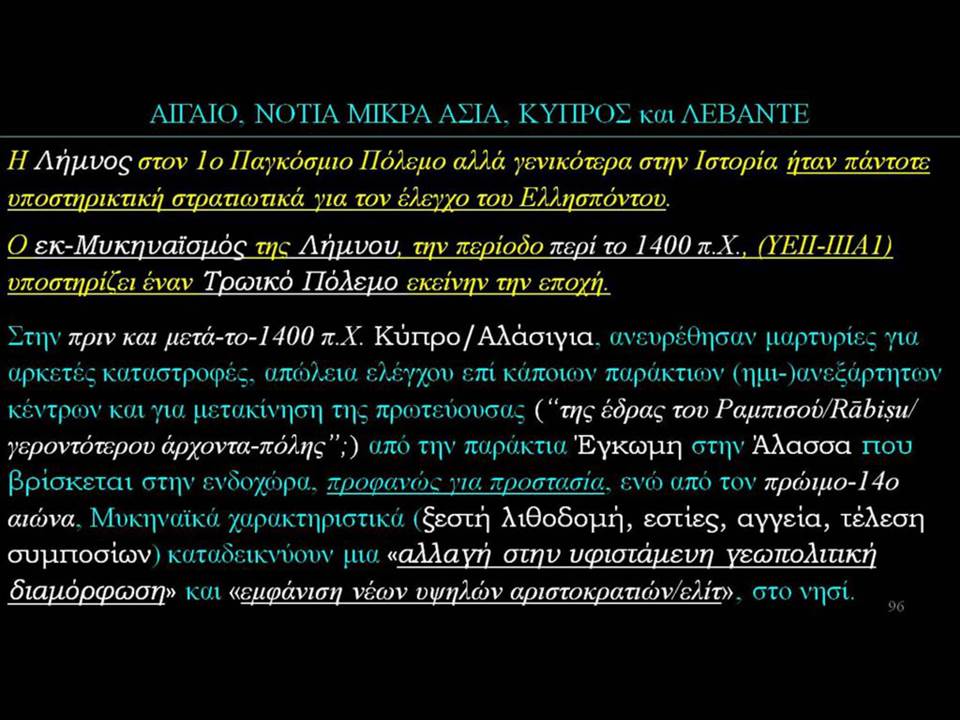
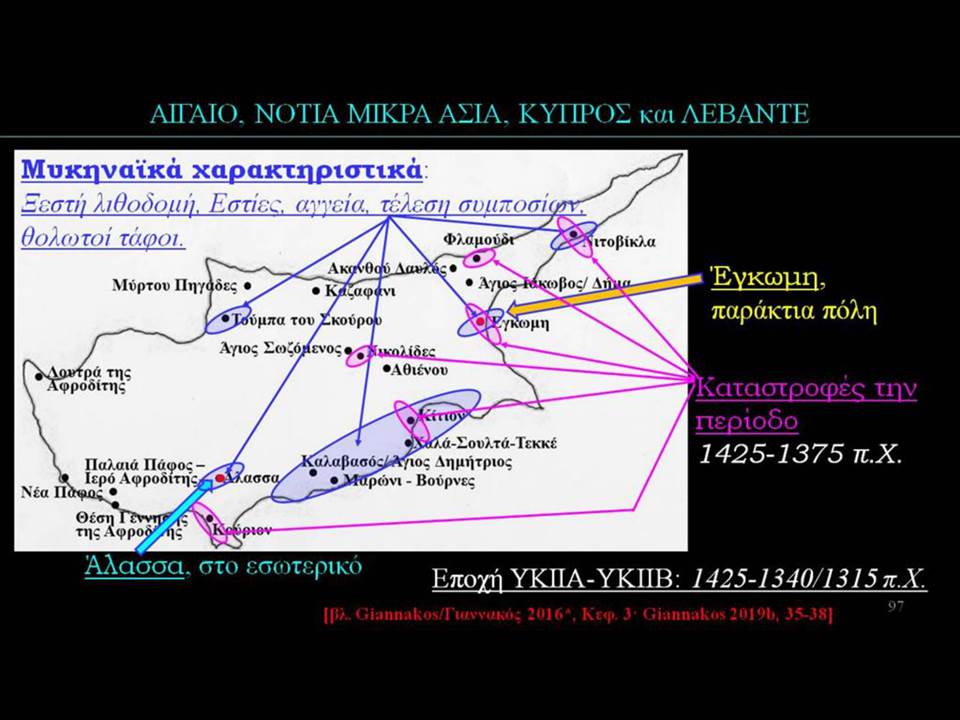
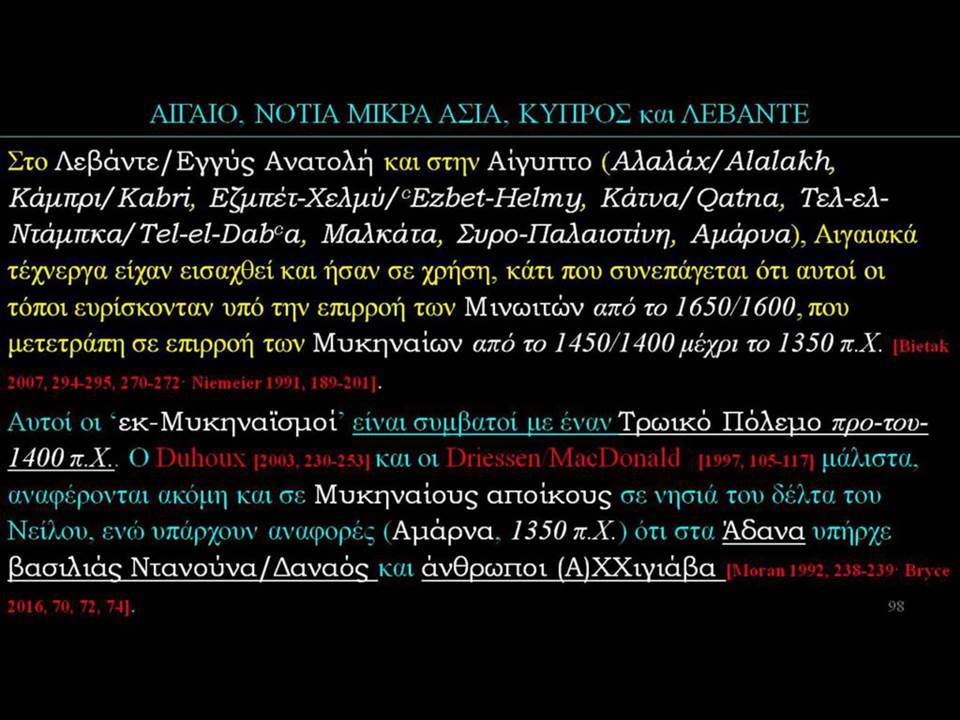
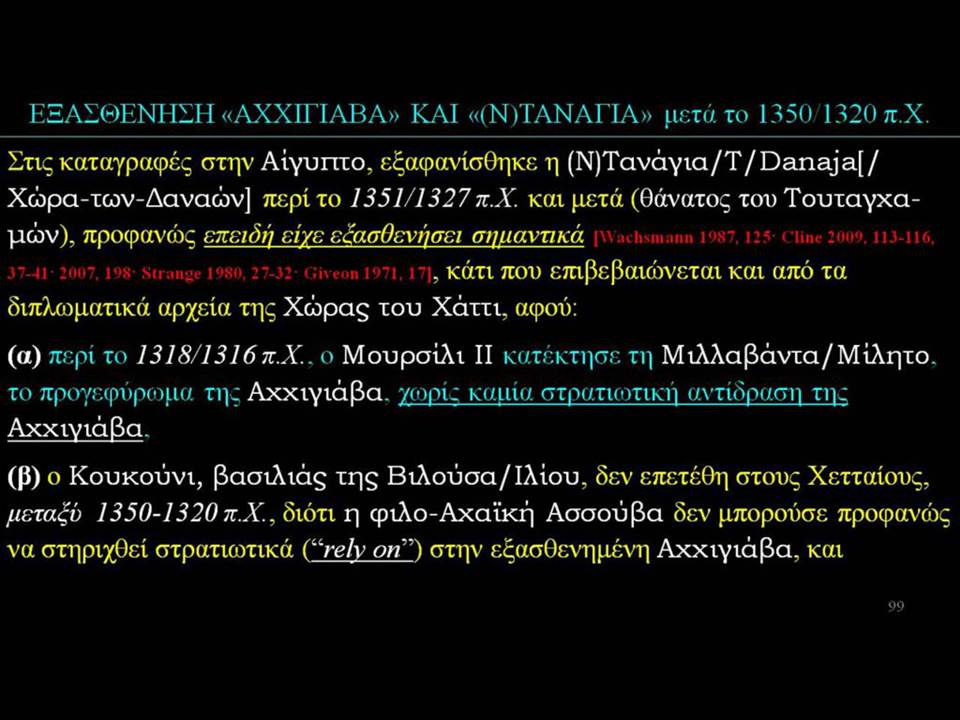
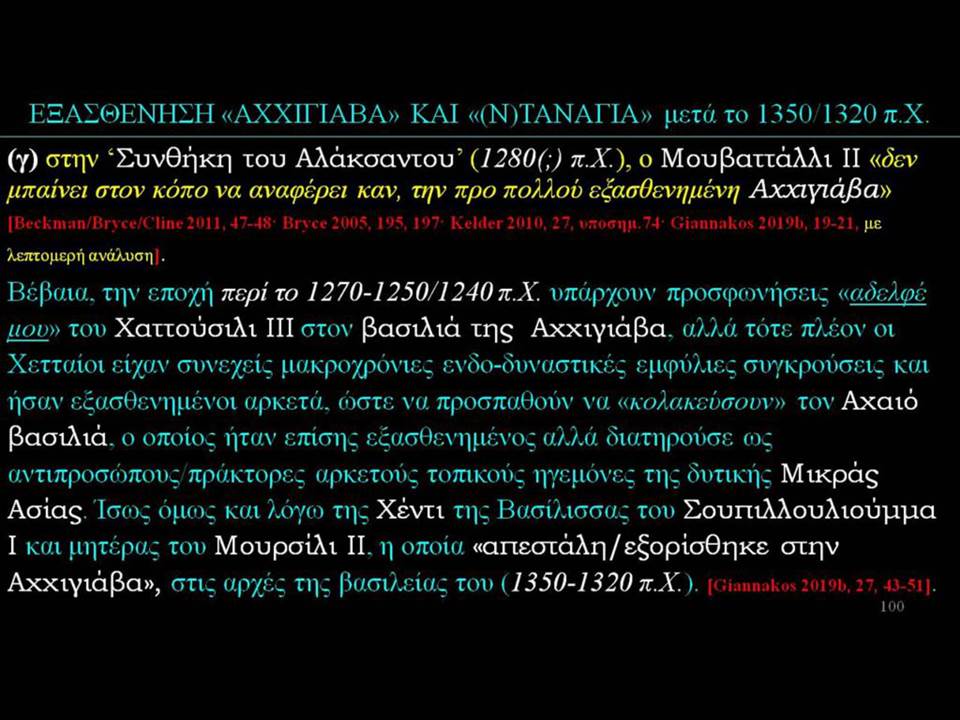
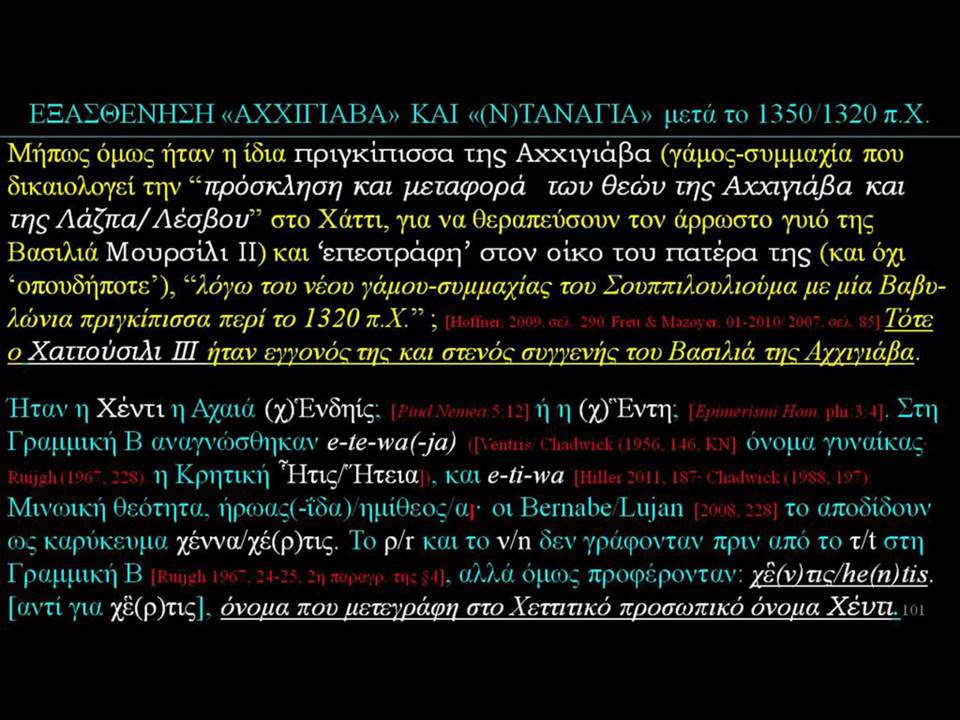
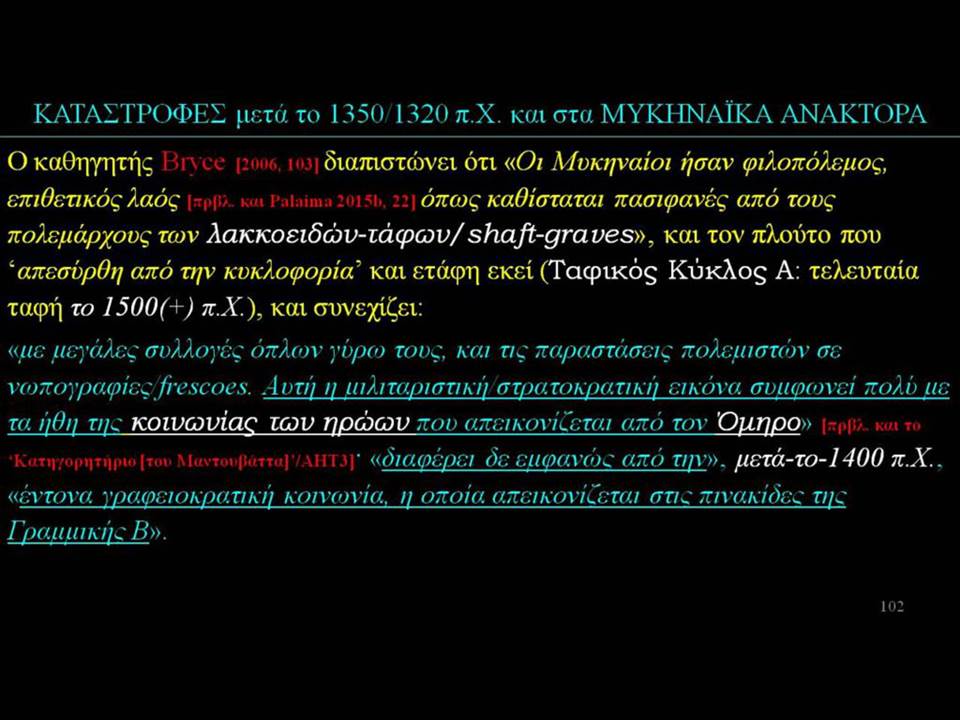

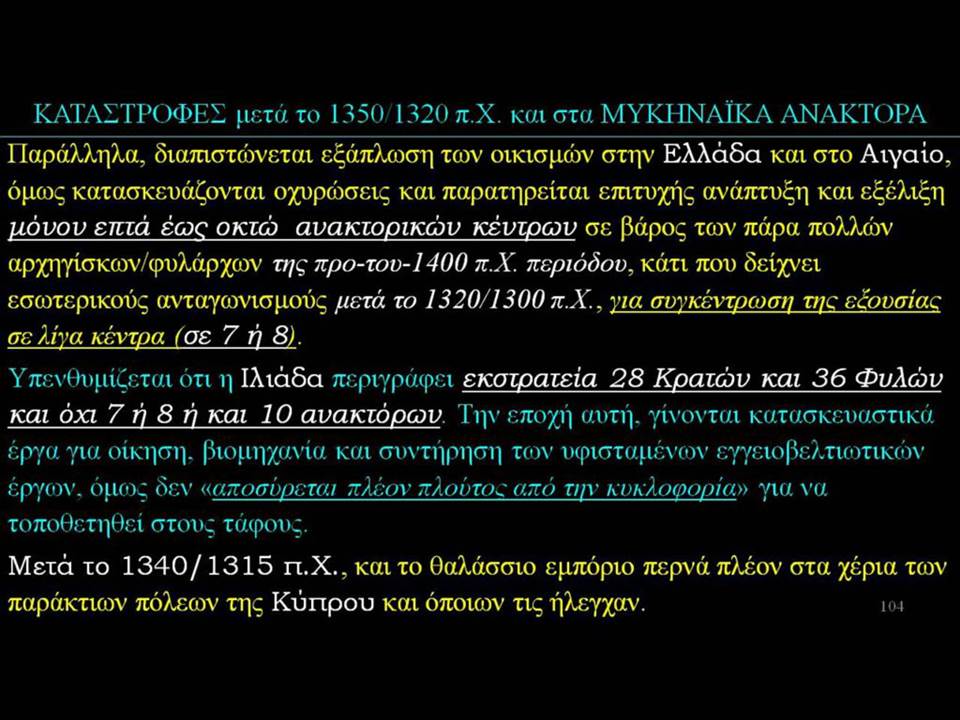
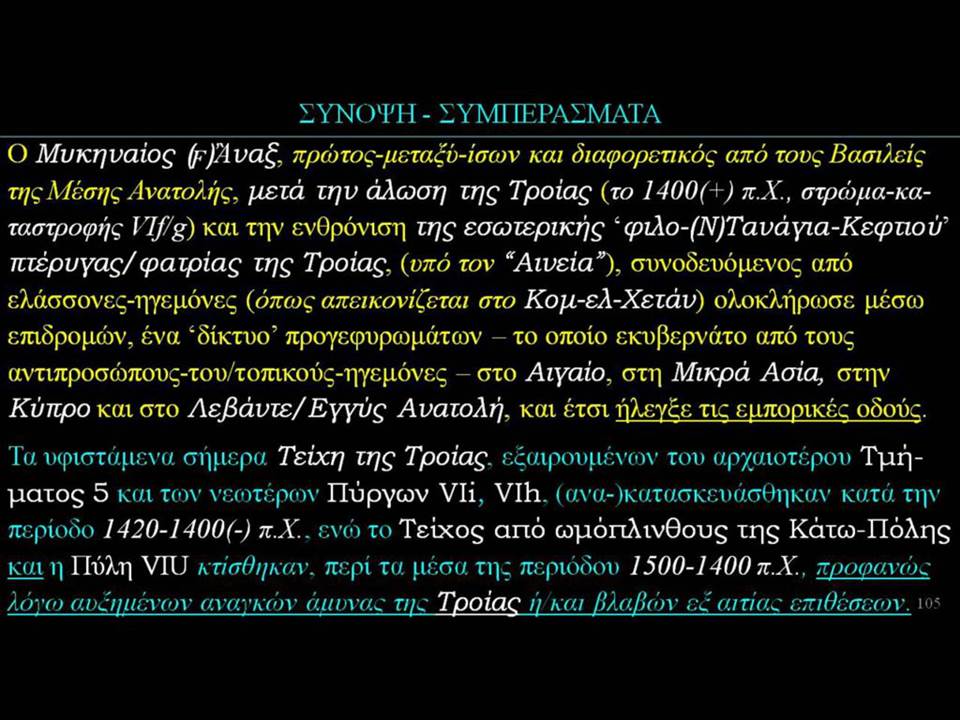
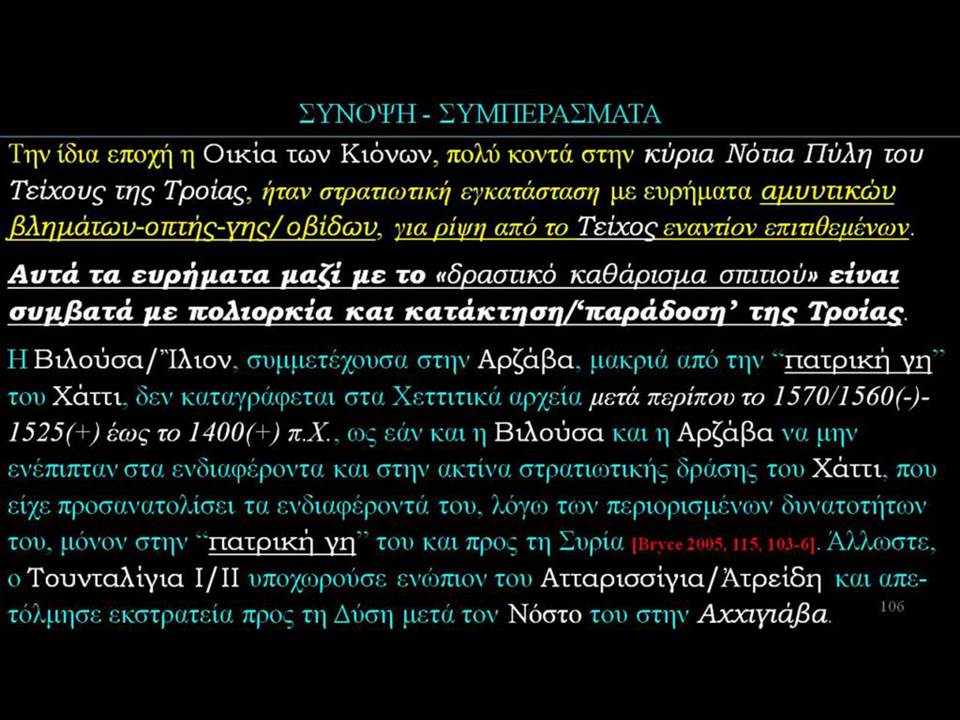
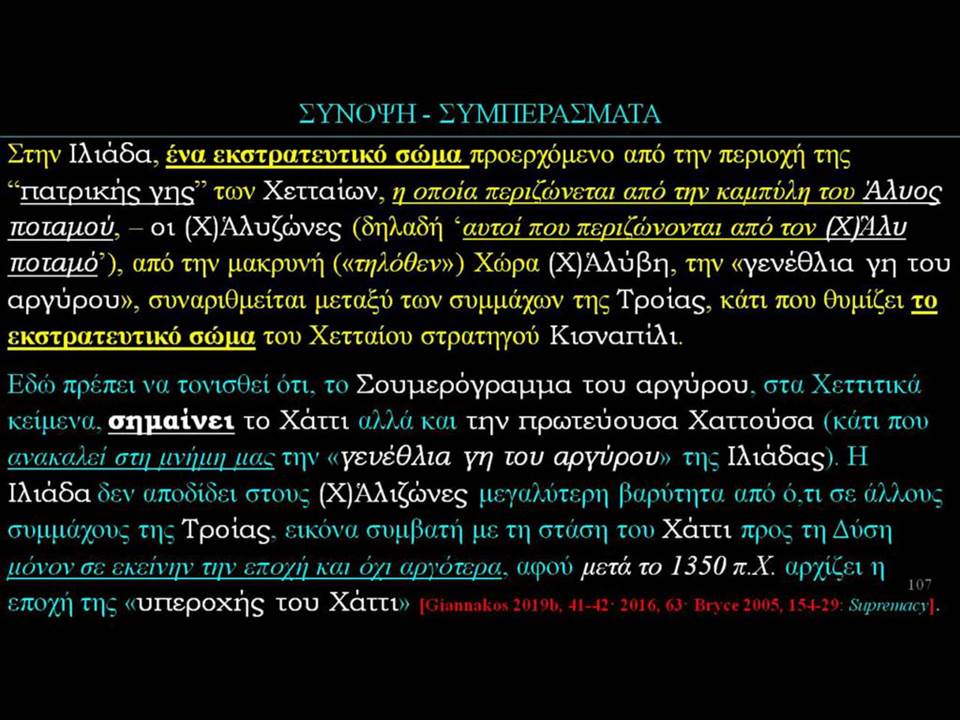
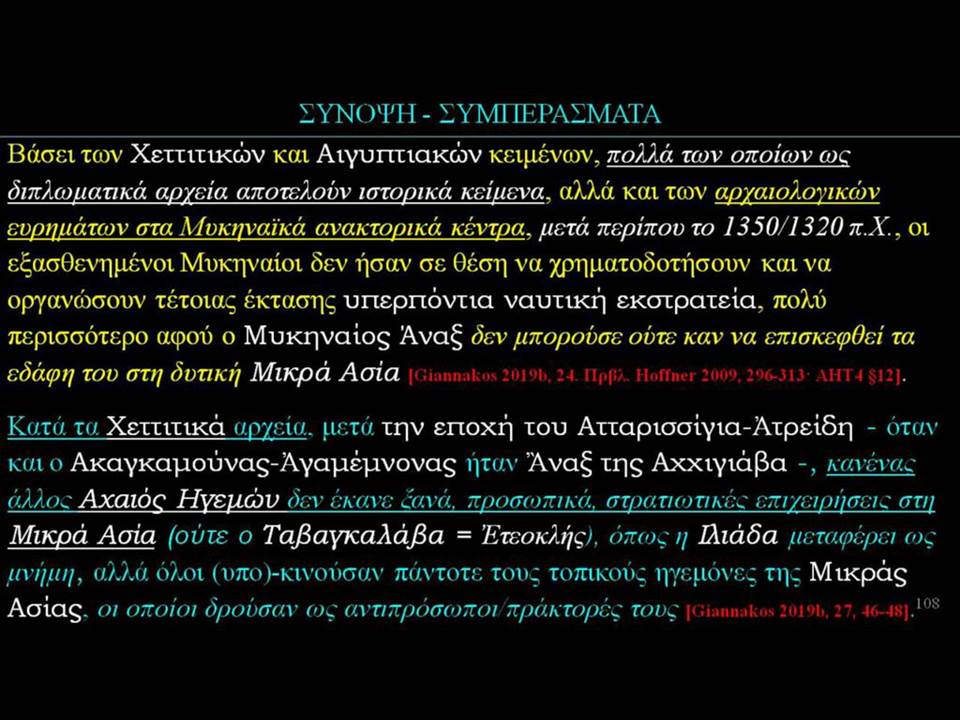

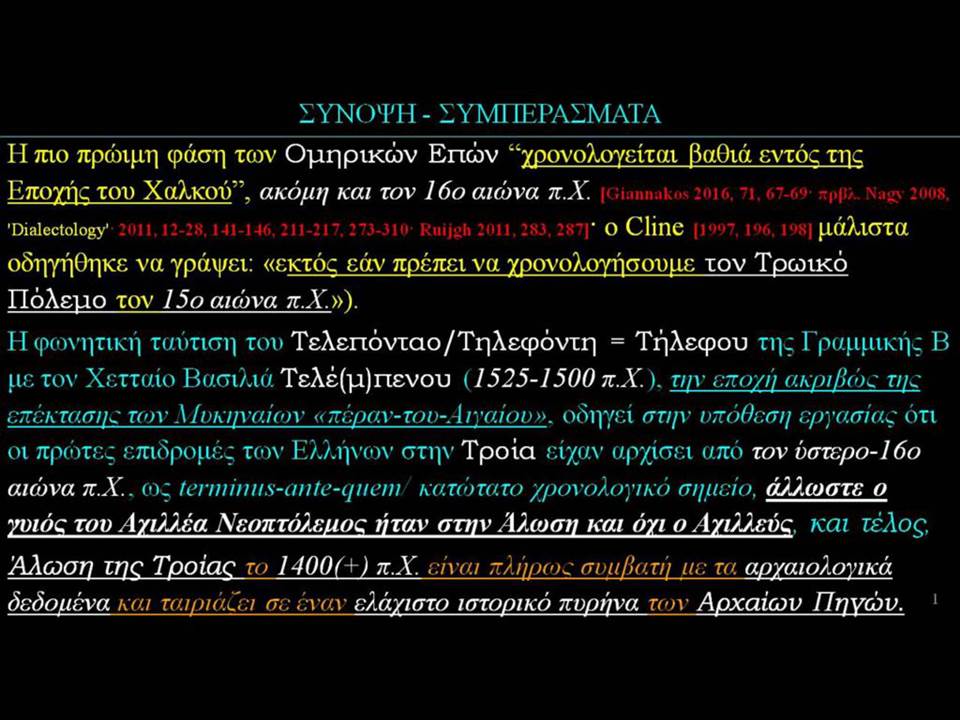
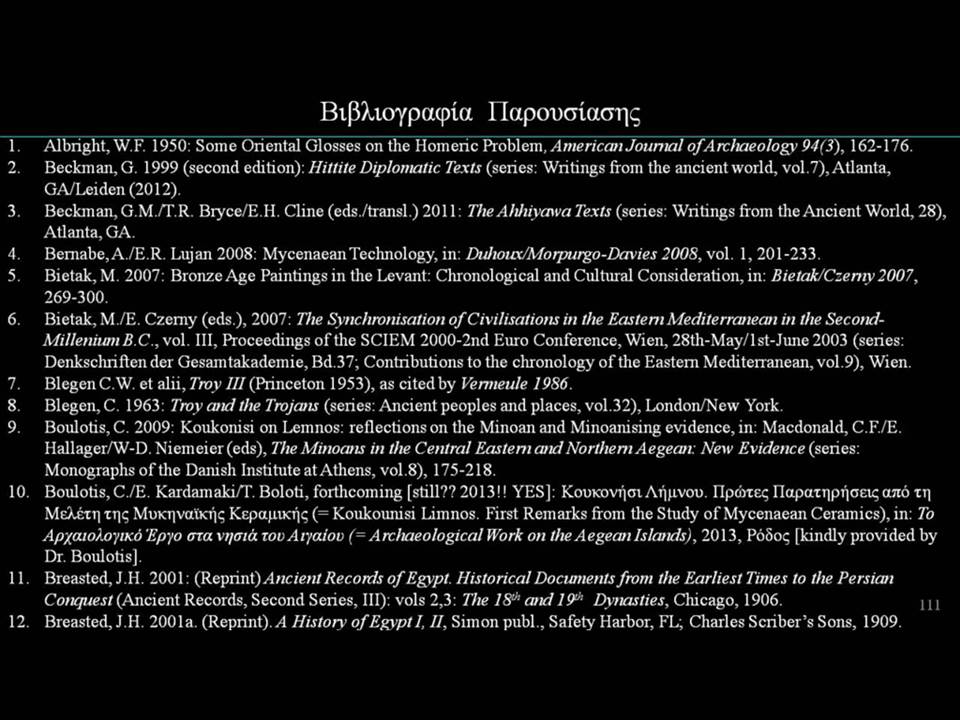
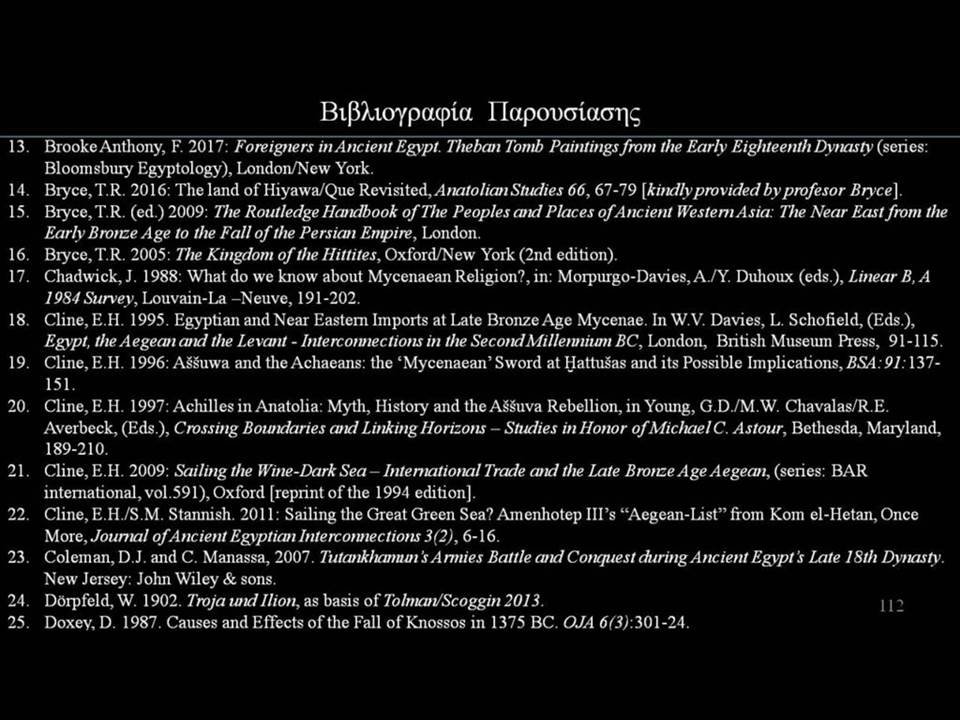
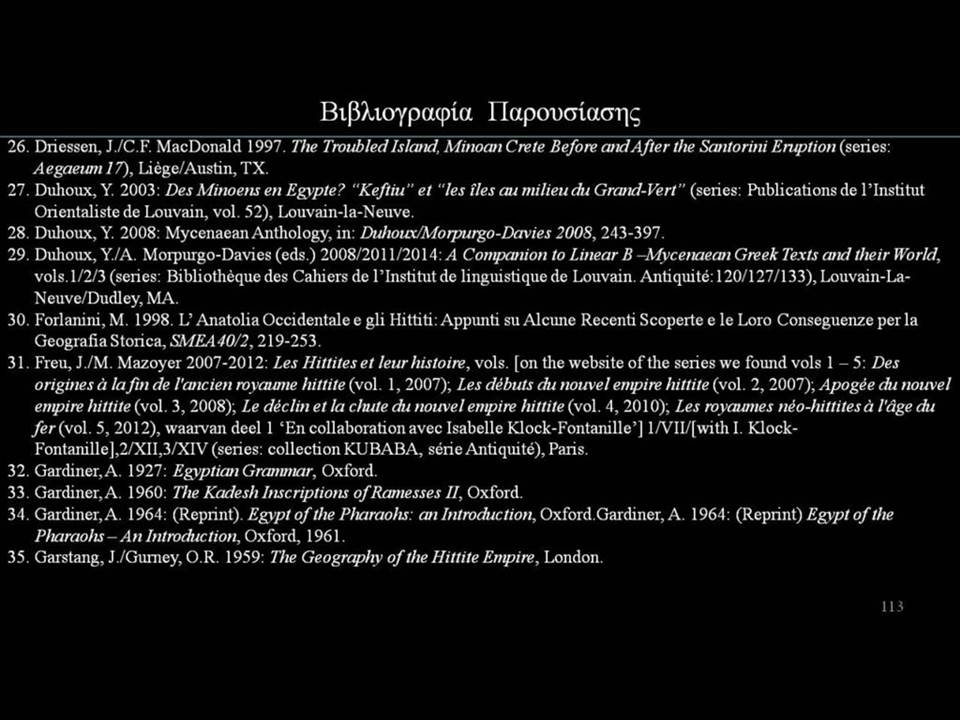
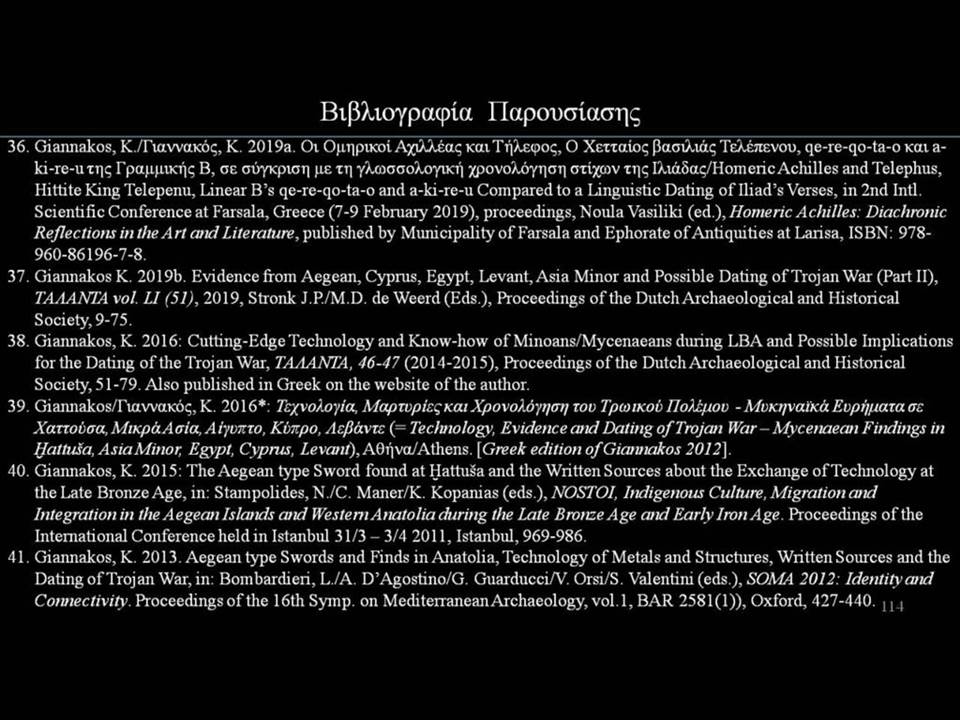
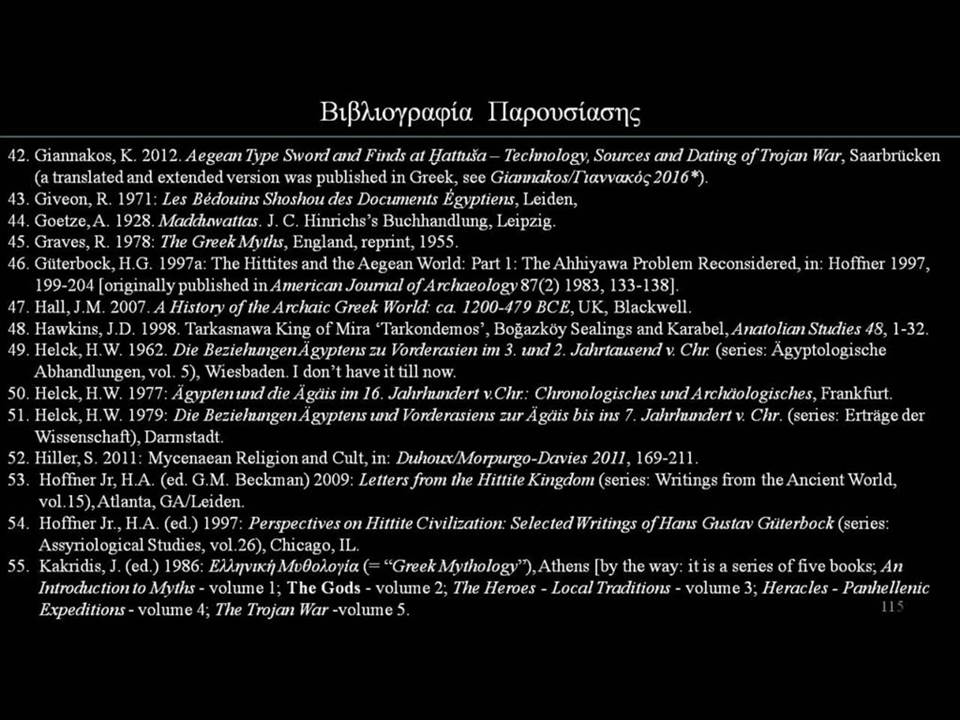
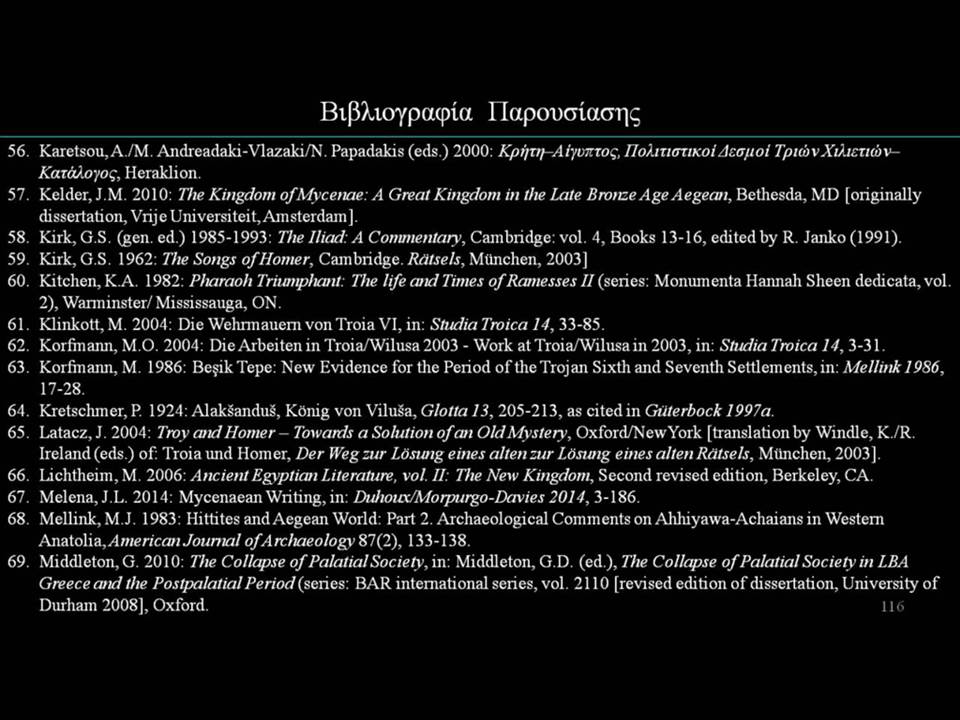
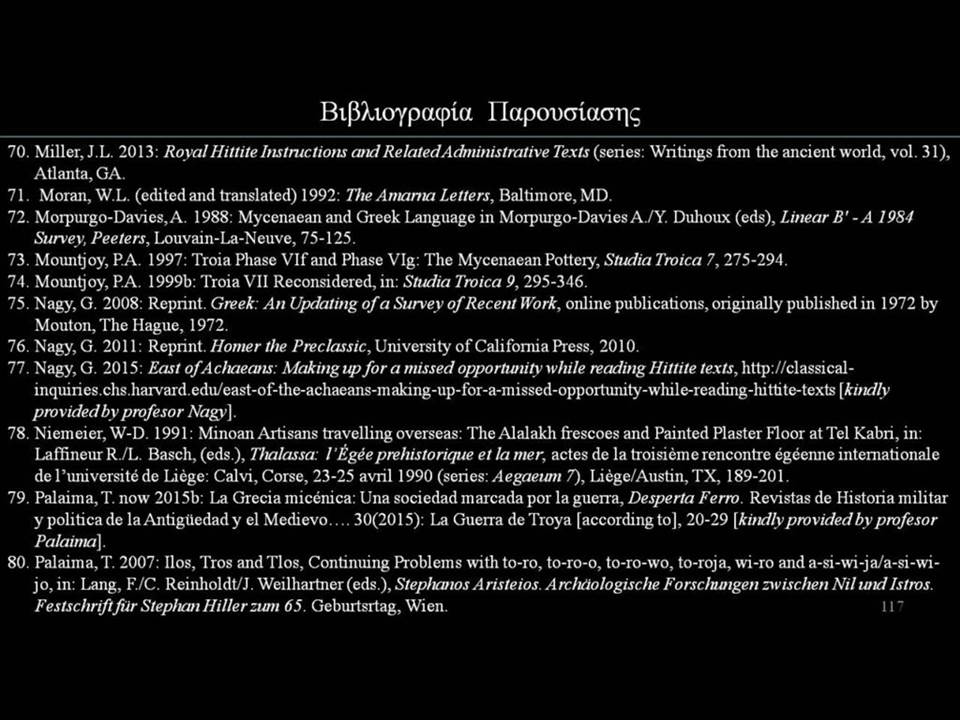
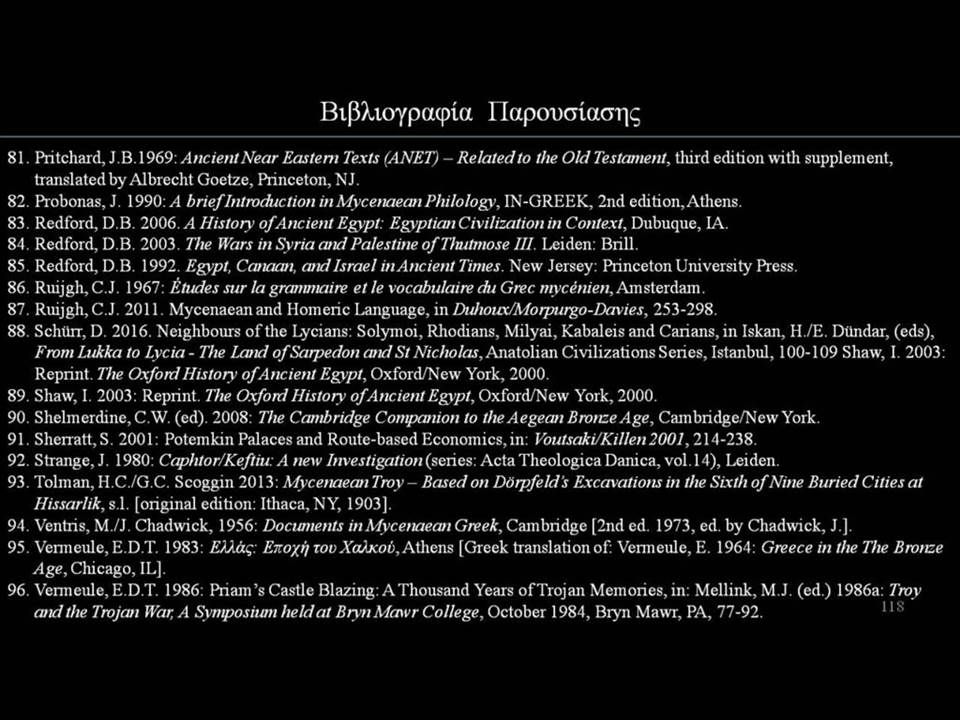
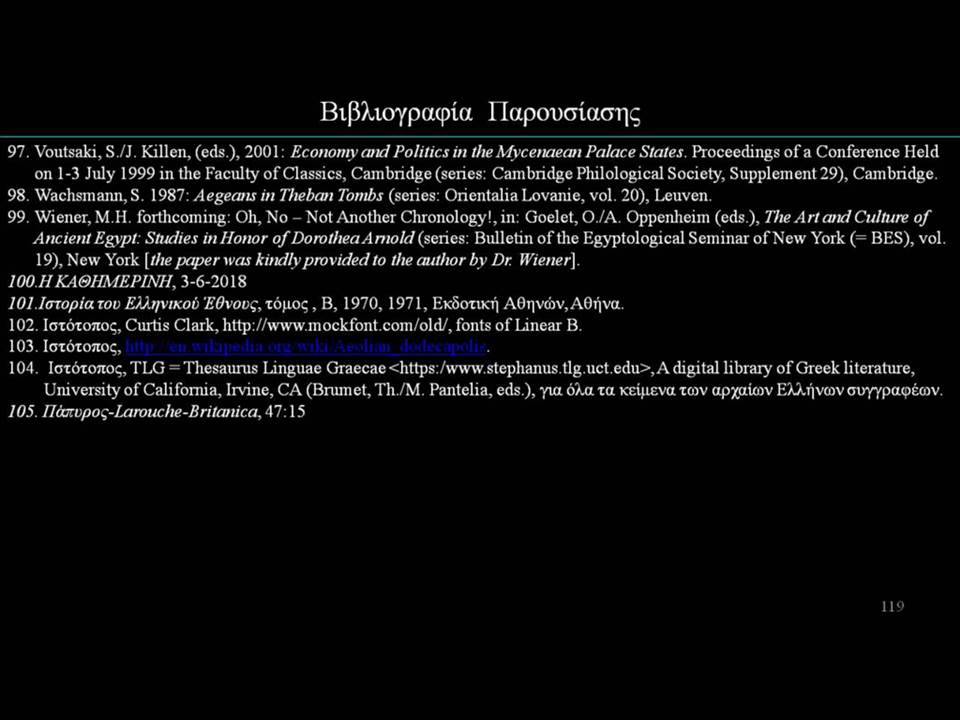
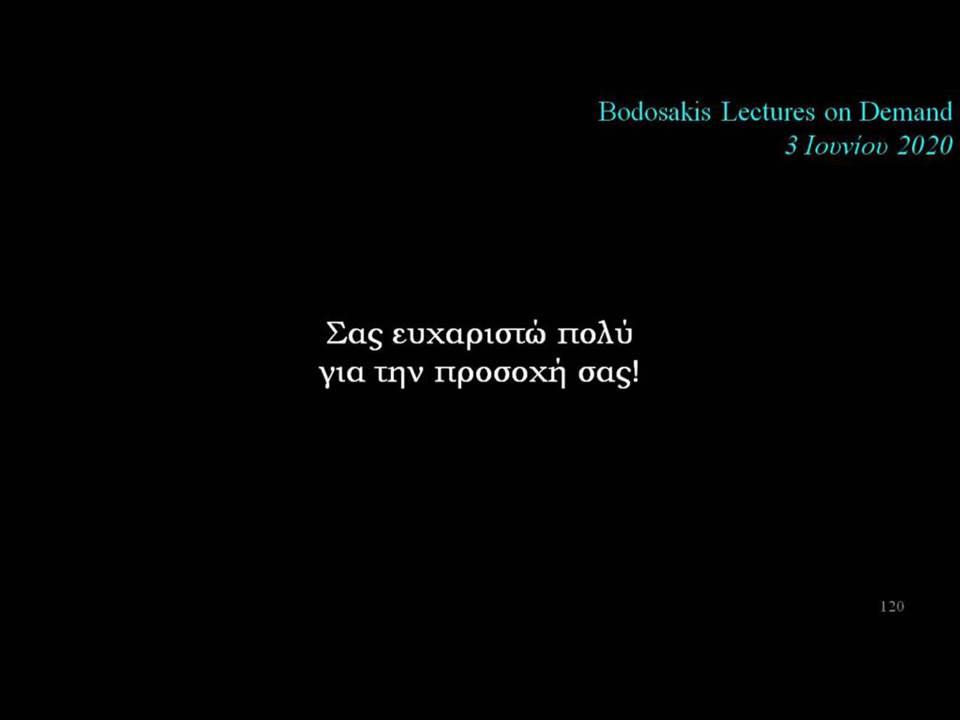
Γιαννακός Κωνσταντίνος
Γλώσσα
Ελληνική
Ημερομηνία
03/06/2020
Διάρκεια
00:46:20
Εκδήλωση
BLOD Web Lectures
Χώρος
Διαδικτυακή διάλεξη
Διοργάνωση
BLOD
Κατηγορία
Αρχαιολογία
Ετικέτες
BLOD Web Lectures, Τρωικός πόλεμος, Ιλιάδα, αρχαία ελληνική γραμματεία, έπος, αρχαιολογικά δεδομένα, αρχαιολογικά ευρήματα, Τροία
Η ομιλία αυτή πραγματοποιήθηκε στο πλαίσιο της σειράς Blod Web Lectures. Πρόκειται για μια προσπάθεια που υλοποιήθηκε χάρη στη θερμή ανταπόκριση των ομιλητών σε μια πρωτοβουλία της Ομάδας του BLOD, με σκοπό να υποκατασταθεί στο ελάχιστο η λειτουργία και η θεματική ποικιλία των εκδηλώσεων λόγου για όσο διάστημα οι αίθουσες διαλέξεων παραμένουν κλειστές ή υπολειτουργούν εξαιτίας της πανδημίας.
Η ομιλία αυτή από την 1η Δεκεμβρίου 2020 υπάρχει στο BLOD και στην, εμπλουτισμένη με νεώτερα στοιχεία, αγγλόφωνη εκδοχή της την οποία θα βρείτε εδώ.
Η Ιλιάδα, ως ποιητικό έργο, διηγείται πενήντα-μία ημέρες του δέκατου έτους του ‘Τρωικού Πολέμου’, ενώ άλλα κείμενα της αρχαίας Ελληνικής Γραμματείας αντηχούν πολεμικές επιχειρήσεις εναντίον της Τρωάδος, τα οποία υποτίθεται ότι συνέβησαν κατά τη διάρκεια μιας άγνωστης περιόδου προ του ‘Τρωικού Πολέμου της Ιλιάδας’.
Οι αρχαιολόγοι θεωρούν τριτεύουσα πηγή τα Έπη· μπορούν τα αρχαιολογικά δεδομένα, να μας οδηγήσουν - επαγωγικά - σε συμπέρασμα για το τι συνέβη εκείνην την μακρινή χρονικά εποχή;
Αυτή η παρουσίαση βασίζεται στα αρχαιολογικά ευρήματα τα χρονολογούμενα τους 15ο-13ο αιώνες π.Χ., που ήλθαν στο φως στις περιοχές του Αιγαίου, της Μικράς Ασίας, της Κύπρου, της Αιγύπτου και του Λεβάντε/Εγγύς Ανατολής, τα αναλύει και τα εξετάζει κριτικά. Επί πλέον, τα κείμενα των αρχείων της Χώρας του Χάττι και των Αιγυπτιακών καταγραφών συσχετίζονται προς τα κείμενα των πινακίδων Γραμμικής Β από την Ελλάδα, διότι συνδυαζόμενα θα μπορούσαν να μας οδηγήσουν στο να καθορίσουμε το επίπεδο και την περίοδο της Μυκηναϊκής ισχύος και επιρροής στο εξωτερικό αλλά και την περίοδο παρακμής της. Εξετάζονται ακόμη τα ευρήματα από τα στρώματα καταστροφών στην ίδια την Τροία, όπως προέκυψαν και αξιολογήθηκαν από τους ανασκαφείς της (Schlieman, Dörpfeld, Blegen και Korfman), οι οποίοι είχαν το προνόμιο να είναι οι πρώτοι (και μοναδικοί στην ιστορία, όπως σε κάθε ανασκαφή, κατά τον καθηγητή Ντούμα) που «συναντήθηκαν» με τα ευρήματα των αδιατάρακτων ακόμη τότε στρωμάτων της Τροίας.
Αναφέρουν τα Χεττιτικά αρχεία έναν Ἀτρείδη και έναν Ἀγαμέμνονα, πριν από το 1400 π.Χ.; Αναφέρουν οι Αιγυπτιακές καταγραφές ότι, μεταξύ 1400 και 1377/1349 π.Χ., η Τροία είχε φιλο-Αχαιούς ηγεμόνες; Μήπως τελικά η Τροία δεν κατεστράφη ολοσχερώς αλλά, όπως η Αιολική παράδοση αναφέρει, οι νικητές Αχαιοί εγκατέστησαν εκεί φιλο-Αχαϊκή δυναστεία, τον Αινεία και τους διαδόχους του περί το 1400 π.Χ.; Ποια εικόνα ανακύπτει από τα αρχαιολογικά ευρήματα στην Κύπρο, στο Λεβάντε και γενικότερα στην ανατολική Μεσόγειο;
ΚΩΝΣΤΑΝΤΙΝΟΣ Σ. ΓΙΑΝΝΑΚΟΣ [Πολιτικός Μηχανικός, διπλ. ΕΜΠ, Δρ. ΑΠΘ, Εταίρος/Fellow της Αμερικανικής Εταιρείας Πολιτικών Μηχανικών (ASCE)]: “ηγέτης στον τομέα της σιδηροδρομικής μηχανοτεχνίας/engineering, με πρωτοποριακή έρευνα στο σύστημα σκύρο-στρωτήρας με τους συνδέσμους” (απόσπασμα από το ASCE-news Nov. 2012, που αναγγέλλει την εκλογή του ως Εταίρου της ASCE το 2010).
Με περισσότερα από 20 έτη έρευνας που περιλαμβάνει εργαστηριακές δοκιμές, επί-του-πεδίου έρευνες και θεωρητικές αναλύσεις για: (α) υπολογισμό των δράσεων επί σιδηροδρομικής γραμμής, σκυρογραμμής και σταθερής επιδομής, και των συνεπακόλουθων βυθίσεων, (β) καθορισμό της μάζας γραμμής που συμμετέχει στην κίνηση των Μη-Ανηρτημένων Μαζών των σιδηροδρομικών οχημάτων και (γ) την πρόβλεψη της ρύπανσης του σκύρου για συγκεκριμένους τύπους στρωτήρων από σκυρόδεμα. Όλες οι θεωρητικές προσεγγίσεις του έχουν επαληθευθεί από παρατηρήσεις και μετρήσεις σε σιδηροδρομικές γραμμές υπό κυκλοφορίαν. Έχει πολυάριθμες δημοσιεύσεις σε επιστημονικά περιοδικά και πρακρικά συνεδρίων∙ έχει συμμετάσχει σε αρκετές επιτροπές της Ευρωπαϊκής Ένωσης και την περίοδο 1999-2001, ως εκπρόσωπος της Ελλάδος, συμμετείχε στην σύνταξη των Τεχνικών Προδιαγραφών Διαλειτουργικότητος/TSI’s, για τις σιδηροδρομικές υποδομές υψηλών ταχυτήτων, της Ευρωπαϊκής Ένωσης και υπέγραψε το επίσημο κείμενο.
Από το 1998 έως το 2002 διετέλεσε Γενικός Συντονιστής στην ομάδα Υψηλών Ταχυτήτων για τη Νοτιοανατολική Ευρώπη, της Διεθνούς Ένωσης Σιδηροδρόμων/UIC και από το 2002 έως το 2006 ήταν Διευθύνων Σύμβουλος και Αντιπρόεδρος (2002-2003) και Πρόεδρος (2003-2004) του ΟΣΕ (της περιόδου των Ολυμπιακών Αγώνων της Αθήνας 2004 συμπεριλαμβανομένης). Υπήρξε επισκέπτης/εντεταλμένος καθηγητής της σιδηροδρομικής μηχανοτεχνίας/engineering στο Πανεπιστήμιο Θεσσαλίας, Σχολή Πολιτικών Μηχανικών, στο Βόλο, την περίοδο 2007-2014. Επί πλέον διδάσκει από το 2002 στο διατμηματικό μεταπτυχιακό τμήμα των Μεταφορών του ΑΠΘ/Πολυτεχνική Σχολή και υπήρξε σύμβουλος σε διάφορες Ελληνικές και διεθνείς τεχνικές εταιρείες από το 2006 μέχρι σήμερα.
Από το 2010 είναι μέλος των Επιτροπών AR050 & AR060 για το σχεδιασμό και τη συντήρηση των σιδηροδρόμων, του Transportation Research Board/TRB (το TRB είναι μέλος των Ακαδημιών Επιστημών των ΗΠΑ). Έχει επιλεγεί δύο φορές (2011 και 2012) ως εξέχων κριτής του περιοδικού Journal of Transportation Engineering της ASCE. Είναι Κριτής (Reviewer), Mέλος Εκδοτικών Ομάδων και Επιστημονικών Επιτροπών σε Επιστημονικά Περιοδικά και Συνέδρια του τομέα του∙ ως προσκεκλημένος Eκδότης του International Journal of Pavement Engineering/IJPE, εξέδωσε την ειδική έκδοση/τεύχος του περιοδικού για τη Σιδηροδρομική Υποδομή Υψηλών Ταχυτήτων, που κυκλοφόρησε το 2010. Έχουν δημοσιευθεί σε θέματα του Τομέα του Πολιτικού Μηχανικού: (α) εκατόν δέκα (110) άρθρα του σε Επιστημονικά Περιοδικά και Πρακτικά Συνεδρίων με κριτές, (β) οκτώ βιβλία του και (γ) έχει συμμετοχή σε συγγραφή Κεφαλαίων σε ακόμη έξη βιβλία.
Τα ενδιαφέροντά του ως ερευνητού συμπεριλαμβάνουν την Αρχαιολογία της δεύτερης χιλιετίας π.Χ. και την Τεχνολογία της αρχαίας Ελλάδος, είναι δε Γενικός Γραμματέας της Εταιρείας Διερεύνησης της Αρχαιοελληνικής και Βυζαντινής Τεχνολογίας/ΕΔΑΒυΤ και μέλος της εταιρείας ΑΙΓΕΥΣ για το Προϊστορικό Αιγαίο και της Ευρωπαϊκής Εταιρείας Αρχαιολόγων/ΕΑΑ. Επτά (7) αρχαιολογικά άρθρα του έχουν γίνει αποδεκτά και δημοσιευθεί σε αρχαιολογικά επιστημονικά Περιοδικά και εκδόσεις (ΤΑΛΑΝΤΑ, BAR series), ειδικά επιστημονικά Περιοδικά (Elsevier, Procedia) και Συνέδρια (στα Πρακτικά τους), μετά από κρίση. Το βιβλίο του, «Αιγαιακού Τύπου Ξίφος και Ευρήματα στη Χαττούσα – Τεχνολογία, Πηγές και Χρονολόγηση του Τρωικού Πολέμου» (στην αγγλική γλώσσα), δημοσιεύθηκε το 2012, από τον εκδοτικό οίκο Lambert Academic Publishing, στη Γερμανία. Η ελληνική (προσαυξημένη) έκδοση του βιβλίου “Τεχνολογία, Πηγές και Χρονολόγηση του Τρωικού Πολέμου” κυκλοφόρησε το 2016, από τις εκδόσεις Παπαζήση.
Τα άρθρα του μπορούν να «κατέβουν», στα website του, Academia.edu, ResearchGate και Mendeley.
Για επικαιροποιημένη και εκτεταμένη βιβλιογραφία, δείτε την αγγλική εκδοχή της ομιλίας εδώ.
Πέντε (5) άρθρα του συγγραφέα (όπως περιγράφεται στα Προλεγόμενα)
Σε ΠΕΡΙΟΔΙΚΑ
1. Giannakos K. 2019b. Evidence from Aegean, Cyprus, Egypt, Levant, Asia Minor and Possible Dating of Trojan War (Part II), TΑΛΑΝΤΑ vol. LI (51), 2019, Stronk J.P./M.D. de Weerd (Eds.), Proceedings of the Dutch Archaeological and Historical Society, 9-75.
2. Giannakos, K. 2016: Cutting-Edge Technology and Know-how of Minoans/Mycenaeans during LBA and Possible Implications for the Dating of the Trojan War, TΑΛΑΝΤΑ, 46-47 (2014-2015), Proceedings of the Dutch Archaeological and Historical Society, 51-79. Also published in Greek on the website of the author.
Σε ΠΡΑΚΤΙΚΑ ΣΥΝΕΔΡΙΩΝ
1. Giannakos, K./Γιαννακός, Κ. 2019a. Οι Ομηρικοί Αχιλλέας και Τήλεφος, Ο Χετταίος βασιλιάς Τελέπενου, qe-re-qo-ta-o και a-ki-re-u της Γραμμικής Β, σε σύγκριση με τη γλωσσολογική χρονολόγηση στίχων της Ιλιάδας/Homeric Achilles and Telephus, Hittite King Telepenu, Linear B’s qe-re-qo-ta-o and a-ki-re-u Compared to a Linguistic Dating of Iliad’s Verses, in 2nd Intl. Scientific Conference at Farsala, Greece (7-9 February 2019), proceedings, Noula Vasiliki (ed.), Homeric Achilles: Diachronic Reflections in the Art and Literature, published by Municipality of Farsala and Ephorate of Antiquities at Larisa, ISBN: 978-960-86196-7-8.
2. Giannakos, K. 2015: The Aegean type Sword found at Ḫattuša and the Written Sources about the Exchange of Technology at the Late Bronze Age, in: Stampolides, N./C. Maner/K. Kopanias (eds.), NOSTOI, Indigenous Culture, Migration and Integration in the Aegean Islands and Western Anatolia during the Late Bronze Age and Early Iron Age. Proceedings of the International Conference held in Istanbul 31/3 – 3/4 2011, Istanbul, 969-986.
3. Giannakos, K. 2013. Aegean type Swords and Finds in Anatolia, Technology of Metals and Structures, Written Sources and the Dating of Trojan War, in: Bombardieri, L./A. D’Agostino/G. Guarducci/V. Orsi/S. Valentini (eds.), SOMA 2012: Identity and Connectivity. Proceedings of the 16th Symp. on Mediterranean Archaeology, vol.1, BAR 2581(1)), Oxford, 427-440.
Λοιπή Βιβλιογραφία Παρουσίασης
1. Albright, W.F. 1950: Some Oriental Glosses on the Homeric Problem, American Journal of Archaeology 94(3), 162-176.
2. Beckman, G. 1999 (second edition): Hittite Diplomatic Texts (series: Writings from the ancient world, vol.7), Atlanta, GA/Leiden (2012).
3. Beckman, G.M./T.R. Bryce/E.H. Cline (eds./transl.) 2011: The Ahhiyawa Texts (series: Writings from the Ancient World, 28), Atlanta, GA.
4. Bernabe, A./E.R. Lujan 2008: Mycenaean Technology, in: Duhoux/Morpurgo-Davies 2008, vol. 1, 201-233.
5. Bietak, M. 2007: Bronze Age Paintings in the Levant: Chronological and Cultural Consideration, in: Bietak/Czerny 2007, 269-300.
6. Bietak, M./E. Czerny (eds.), 2007:, Proceedings of the SCIEThe Synchronisation of Civilisations in the Eastern Mediterranean in the Second-Millenium B.C., vol. III, Proceedings of the SCIEM 2000-2nd Euro Conference, Wien, 28th-May/1st-June 2003 (series: Denkschriften der Gesamtakademie, Bd.37; Contributions to the chronology of the Eastern Mediterranean, vol.9), Wien.
7. Blegen C.W. et alii, Troy III (Princeton 1953), as cited by Vermeule 1986.
8. Blegen, C. 1963: Troy and the Trojans (series: Ancient peoples and places, vol.32), London/New York.
9. Boulotis, C. 2009: Koukonisi on Lemnos: reflections on the Minoan and Minoanising evidence, in: Macdonald, C.F./E. Hallager/W-D. Niemeier (eds), The Minoans in the Central Eastern and Northern Aegean: New Evidence (series: Monographs of the Danish Institute at Athens, vol.8), 175-218.
10. Boulotis, C./E. Kardamaki/T. Boloti, forthcoming [still?? 2013!! YES]: Κουκονήσι Λήμνου. Πρώτες Παρατηρήσεις από τη Μελέτη της Μυκηναϊκής Κεραμικής (= Koukounisi Limnos. First Remarks from the Study of Mycenaean Ceramics), in: Το Αρχαιολογικό Έργο στα νησιά του Αιγαίου (= Archaeological Work on the Aegean Islands), 2013, Ρόδος [kindly provided by Dr. Boulotis].
11. Breasted, J.H. 2001: (Reprint) Ancient Records of Egypt. Historical Documents from the Earliest Times to the Persian Conquest (Ancient Records, Second Series, III): vols 2, 3: The 18th and 19th Dynasties, Chicago, 1906.
12. Breasted, J.H. 2001a. (Reprint). A History of Egypt I, II, Simon publ., Safety Harbor, FL; Charles Scriber’s Sons, 1909.
13. Brooke Anthony, F. 2017: Foreigners in Ancient Egypt. Theban Tomb Paintings from the Early Eighteenth Dynasty (series: Bloomsbury Egyptology), London/New York.
14. Bryce, T.R. 2016: The land of Hiyawa/Que Revisited, Anatolian Studies 66, 67-79 [kindly provided by profesor Bryce].
15. Bryce, T.R. (ed.) 2009: The Routledge Handbook of The Peoples and Places of Ancient Western Asia: The Near East from the Early Bronze Age to the Fall of the Persian Empire, London.
16. Bryce, T.R. 2005: The Kingdom of the Hittites, Oxford/New York (2nd edition).
17. Chadwick, J. 1988: What do we know about Mycenaean Religion?, in: Morpurgo-Davies, A./Y. Duhoux (eds.), Linear B, A 1984 Survey, Louvain-La –Neuve, 191-202.
18. Cline, E.H. 1995. Egyptian and Near Eastern Imports at Late Bronze Age Mycenae. In W.V. Davies, L. Schofield, (Eds.), Egypt, the Aegean and the Levant - Interconnections in the Second Millennium BC, London, British Museum Press, 91-115.
19. Cline, E.H. 1996: Aššuwa and the Achaeans: The ‘Mycenaean’ Sword at Ḫattušas and its Possible Implications, BSA:91, 137-151.
20. Cline, E.H. 1997: Achilles in Anatolia: Myth, History and the Aššuva Rebellion, in Young, G.D./M.W. Chavalas/R.E. Averbeck, (Eds.), Crossing Boundaries and Linking Horizons – Studies in Honor of Michael C. Astour, Bethesda, Maryland, 189-210.
21. Cline, E.H. 2009: Sailing the Wine-Dark Sea – International Trade and the Late Bronze Age Aegean, (series: BAR international, vol.591), Oxford [reprint of the 1994 edition].
22. Cline, E.H./S.M. Stannish. 2011: Sailing the Great Green Sea? Amenhotep III’s “Aegean-List” from Kom el-Hetan, Once More, Journal of Ancient Egyptian Interconnections 3(2), 6-16.
23. Coleman, D.J. and C. Manassa, 2007. Tutankhamun’s Armies Battle and Conquest during Ancient Egypt’s Late 18th Dynasty. New Jersey: John Wiley & sons.
24. Dörpfeld, W. 1902. Troja und Ilion, as basis of Tolman/Scoggin 2013.
25. Doxey, D. 1987. Causes and Effects of the Fall of Knossos in 1375 BC. OJA 6(3):301-24.
26. Driessen, J./C.F. MacDonald 1997. The Troubled Island, Minoan Crete Before and After the Santorini Eruption (series: Aegaeum 17), Liège/Austin, TX.
27. Duhoux, Y. 2003: Des Minoens en Egypte? “Keftiu” et “les îles au milieu du Grand-Vert” (series: Publications de l’Institut Orientaliste de Louvain, vol. 52), Louvain-la-Neuve.
28. Duhoux, Y. 2008: Mycenaean Anthology, in: Duhoux/Morpurgo-Davies 2008, 243-397.
29. Duhoux, Y./A. Morpurgo-Davies (eds.) 2008/2011/2014: A Companion to Linear B –Mycenaean Greek Texts and their World, vols.1/2/3 (series: Bibliothèque des Cahiers de l’Institut de linguistique de Louvain. Antiquité:120/127/133), Louvain-La-Neuve/Dudley, MA.
30. Forlanini, M. 1998. L’ Anatolia Occidentale e gli Hittiti: Appunti su Alcune Recenti Scoperte e le Loro Conseguenze per la Geografia Storica, SMEA40/2, 219-253.
31. Freu, J./M. Mazoyer 2007-2012: Les Hittites et leur histoire, vols. [on the website of the series we found vols 1 – 5: Des origines à la fin de l'ancien royaume hittite (vol. 1, 2007); Les débuts du nouvel empire hittite (vol. 2, 2007); Apogée du nouvel empire hittite (vol. 3, 2008); Le déclin et la chute du nouvel empire hittite (vol. 4, 2010); Les royaumes néo-hittites à l'âge du fer (vol. 5, 2012), waarvan deel 1 ‘En collaboration avec Isabelle Klock-Fontanille’] 1/VII/[with I. Klock-Fontanille],2/XII,3/XIV (series: collection KUBABA, série Antiquité), Paris.
32. Gardiner, A. 1927: Egyptian Grammar, Oxford.
33. Gardiner, A. 1960: The Kadesh Inscriptions of Ramesses II, Oxford.
34. Gardiner, A. 1964: (Reprint) Egypt of the Pharaohs – An Introduction, Oxford, 1961.
35. Garstang, J./Gurney, O.R. 1959: The Geography of the Hittite Empire, London.
36. Giannakos/Γιαννακός, Κ. 2016*: Τεχνολογία, Μαρτυρίες και Χρονολόγηση του Τρωικού Πολέμου - Μυκηναϊκά Ευρήματα σε Χαττούσα, Μικρά Ασία, Αίγυπτο, Κύπρο, Λεβάντε (= Technology, Evidence and Dating of Trojan War – Mycenaean Findings in Ḫattuša, Asia Minor, Egypt, Cyprus, Levant), Αθήνα/Athens. [Greek edition of Giannakos 2012].
37. Giannakos, K. 2012. Aegean Type Sword and Finds at Ḫattuša – Technology, Sources and Dating of Trojan War, Saarbrücken (a translated and extended version was published in Greek, see next Giannakos/Γιαννακός 2016*).
38. Giveon, R. 1971: Les Bédouins Shoshou des Documents Égyptiens, Leiden,
39. Goetze, A. 1928. Madduwattas. J. C. Hinrichs’s Buchhandlung, Leipzig.
40. Graves, R. 1978: The Greek Myths, England, reprint, 1955.
41. Güterbock, H.G. 1997a: The Hittites and the Aegean World: Part 1: The Ahhiyawa Problem Reconsidered, in: Hoffner 1997, 199-204 [originally published in American Journal of Archaeology 87(2) 1983, 133-138].
42. Hall, J.M. 2007. A History of the Archaic Greek World: ca. 1200-479 BCE, UK, Blackwell.
43. Hawkins, J.D. 1998. Tarkasnawa King of Mira ‘Tarkondemos’, Boğazköy Sealings and Karabel, Anatolian Studies 48, 1-32.
44. Helck, H.W. 1962. Die Beziehungen Ägyptens zu Vorderasien im 3. und 2. Jahrtausend v. Chr. (series: Ägyptologische Abhandlungen, vol. 5), Wiesbaden. I don’t have it till now.
45. Helck, H.W. 1977: Ägypten und die Ägäis im 16. Jahrhundert v.Chr.: Chronologisches und Archäologisches, Frankfurt.
46. Helck, H.W. 1979: Die Beziehungen Ägyptens und Vorderasiens zur Ägäis bis ins 7. Jahrhundert v. Chr. (series: Erträge der Wissenschaft), Darmstadt.
47. Hiller, S. 2011: Mycenaean Religion and Cult, in: Duhoux/Morpurgo-Davies 2011, 169-211.
48. Hoffner Jr, H.A. (ed. G.M. Beckman) 2009: Letters from the Hittite Kingdom (series: Writings from the Ancient World, vol.15), Atlanta, GA/Leiden.
49. Hoffner Jr., H.A. (ed.) 1997: Perspectives on Hittite Civilization: Selected Writings of Hans Gustav Güterbock (series: Assyriological Studies, vol.26), Chicago, IL.
50. Kakridis, J. (ed.) 1986: Ελληνική Μυθολογία (= “Greek Mythology”), Athens [by the way: it is a series of five books; An Introduction to Myths - volume 1; The Gods - volume 2; The Heroes - Local Traditions - volume 3; Heracles - Panhellenic Expeditions - volume 4; The Trojan War -volume 5.
51. Karetsou, A./M. Andreadaki-Vlazaki/N. Papadakis (eds.) 2000: Κρήτη–Αίγυπτος, Πολιτιστικοί Δεσµοί Τριών Χιλιετιών–Κατάλογος, Heraklion.
52. Kelder, J.M. 2010: The Kingdom of Mycenae: A Great Kingdom in the Late Bronze Age Aegean, Bethesda, MD [originally dissertation, Vrije Universiteit, Amsterdam].
53. Kirk, G.S. (gen. ed.) 1985-1993: The Iliad: A Commentary, Cambridge: vol. 4, Books 13-16, edited by R. Janko (1991).
54. Kirk, G.S. 1962: The Songs of Homer, Cambridge. Rätsels, München, 2003].
55. Kitchen, K.A. 1982: Pharaoh Triumphant: The life and Times of Ramesses II (series: Monumenta Hannah Sheen dedicata, vol. 2), Warminster/ Mississauga, ON.
56. Klinkott, M. 2004: Die Wehrmauern von Troia VI, in: Studia Troica 14, 33-85.
57. Korfmann, M. 1986: Beşik Tepe: New Evidence for the Period of the Trojan Sixth and Seventh Settlements, in: Mellink 1986, 17-28.
58. Korfmann, M.O. 2004: Die Arbeiten in Troia/Wilusa 2003 - Work at Troia/Wilusa in 2003, in: Studia Troica 14, 3-31.
59. Kretschmer, P. 1924: Alakšanduš, König von Viluša, Glotta 13, 205-213, as cited in Güterbock 1997a.
60. Latacz, J. 2004: Troy and Homer – Towards a Solution of an Old Mystery, Oxford/NewYork [translation by Windle, K./R. Ireland (eds.) of: Troia und Homer, Der Weg zur Lösung eines alten zur Lösung eines alten Rätsels, München, 2003].
61. Lichtheim, M. 2006: Ancient Egyptian Literature, vol. II: The New Kingdom, Second revised edition, Berkeley, CA.
62. Melena, J.L. 2014: Mycenaean Writing, in: Duhoux/Morpurgo-Davies 2014, 3-186.
63. Mellink, M.J. 1983: Hittites and Aegean World: Part 2. Archaeological Comments on Ahhiyawa-Achaians in Western Anatolia, American Journal of Archaeology 87(2), 133-138.
64. Middleton, G. 2010: The Collapse of Palatial Society, in: Middleton, G.D. (ed.), The Collapse of Palatial Society in LBA Greece and the Postpalatial Period (series: BAR international series, vol. 2110 [revised edition of dissertation, University of Durham 2008], Oxford.
65. Miller, J.L. 2013: Royal Hittite Instructions and Related Administrative Texts (series: Writings from the ancient world, vol. 31), Atlanta, GA.
66. Moran, W.L. (edited and translated) 1992: The Amarna Letters, Baltimore, MD
67. Morpurgo-Davies, A. 1988: Mycenaean and Greek Language in Morpurgo-Davies A./Y. Duhoux (eds) Linear B' - A 1984 Survey, Peeters, Louvain-La-Neuve, 75-125.
68. Mountjoy, P.A. 1997: Troia Phase VIf and Phase VIg: The Mycenaean Pottery, Studia Troica 7, 275-294.
69. Mountjoy, P.A. 1999b: Troia VII Reconsidered, in: Studia Troica 9, 295-346.
70. Nagy, G. 2008: Reprint. Greek: An Updating of a Survey of Recent Work, online publications, originally published in 1972 by Mouton, The Hague, 1972.
71. Nagy, G. 2011: Reprint. Homer the Preclassic, University of California Press, 2010.
72. Nagy, G. 2015: East of Achaeans: Making up for a missed opportunity while reading Hittite texts, http://classical-inquiries.chs.harvard.edu/east-of-the-achaeans-making-up-for-a-missed-opportunity-while-reading-hittite-texts [kindly provided by professor Nagy].
73. Niemeier, W-D. 1991: Minoan Artisans travelling overseas: The Alalakh frescoes and Painted Plaster Floor at Tel Kabri, in: Laffineur R./L. Basch, (eds.), Thalassa: l’Égée prehistorique et la mer; actes de la troisième rencontre égéenne internationale de l’université de Liège: Calvi, Corse, 23-25 avril 1990 (series: Aegaeum 7), Liège/Austin, TX, 189-201.
74. Palaima, T. now 2015b: La Grecia micénica: Una sociedad marcada por la guerra, Desperta Ferro. Revistas de Historia militar y politica de la Antigüedad y el Medievo…. 30(2015): La Guerra de Troya [according to], 20-29 [kindly provided by professor Palaima].
75. Palaima, T. 2007: Ilos, Tros and Tlos, Continuing Problems with to-ro, to-ro-o, to-ro-wo, to-roja, wi-ro and a-si-wi-ja/a-si-wi-jo, in: Lang, F./C. Reinholdt/J. Weilhartner (eds.), Stephanos Aristeios. Archäologische Forschungen zwischen Nil und Istros. Festschrift für Stephan Hiller zum 65. Geburtsrtag, Wien.
76. Pritchard, J.B.1969: Ancient Near Eastern Texts (ANET) – Related to the Old Testament, third edition with supplement, translated by Albrecht Goetze, Princeton, NJ.
77. Probonas, J. 1990: A brief Introduction in Mycenaean Philology, IN GREEK, 2nd edition, Athens.
78. Redford, D.B. 2006. A History of Ancient Egypt: Egyptian Civilization in Context, Dubuque, IA.
79. Redford, D.B. 2003. The Wars in Syria and Palestine of Thutmose III. Leiden: Brill.
80. Redford, D.B. 1992. Egypt, Canaan, and Israel in Ancient Times. New Jersey: Princeton University Press.
81. Ruijgh, C.J. 1967: Études sur la grammaire et le vocabulaire du Grec mycénien, Amsterdam.
82. Ruijgh, C.J. 2011. Mycenaean and Homeric Language, in Duhoux/Morpurgo-Davies, 253-298.
83. Schürr, D. 2016. Neighbours of the Lycians: Solymoi, Rhodians, Milyai, Kabaleis and Carians, in Iskan, H./E. Dündar, (eds), From Lukka to Lycia - The Land of Sarpedon and St Nicholas, Anatolian Civilizations Series, Istanbul, 100-109.
84. Shaw, I. 2003: Reprint. The Oxford History of Ancient Egypt, Oxford/New York, 2000.
85. Shelmerdine, C.W. (ed). 2008: The Cambridge Companion to the Aegean Bronze Age, Cambridge/New York.
86. Sherratt, S. 2001: Potemkin Palaces and Route-based Economics, in: Voutsaki/Killen 2001, 214-238.
87. Strange, J. 1980: Caphtor/Keftiu: A new Investigation (series: Acta Theologica Danica, vol.14), Leiden.
88. Tolman, H.C./G.C. Scoggin 2013: Mycenaean Troy – Based on Dörpfeld’s Excavations in the Sixth of Nine Buried Cities at Hissarlik, s.l. [original edition: Ithaca, NY, 1903].
89. Ventris, M./J. Chadwick, 1956: Documents in Mycenaean Greek, Cambridge [2nd ed. 1973, ed. by Chadwick, J.].
90. Vermeule, E.D.T. 1983: Ελλάς: Εποχή του Χαλκού, Athens [Greek translation of: Vermeule, E. 1964: Greece in the The Bronze Age, Chicago, IL].
91. Vermeule, E.D.T. 1986: Priam’s Castle Blazing: A Thousand Years of Trojan Memories, in: Mellink, M.J. (ed.) 1986a: Troy and the Trojan War, A Symposium held at Bryn Mawr College, October 1984, Bryn Mawr, PA, 77-92.
92. Voutsaki, S./J. Killen, (eds.), 2001: Economy and Politics in the Mycenaean Palace States. Proceedings of a Conference Held on 1-3 July 1999 in the Faculty of Classics, Cambridge (series: Cambridge Philological Society, Supplement 29), Cambridge.
93. Wiener, M.H. forthcoming: Oh, No – Not Another Chronology!, in: Goelet, O./A. Oppenheim (eds.), The Art and Culture of Ancient Egypt: Studies in Honor of Dorothea Arnold (series: Bulletin of the Egyptological Seminar of New York (= BES), vol. 19), New York [the paper was kindly provided to the author by Dr. Wiener].
94. Wachsmann, S. 1987: Aegeans in Theban Tombs (series: Orientalia Lovanie, vol. 20), Leuven.
95. Η ΚΑΘΗΜΕΡΙΝΗ, 3-6-2018.
96. Ιστορία του Ελληνικού Έθνους, τόμος , Β, 1970, 1971, Εκδοτική Αθηνών, Αθήνα.
97. Ιστότοπος, Curtis Clark, http://www.mockfont.com/old/, fonts of Linear B.
98. Ιστότοπος, http://en.wikipedia.org/wiki/Aeolian_dodecapolis.
99. Ιστότοπος, TLG = Thesaurus Linguae Graecae <https:/www.stephanus.tlg.uct.edu>, A digital library of Greek literature, University of California, Irvine, CA (Brumet, Th./M. Pantelia, eds.), για όλα τα κείμενα των αρχαίων Ελλήνων συγγραφέων.
100. Πάπυρος-Larouche-Britanica, 47:15


